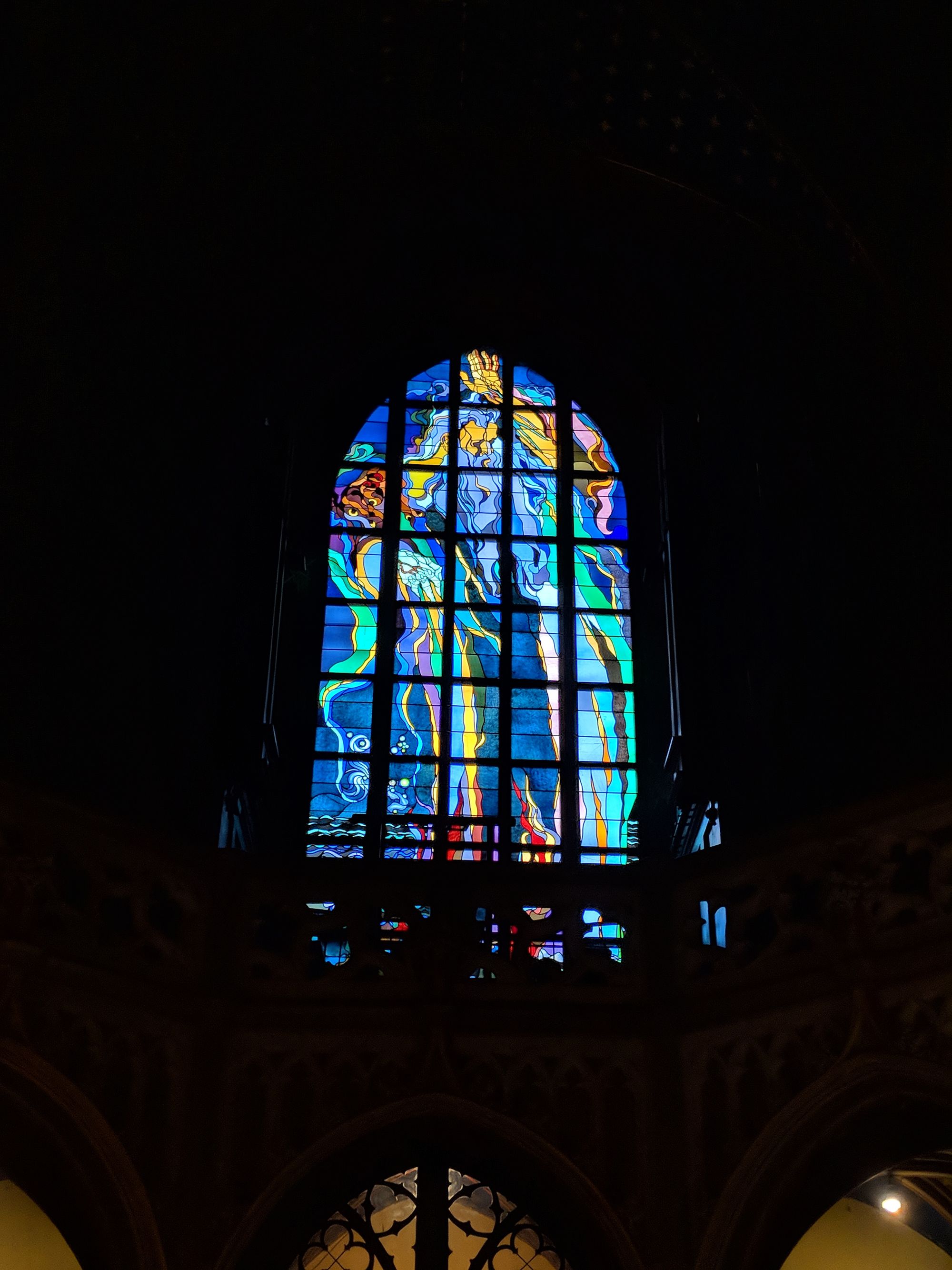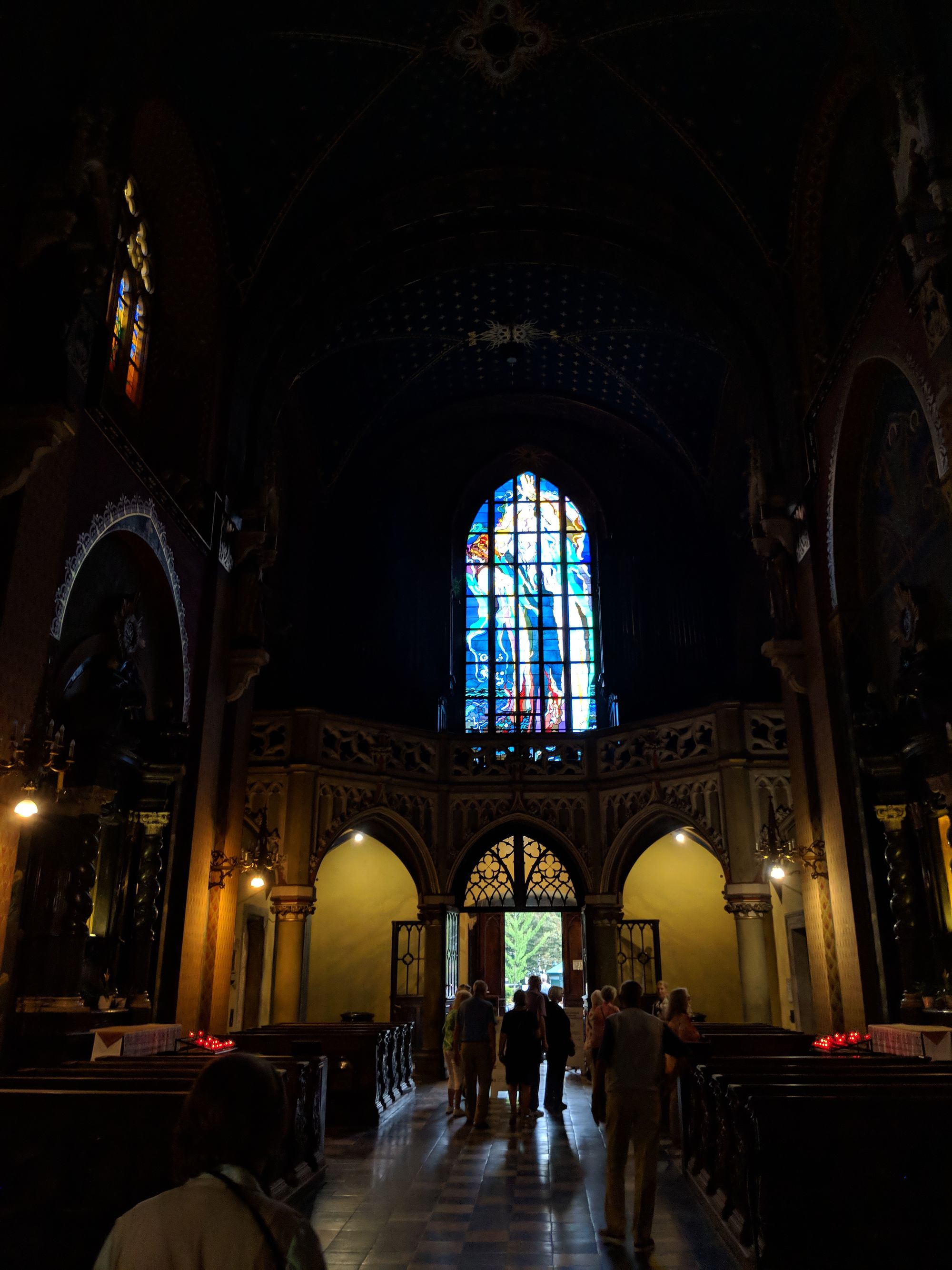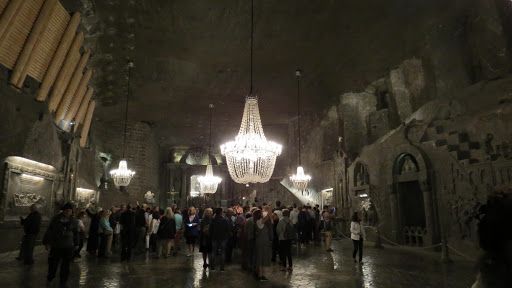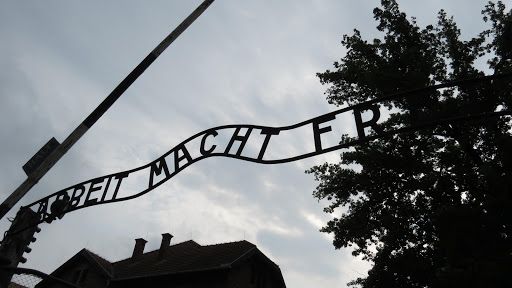Day 8, Of Salt Mines & Time Travel (Sept 2)
Our last day in Poland... Boy, am I exhausted. My mom's pedometer says we've walked approximately 4 miles each day. Today, I'm sure I walked 6 miles! And, then I had to pack afterwards... and wake up at 2am tomorrow for our 6am flight home. But, it was another rockin' day!
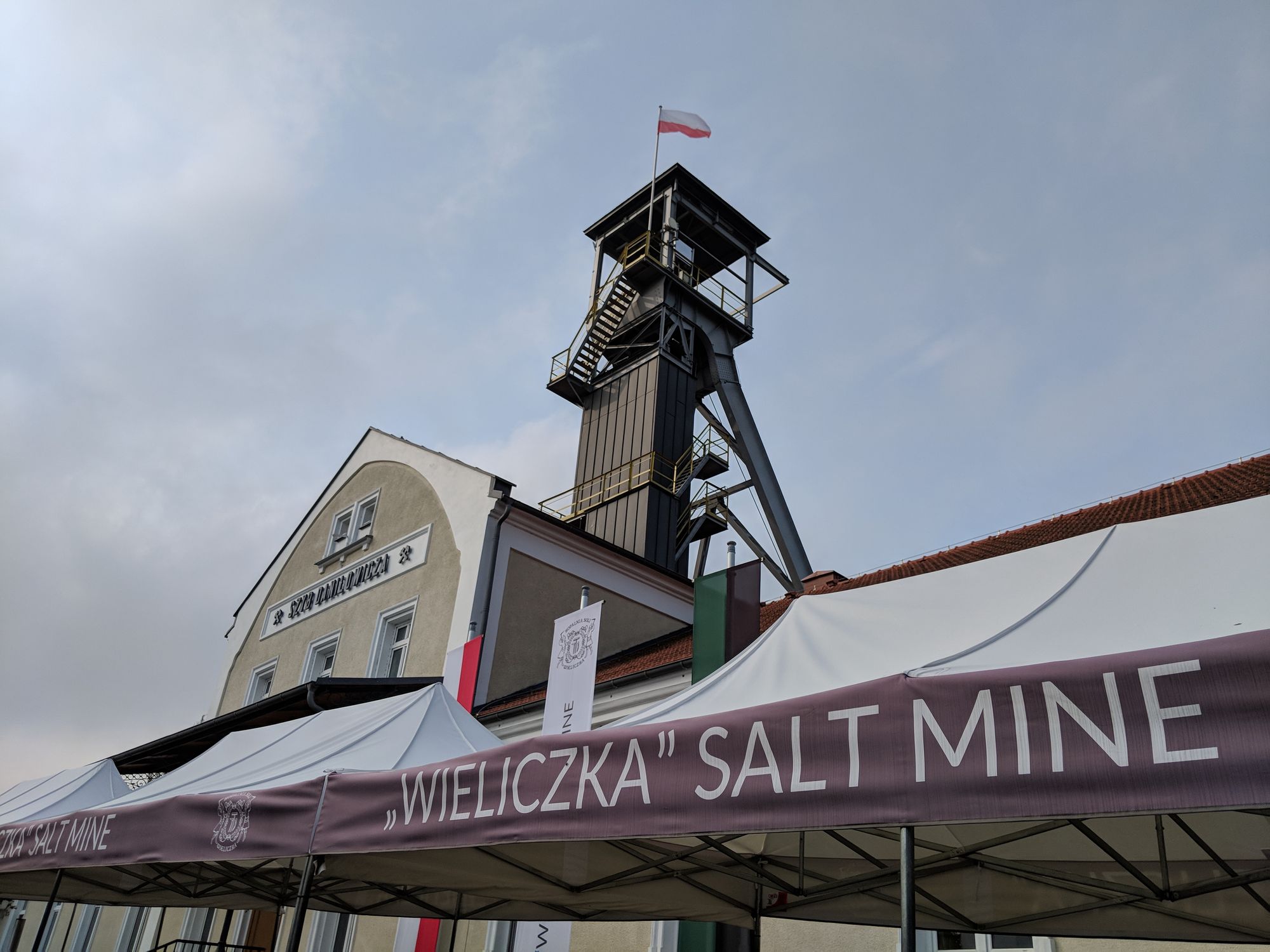
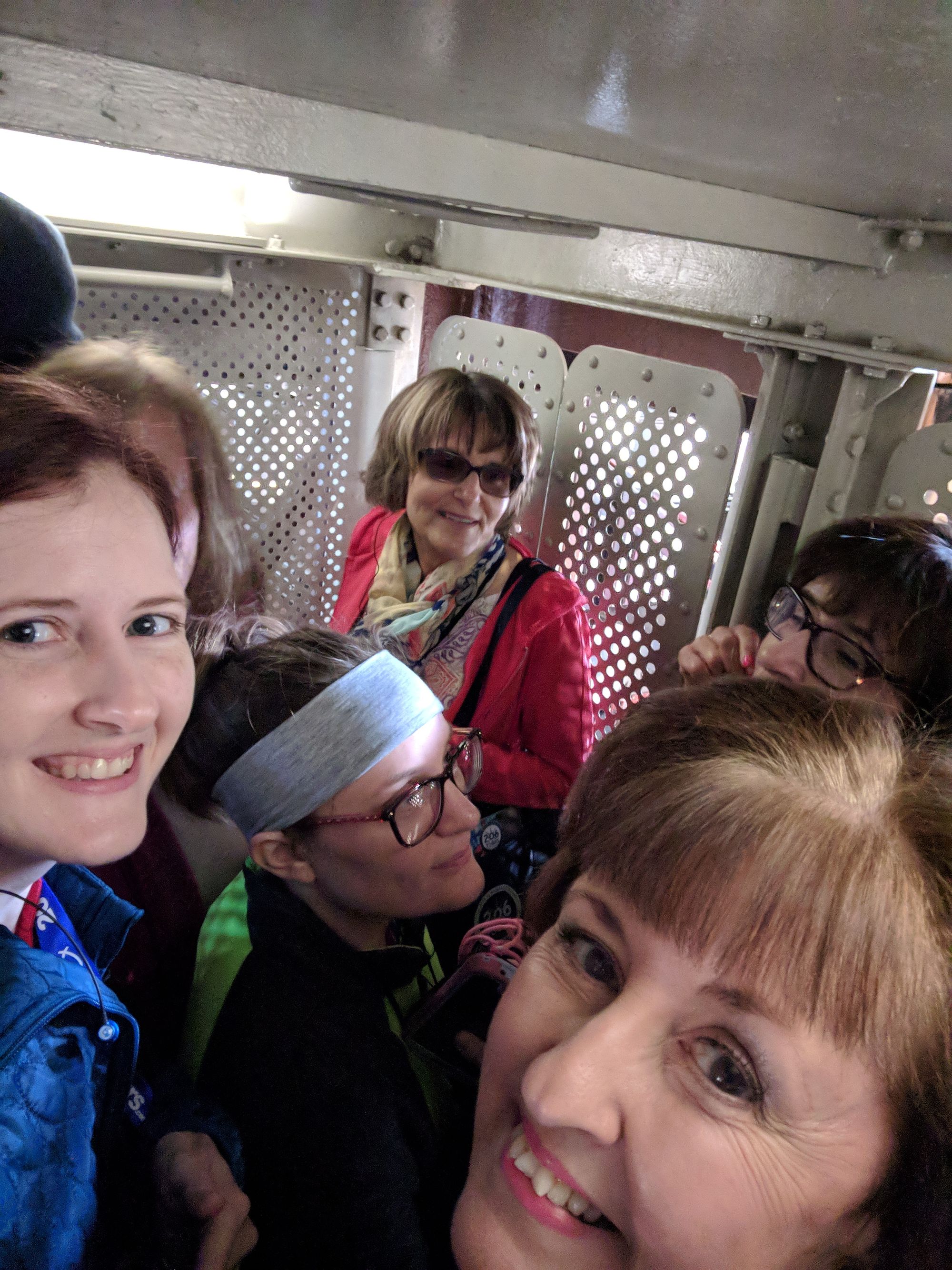
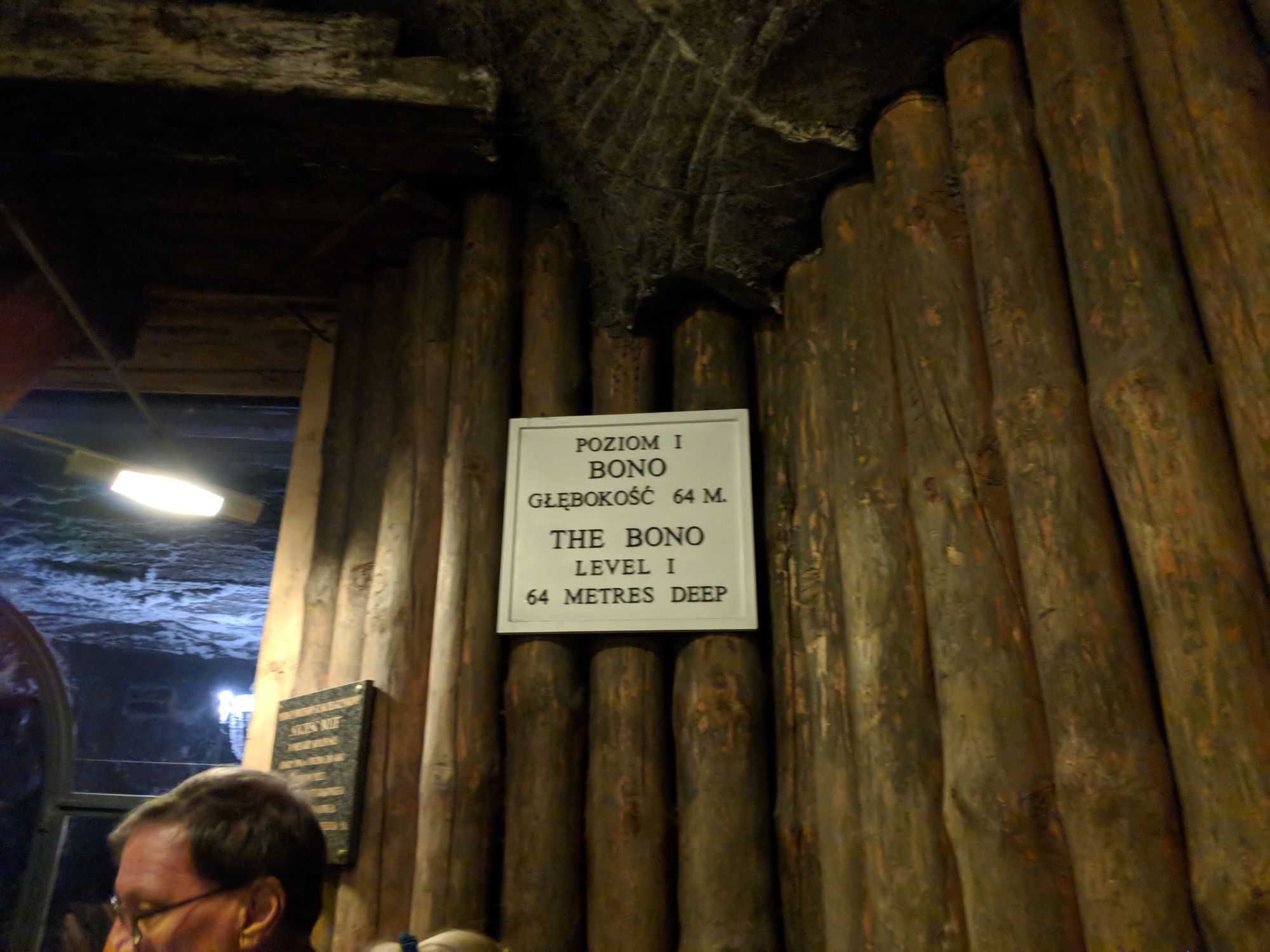
We began by delving deep into the bowels of the Earth in two or three leveled mining elevators used by the miners themselves! We're really crammed in there! Closer than at Jasna Gora Monastery.
I've been in a German salt mine before, and a coal mine in Pennsylvania, but this mine in Wieliczka tops both (except for the awesome, long slide we got to go down in the German salt mine...).
Until the mid 1990s, salt had been continually mined here for 700 years, also making this the oldest European mine. Now, the only salt production comes from evaporating the water that seeps from the within it. I mean, what else can you do with salty water in a land-locked area?
This mine spans for kilometers underground around Wieliczka, and other cities/towns must consult the mine/geologists/engineers before creating sub-terrainian structures.
One of the largest draws to this mine, however, is the artwork. The miners carved statues of former kings, biblical icons, gnomes, stuff for kids (which is part of a different tour), 3 chapels, and an entire cathedral, all carved of salt and contained within the mine itself. Heck, even the rope holders for cordoning off inaccessible areas are made of salt!
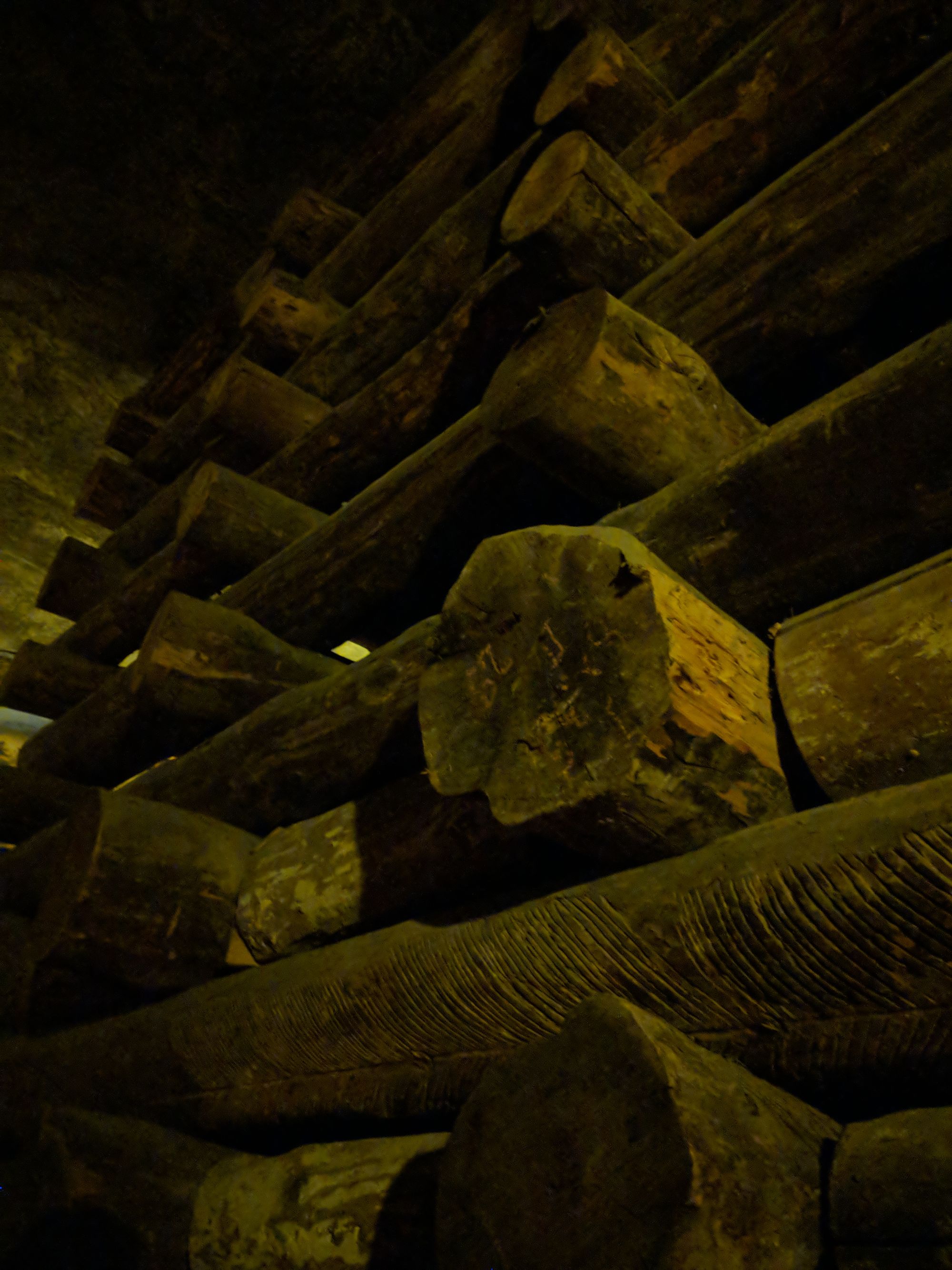

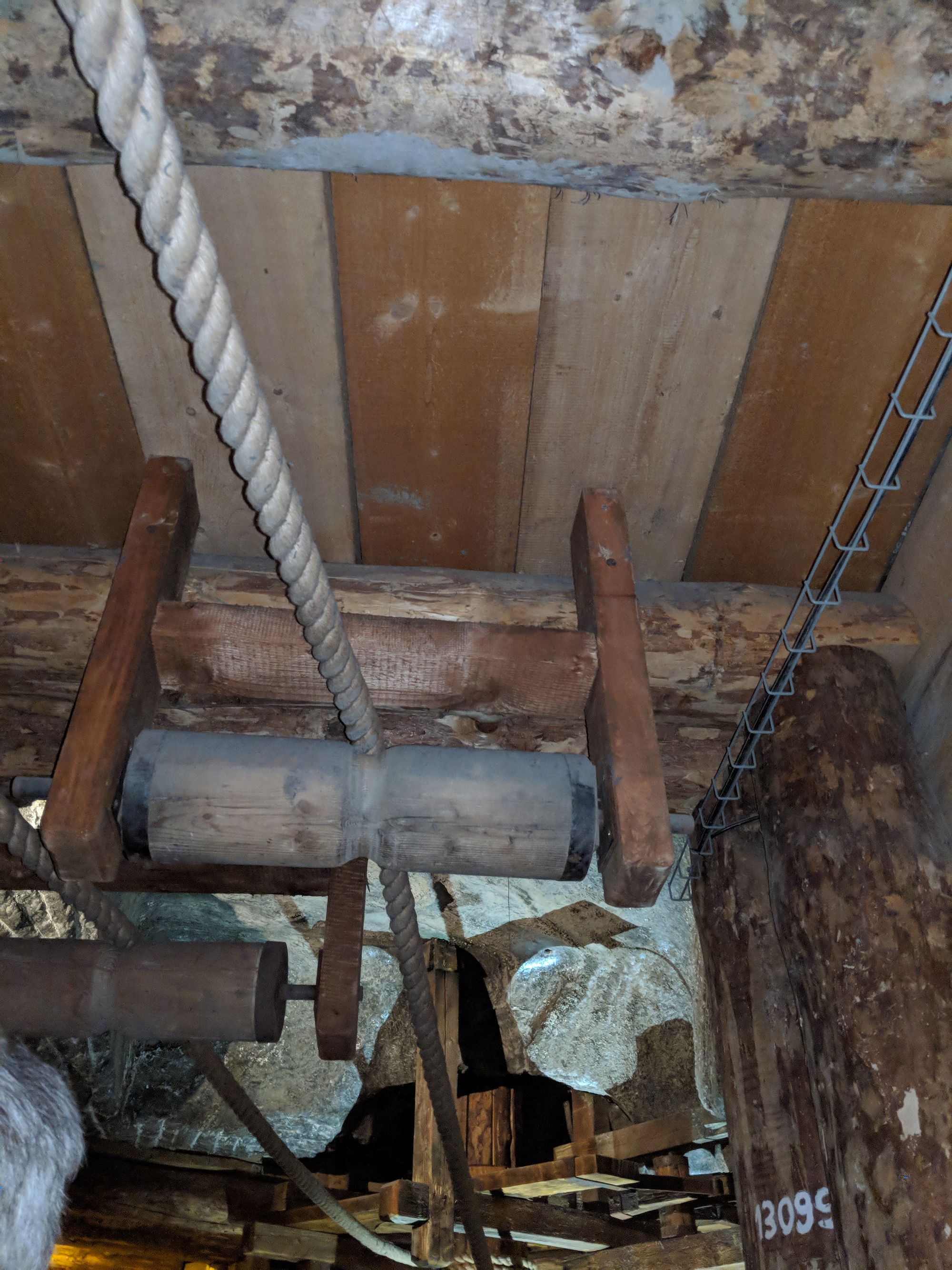
Pulley system used to transport materials horizontally
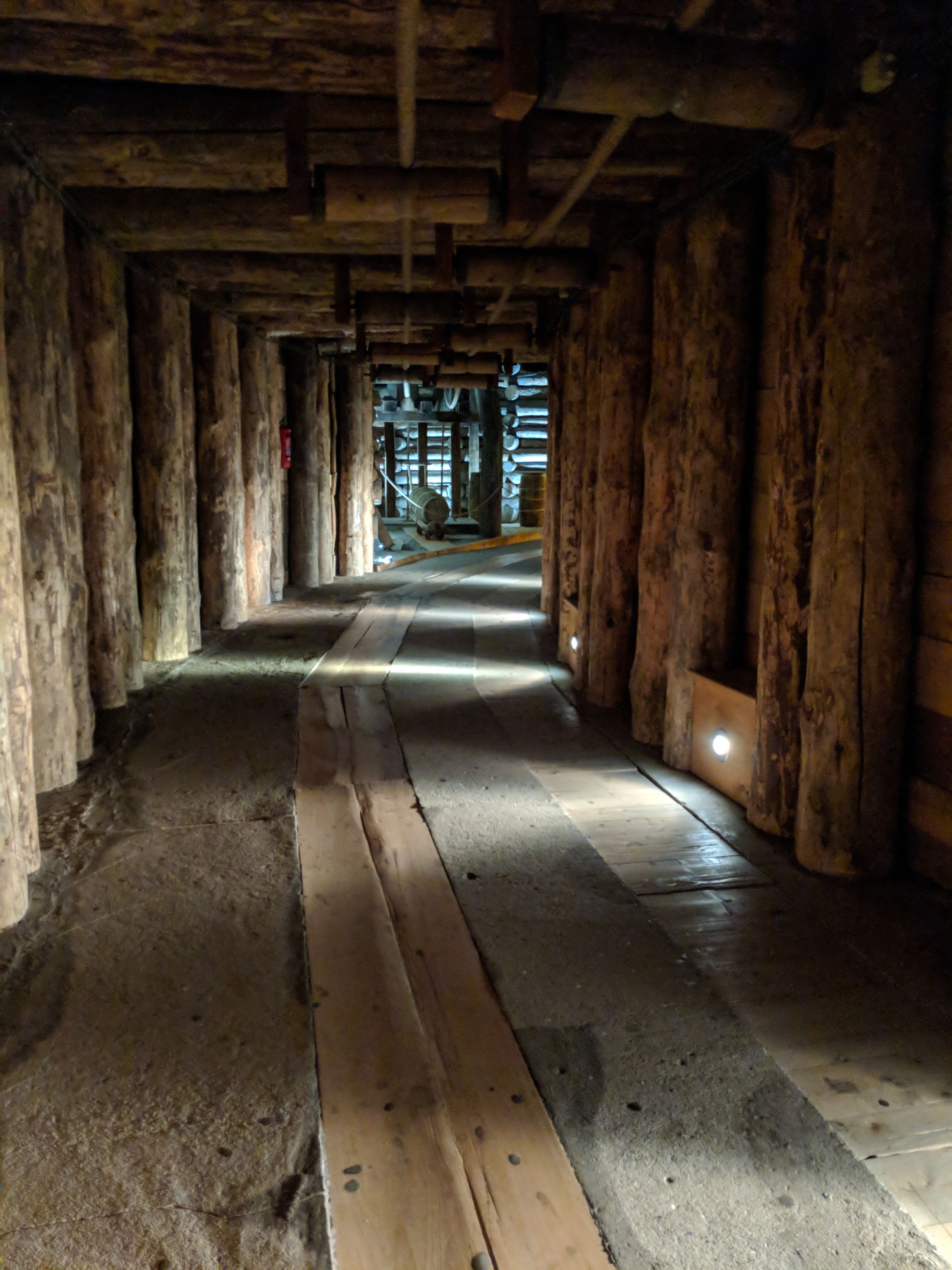
The wooden rails in the salt-floor guided the carts
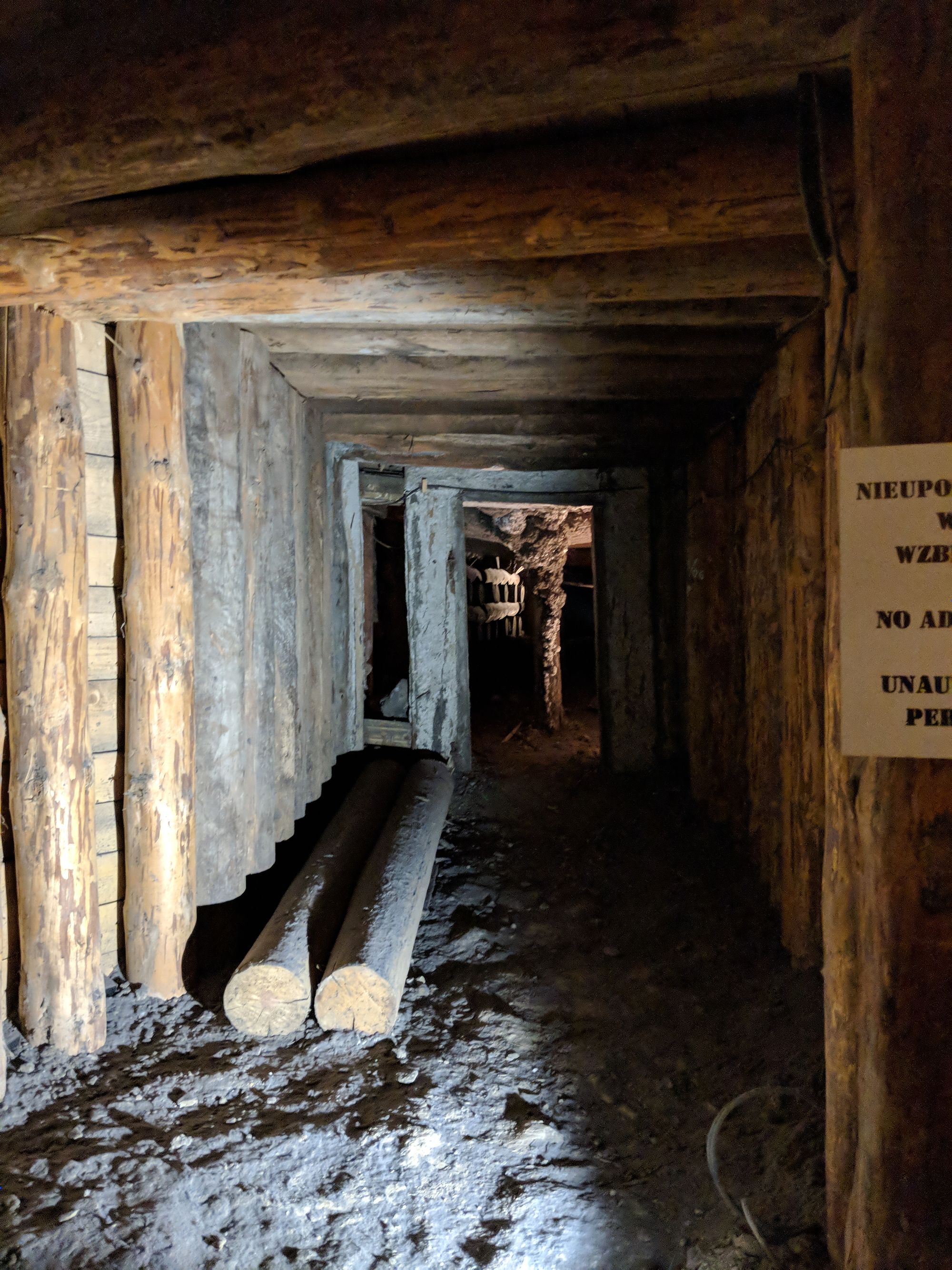

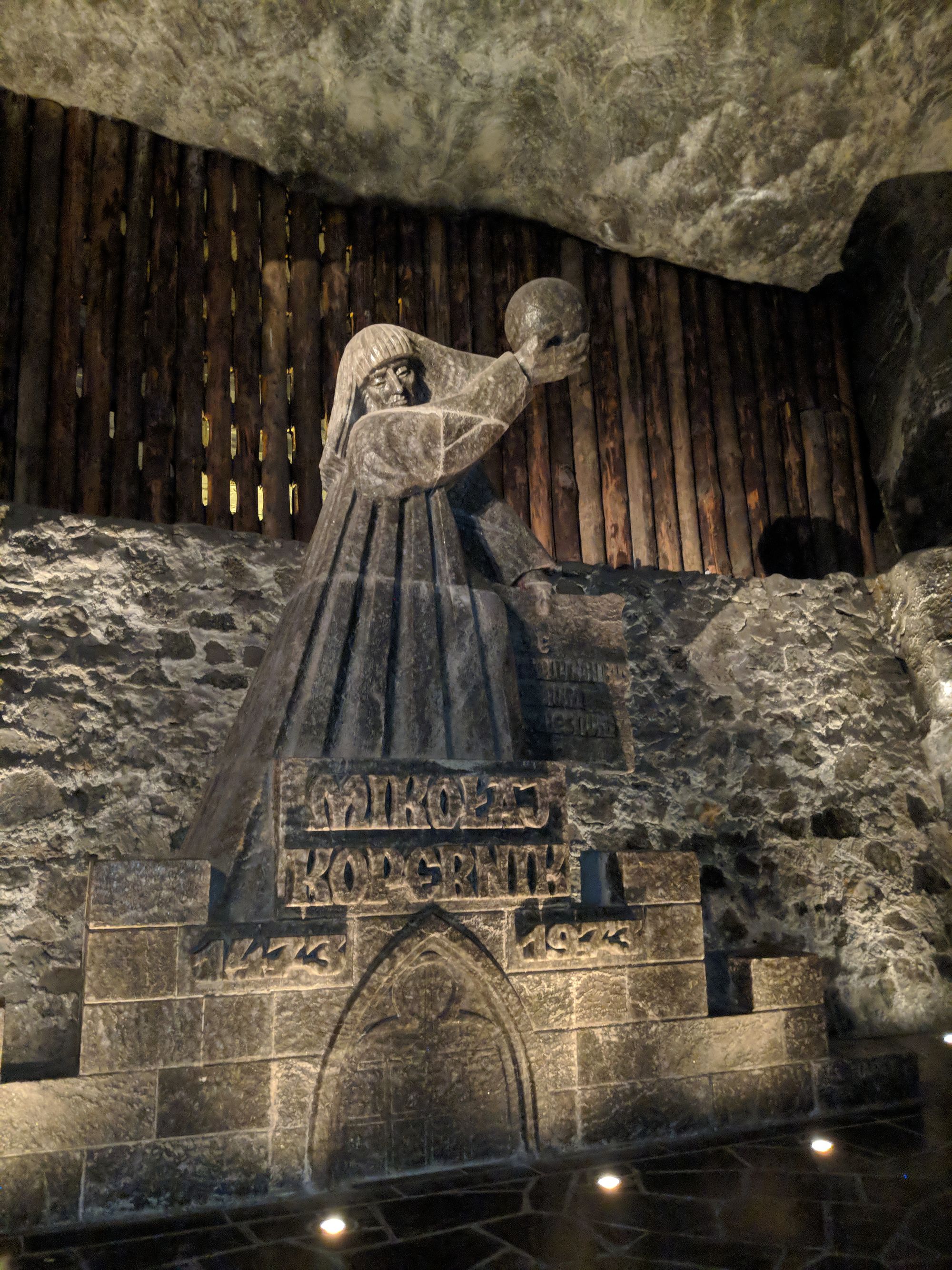
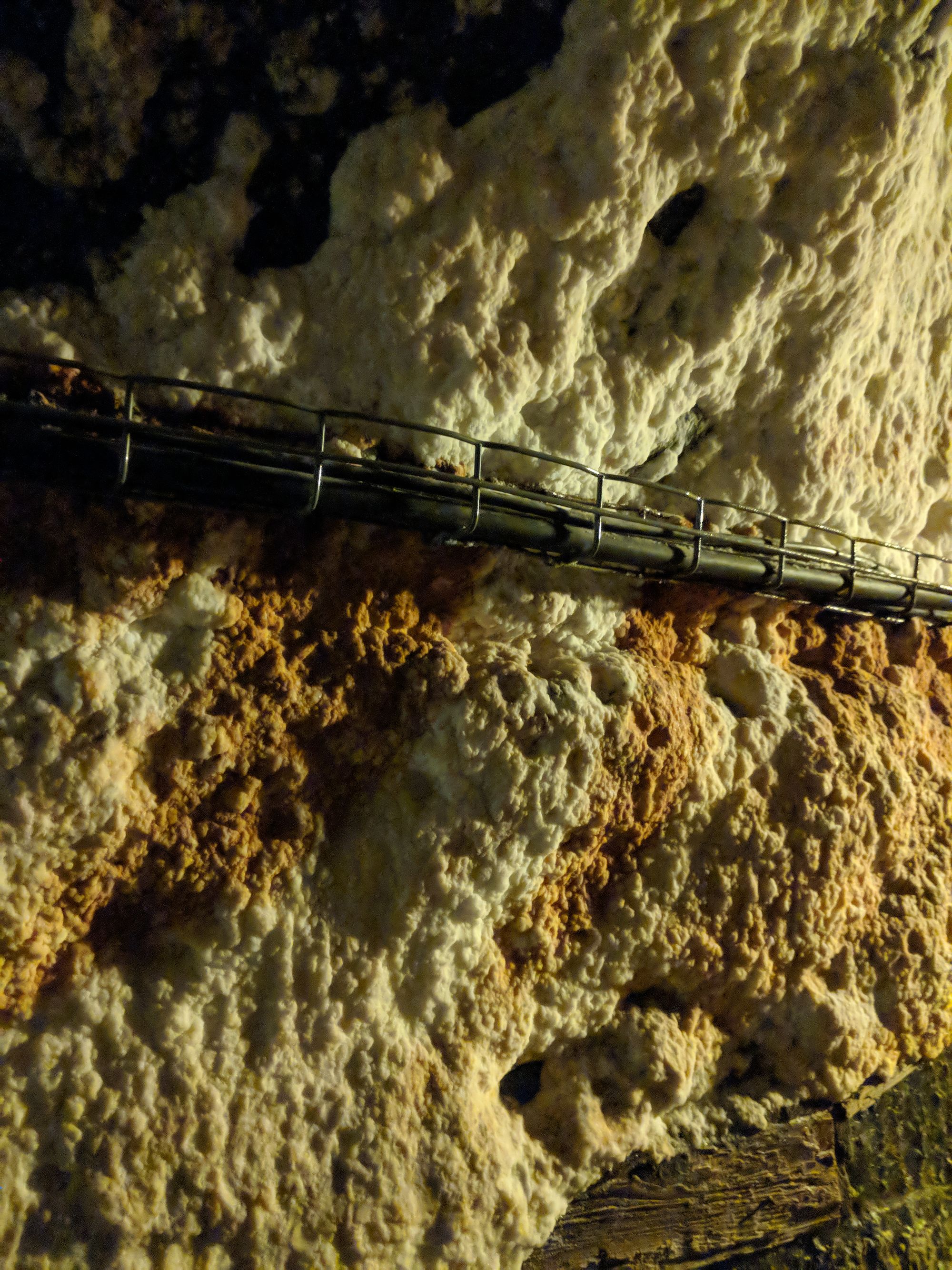
No flash used; "cauliflowers" are white, and formed by salts evaporated by water. All rock salt in this mine is gray. Different minerals color salt, as you can see by this rust.
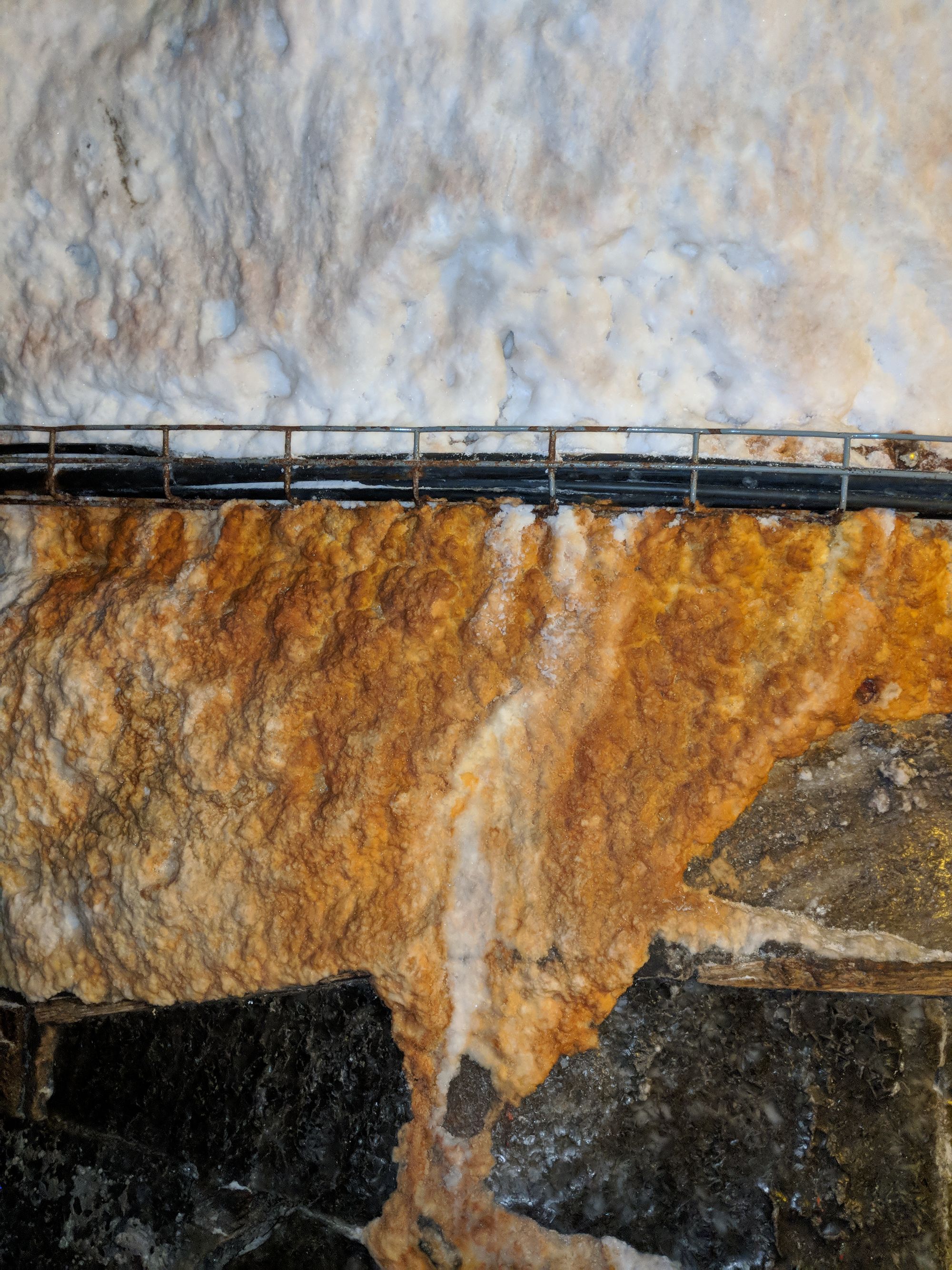
Flash used; "cauliflowers" are white, and formed by salts evaporated by water. All rock salt in this mine is gray. Different minerals color salt, as you can see by this rust.
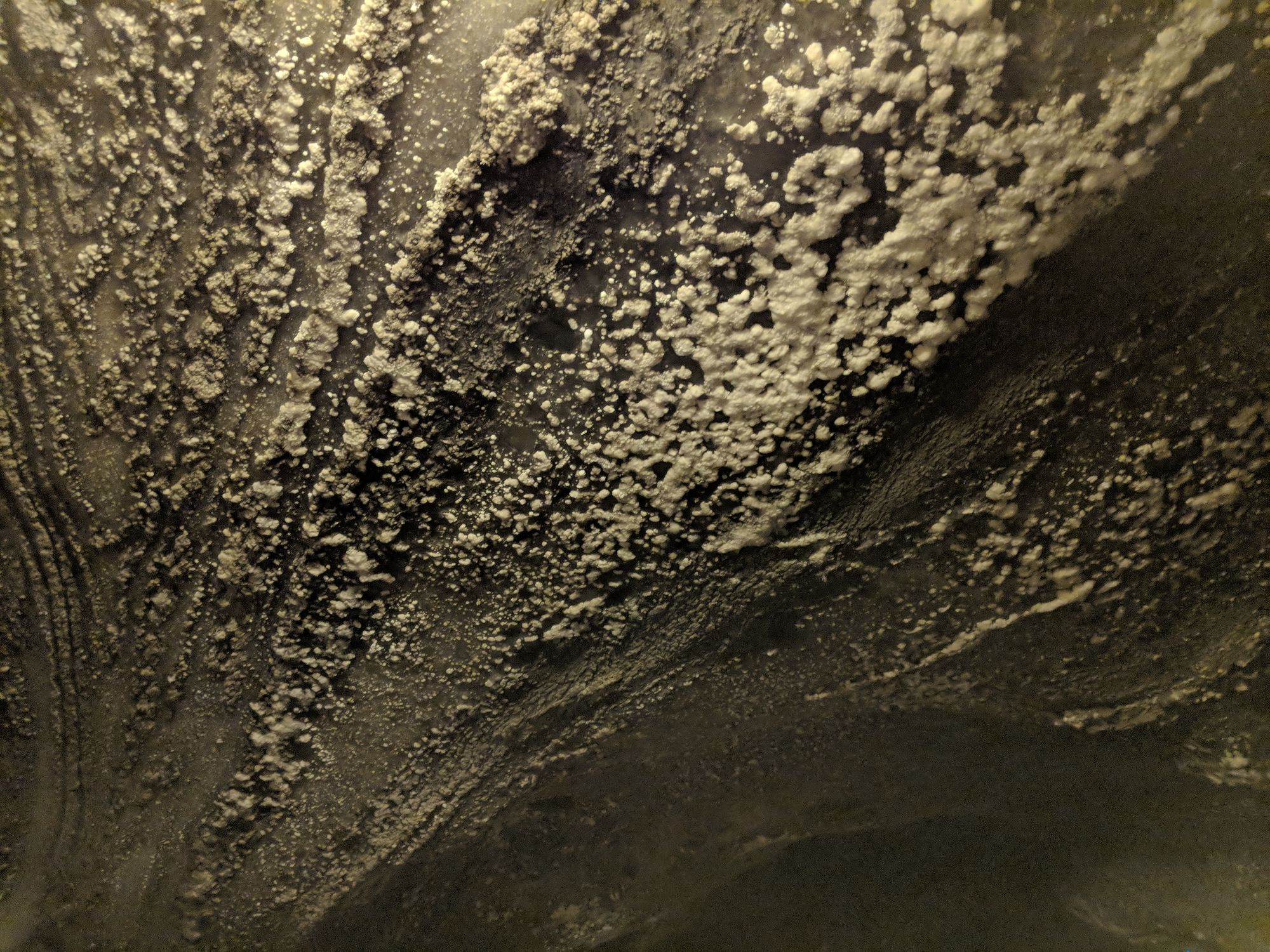
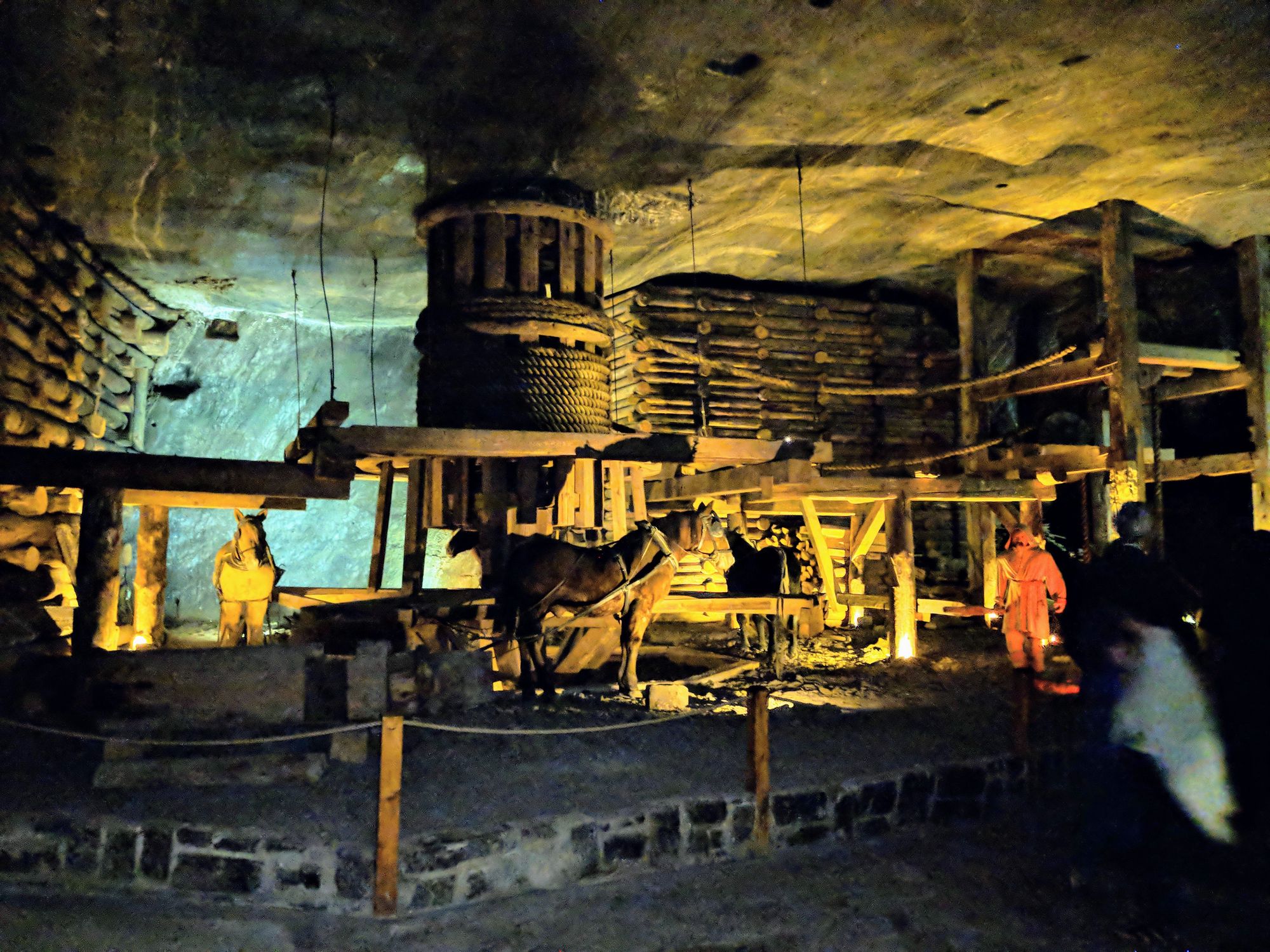
Yes, your eyes are not deceiving you. Those are horses! They lived underground. I believe they controlled the vertical pulley system.
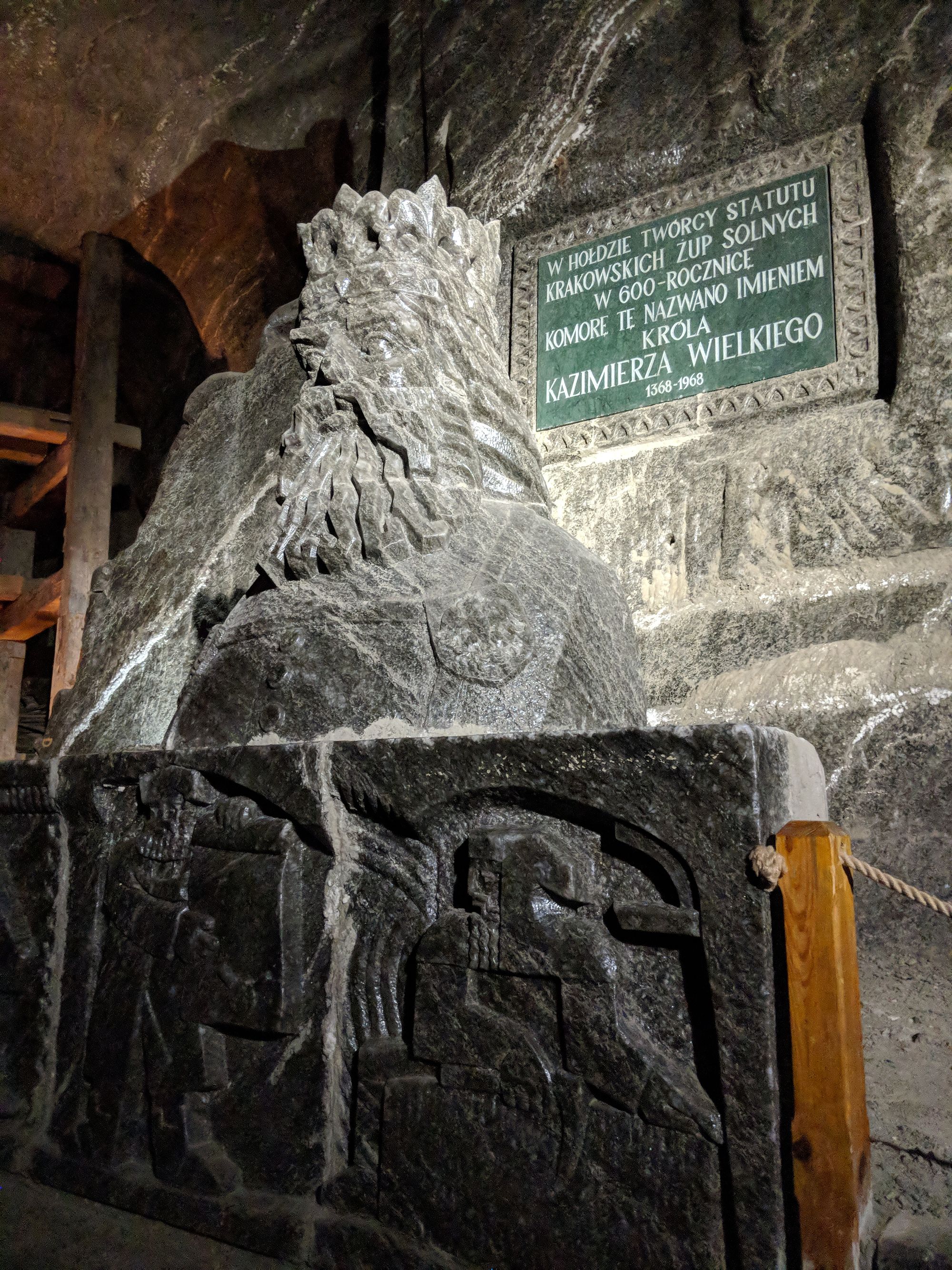
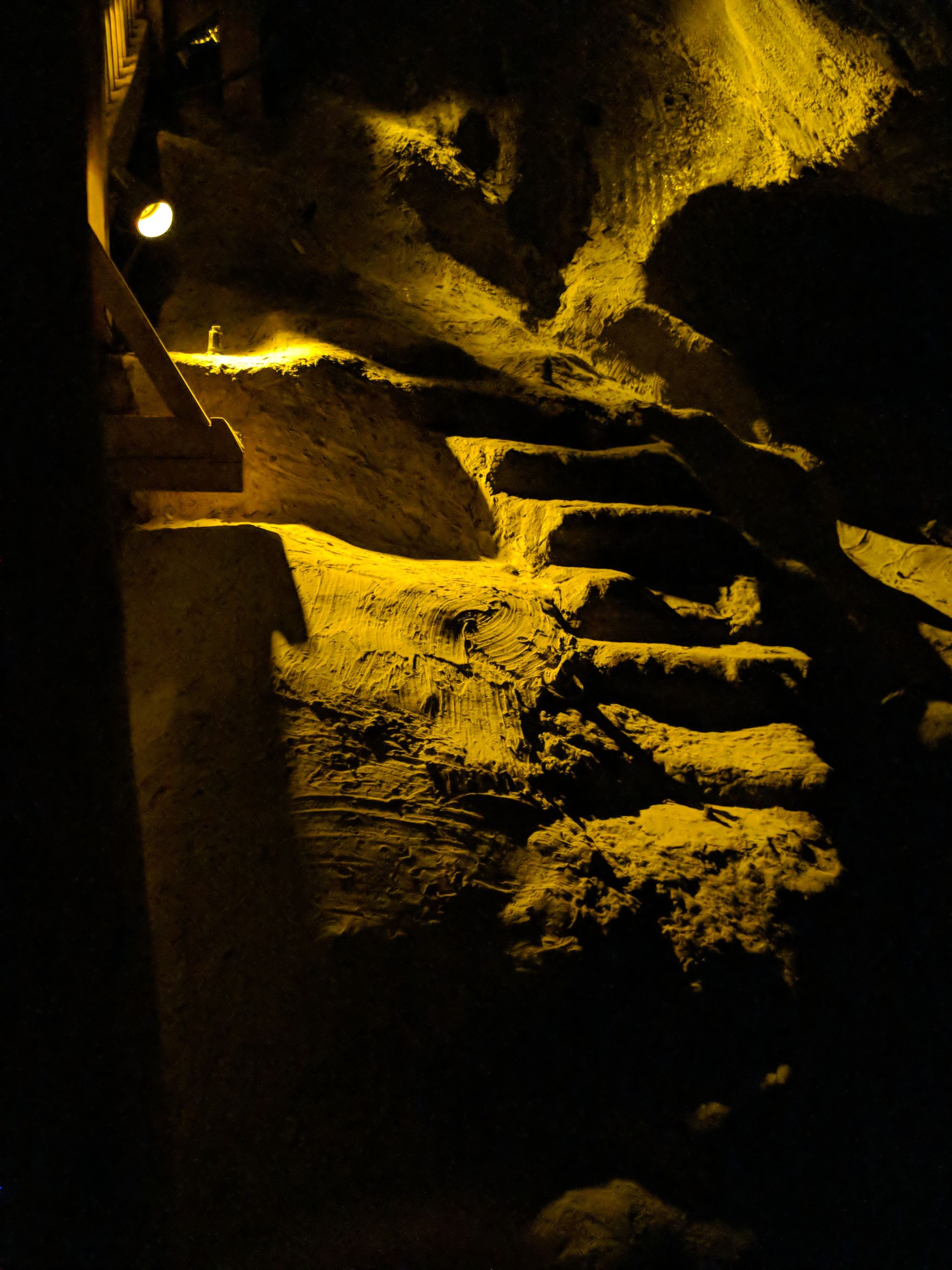
Some original stairs used by miners. A great deal of deaths were due to stairs (being slick; missing footing; worn out)
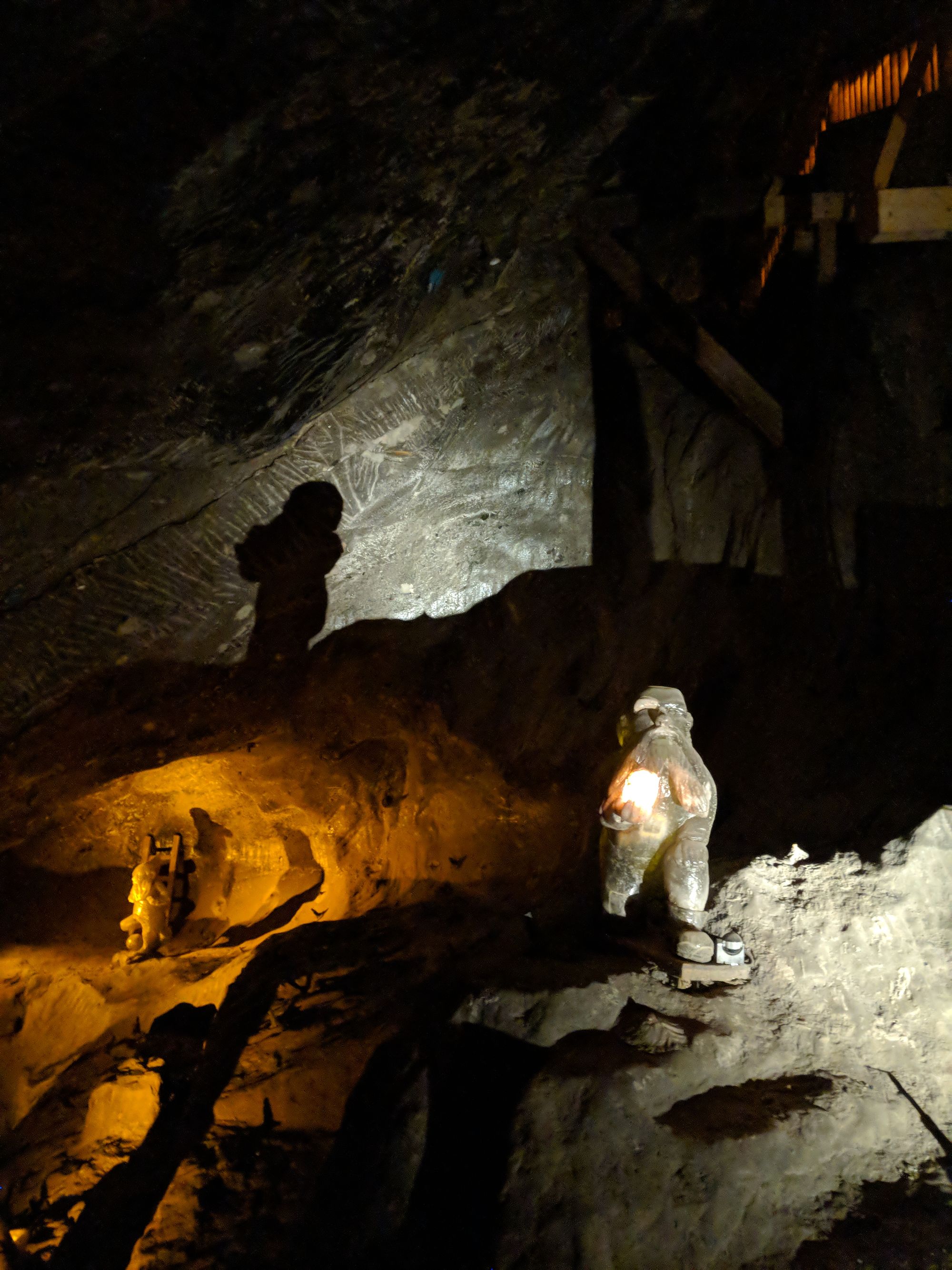
Gnomes!
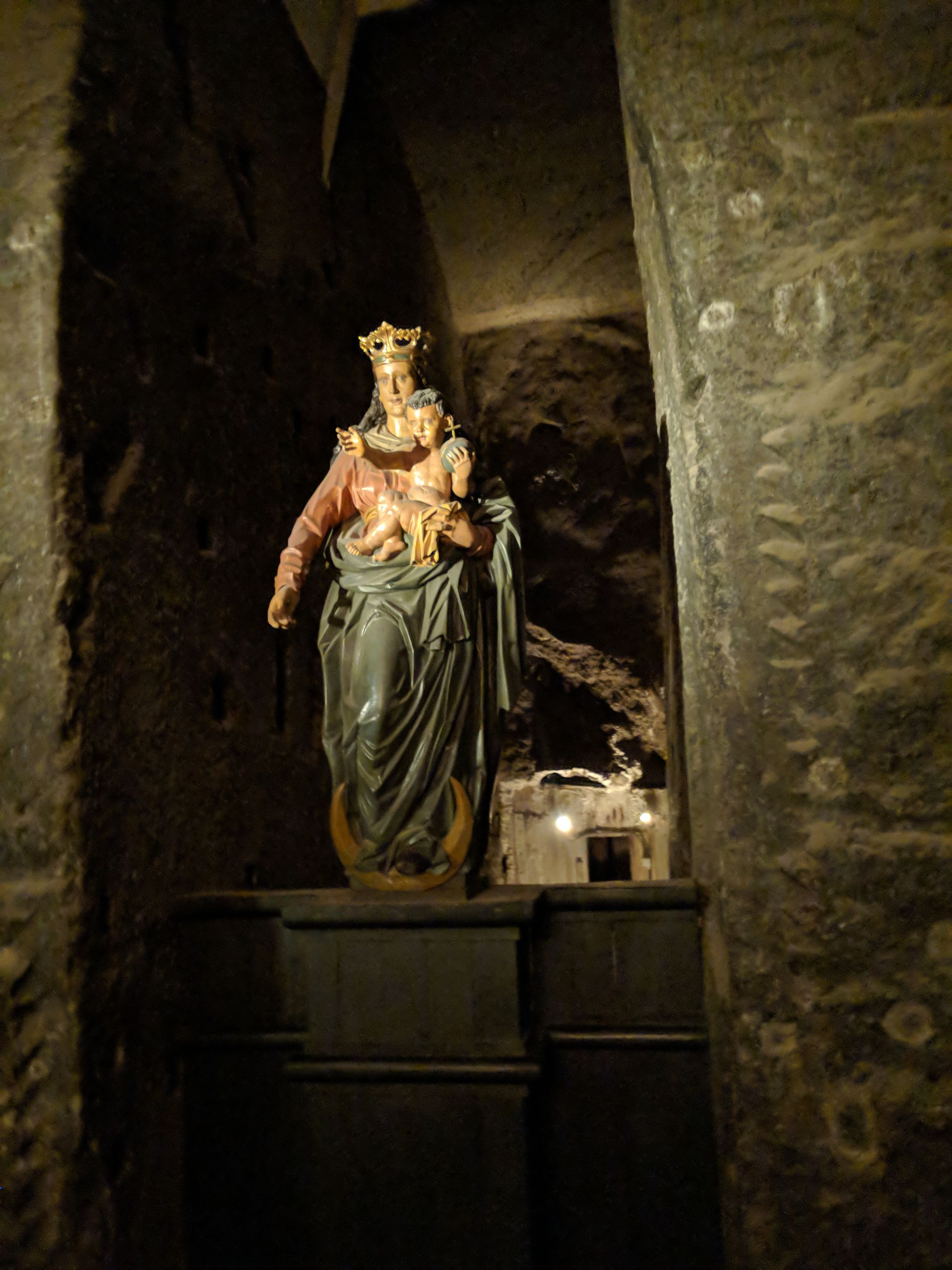
Mary statue in one of the chapels we visited
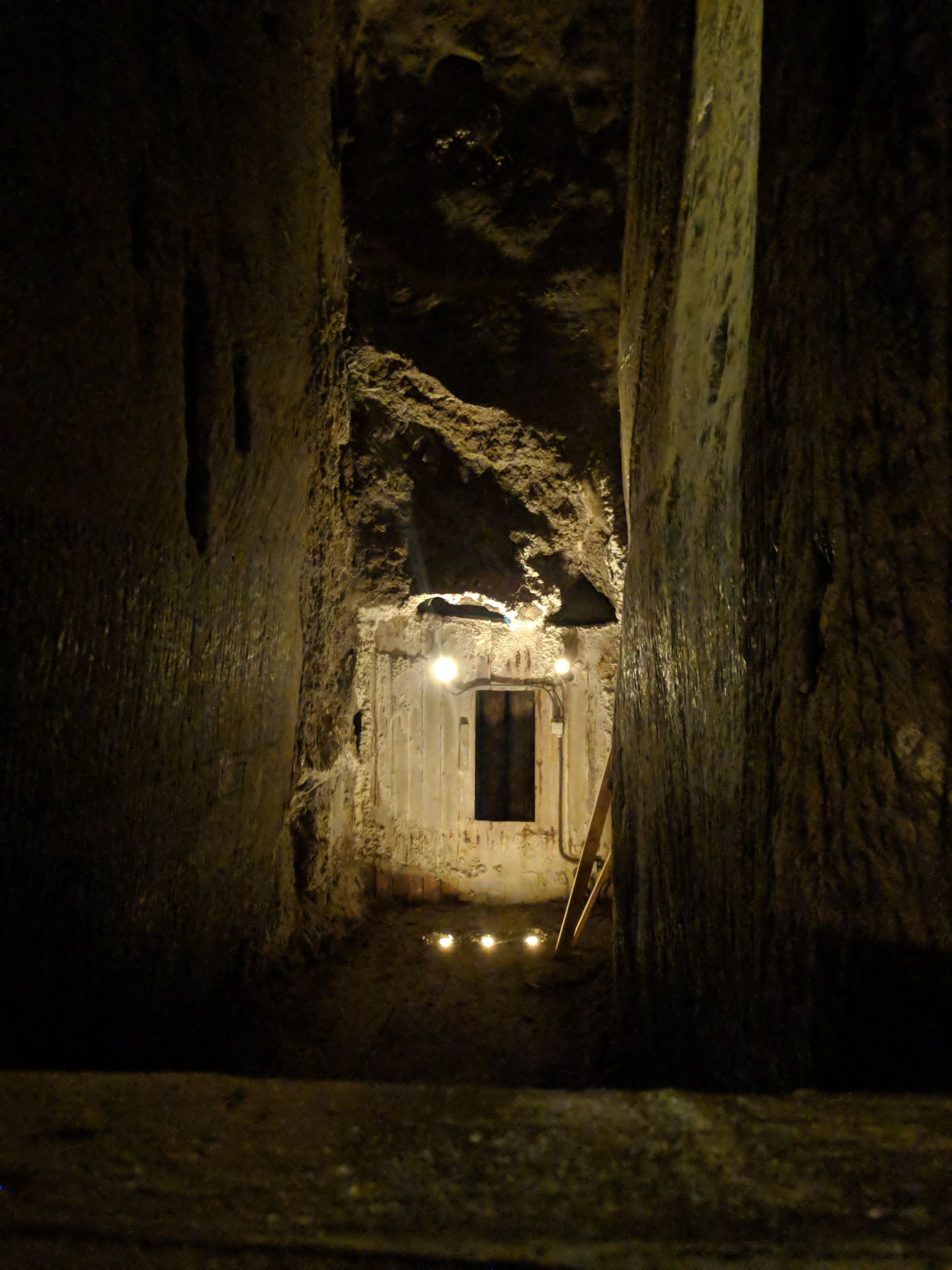
Inquiring minds wanted to know what was behind the Mary statue...
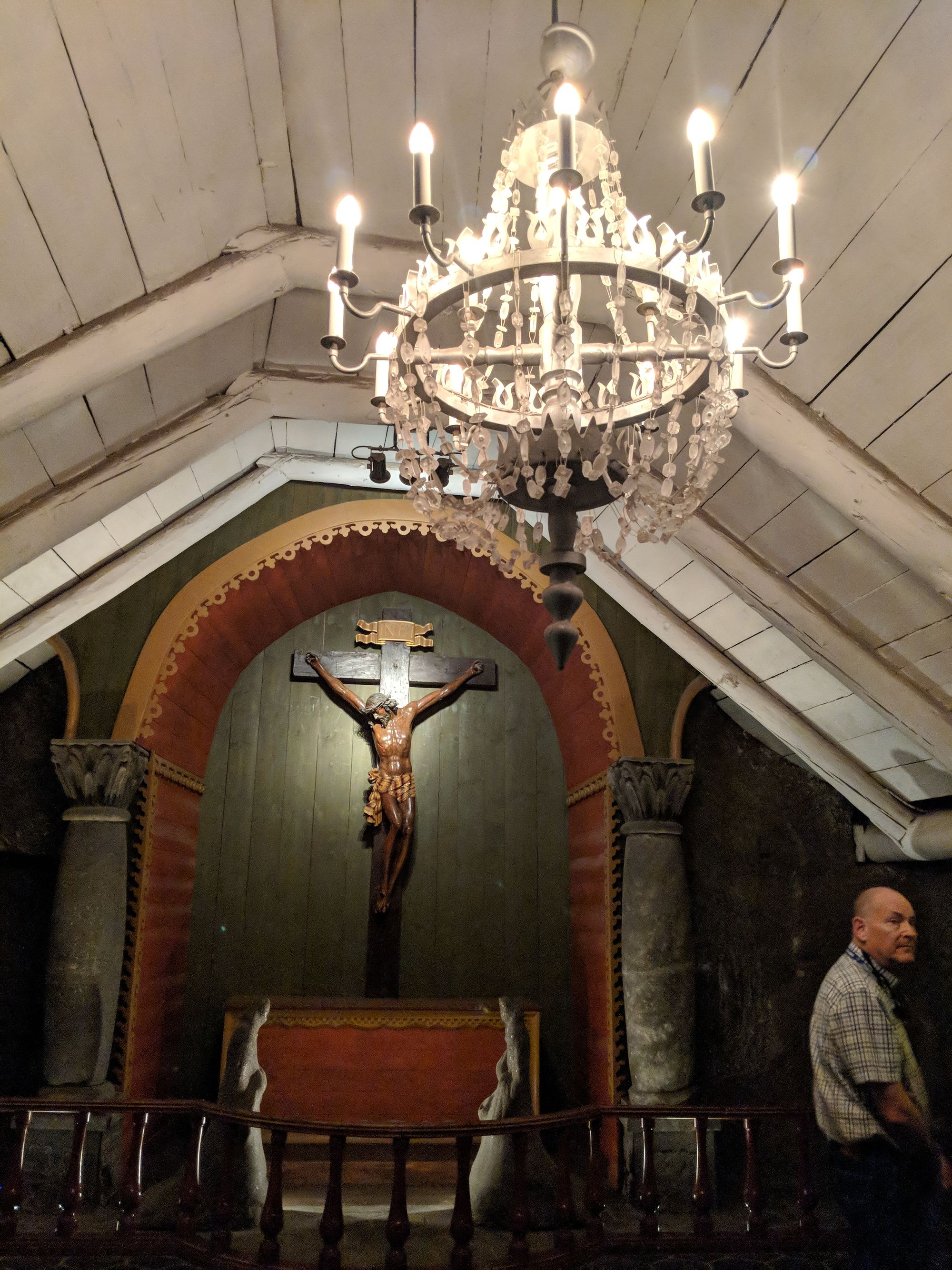
Salt chandelier!
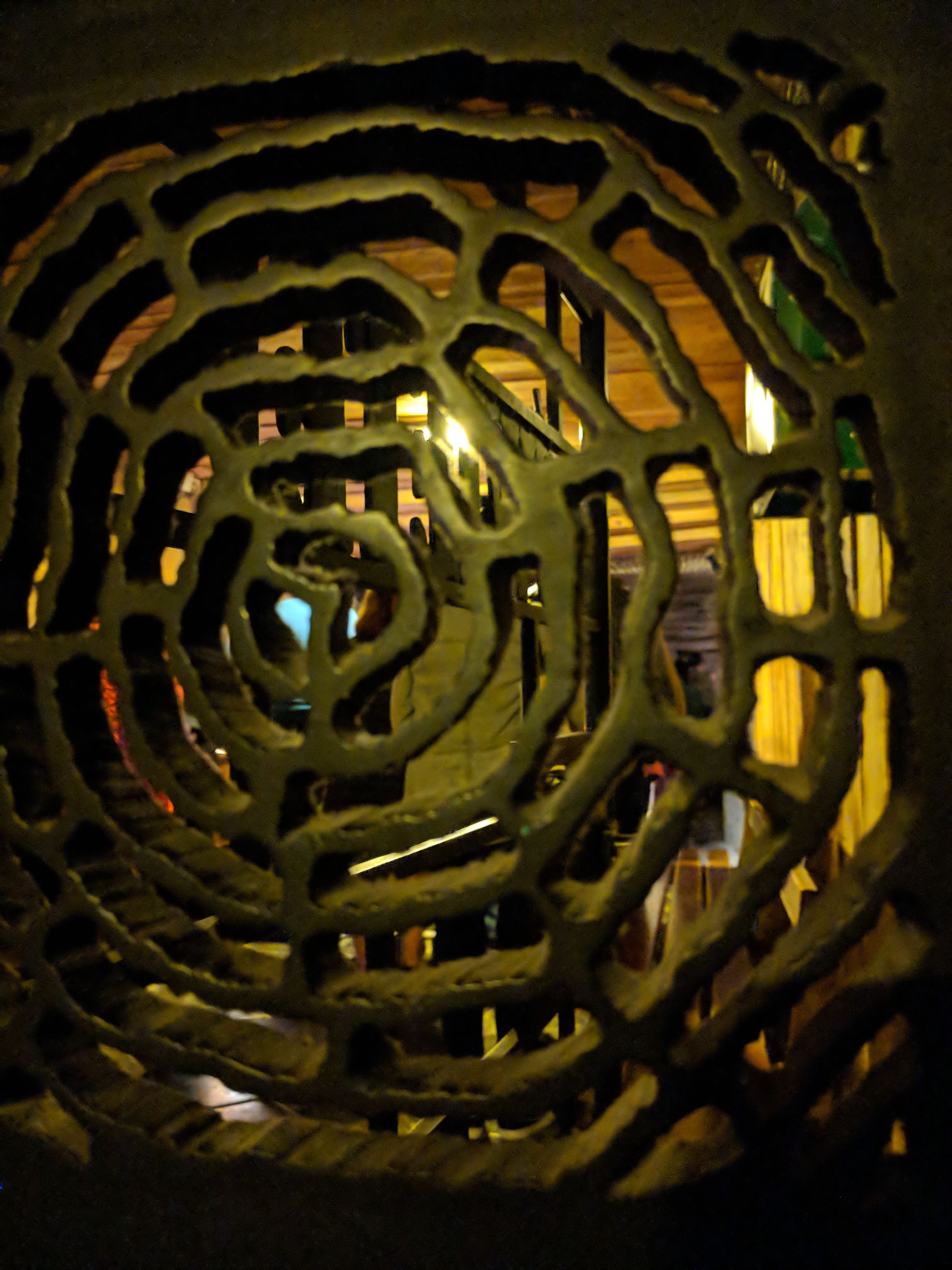
A neat iron grate covering something between walls.
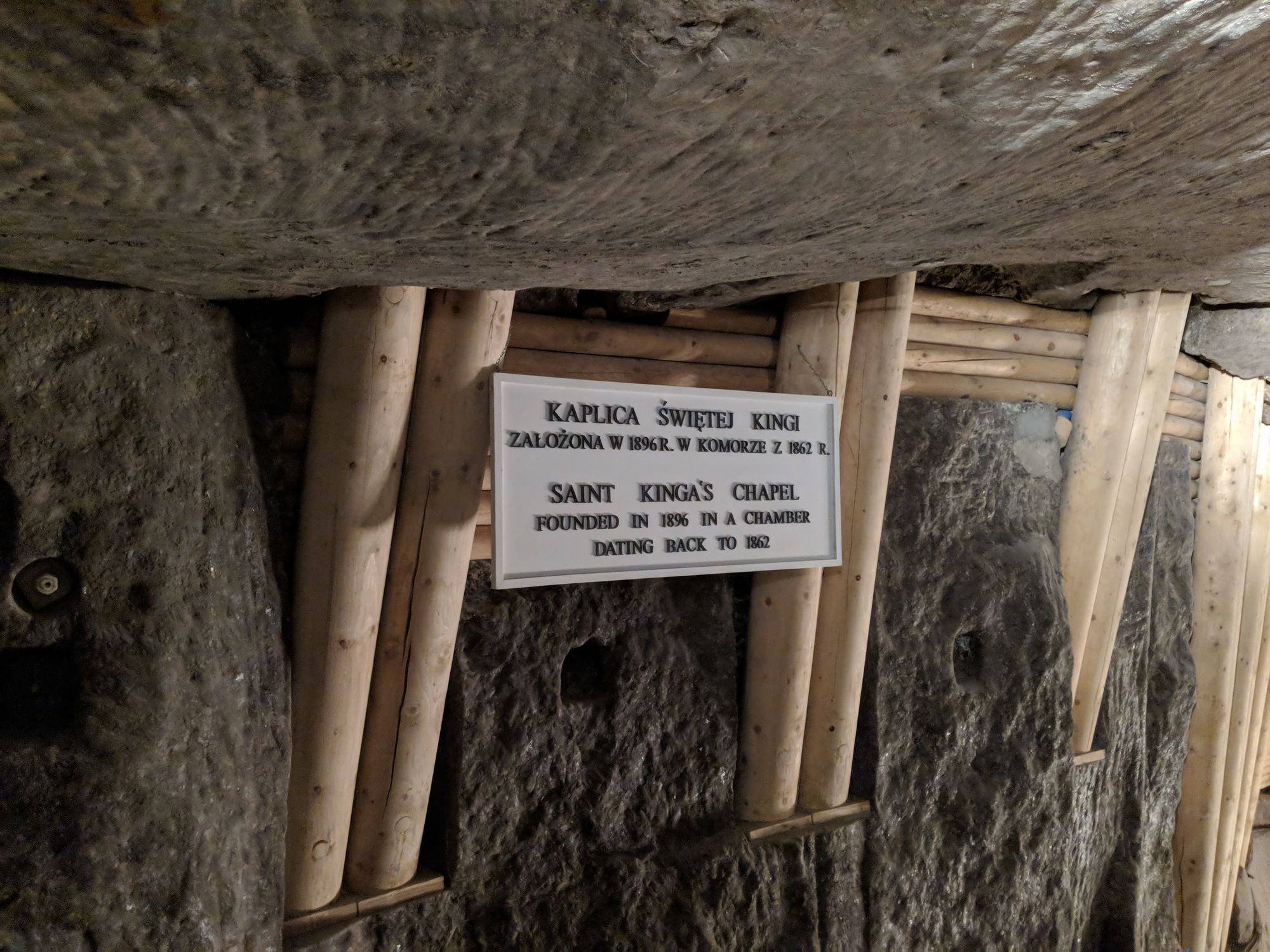
Did I mention that they encourage you to lick the walls? My mom grabbed a photo of me... I hope she includes it in her post! Strangely enough, the wall-salt tasted slightly different than table salt. It's difficult to put into words. It tasted less... salty? Less potent? Like a different "flavor" of salt? Maybe that has to do with whatever mineral stains this salt gray.
I believe my mom licked a wall, but my dad had absolutely no interest. ;)
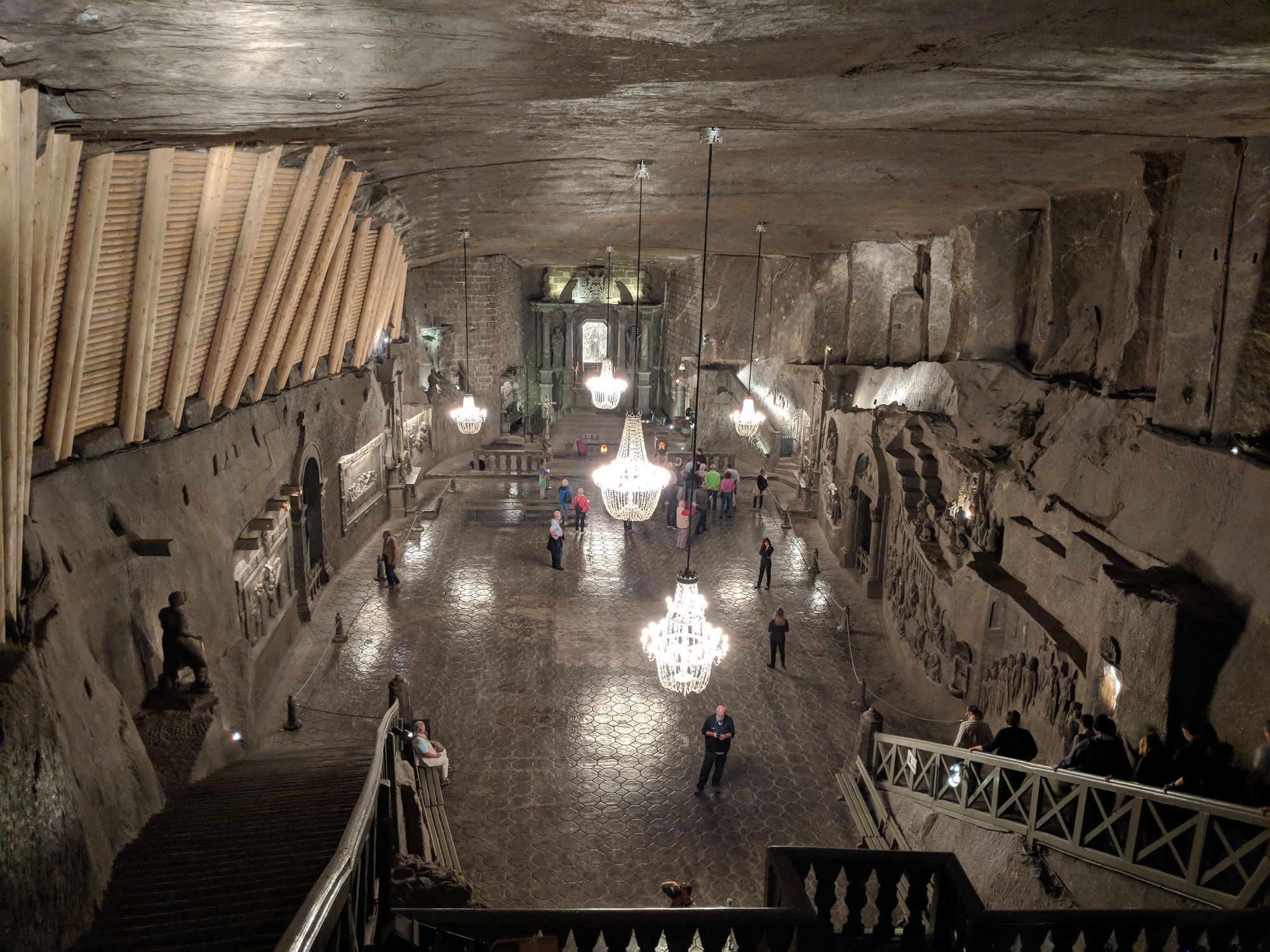
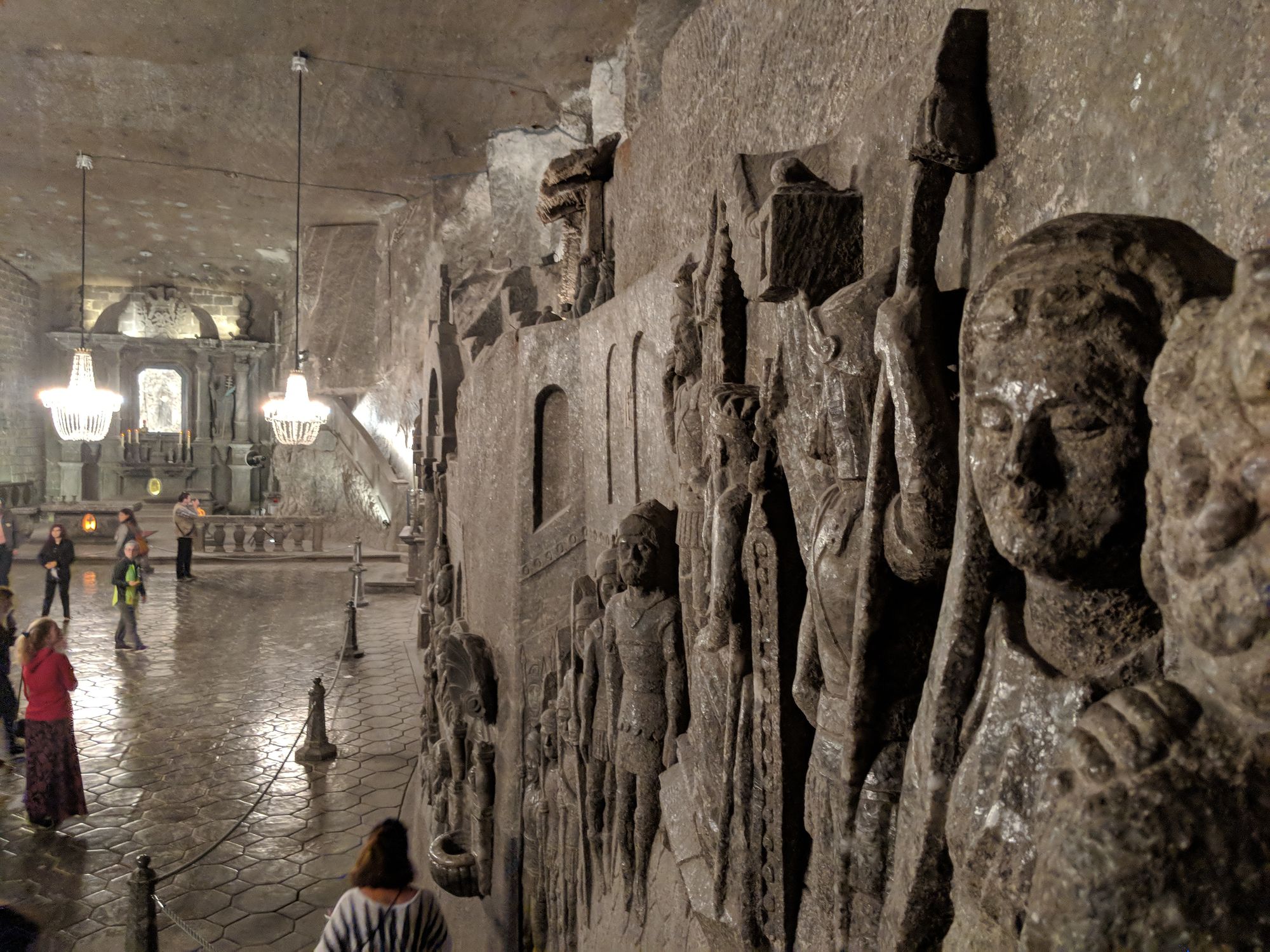
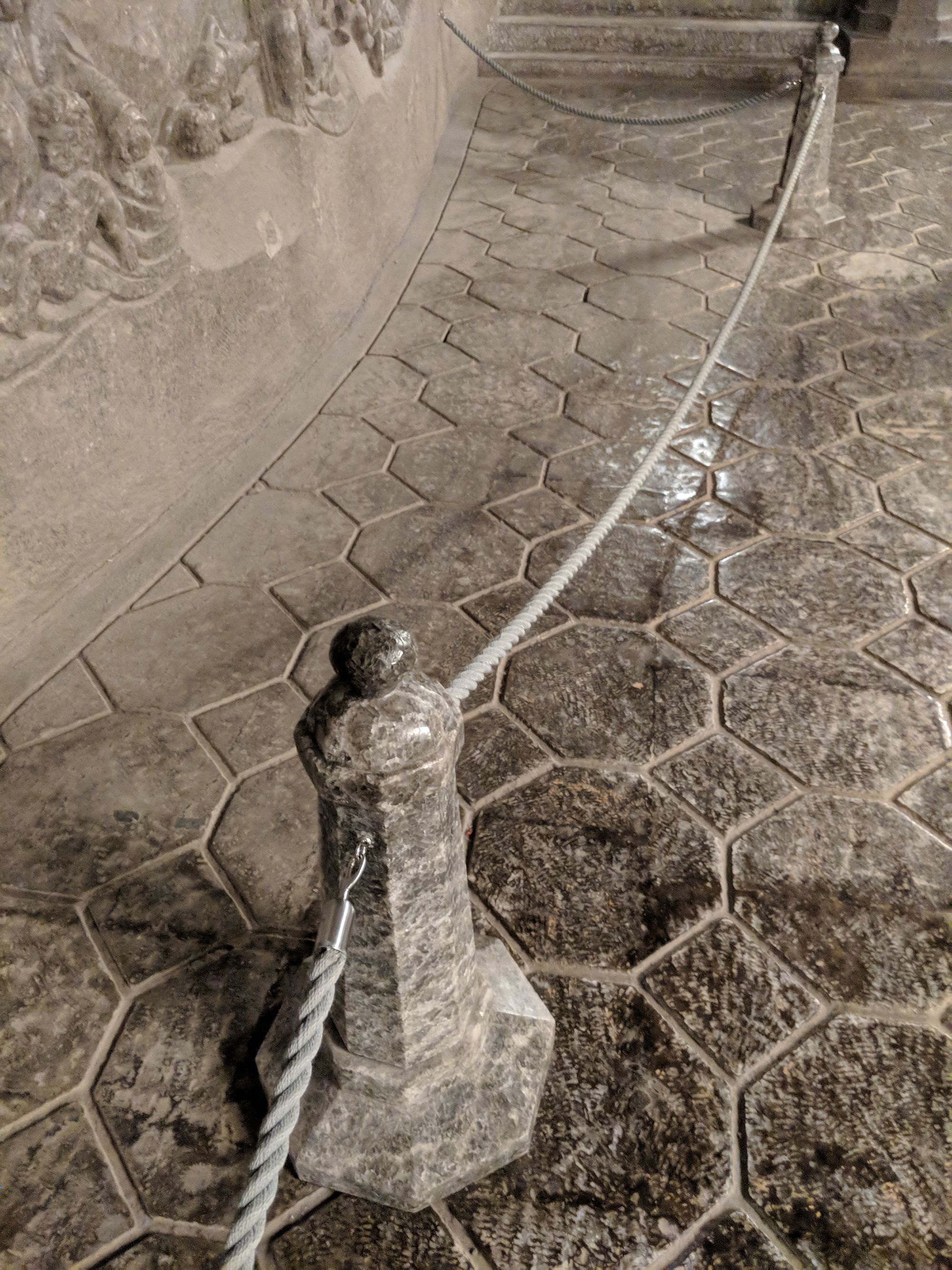
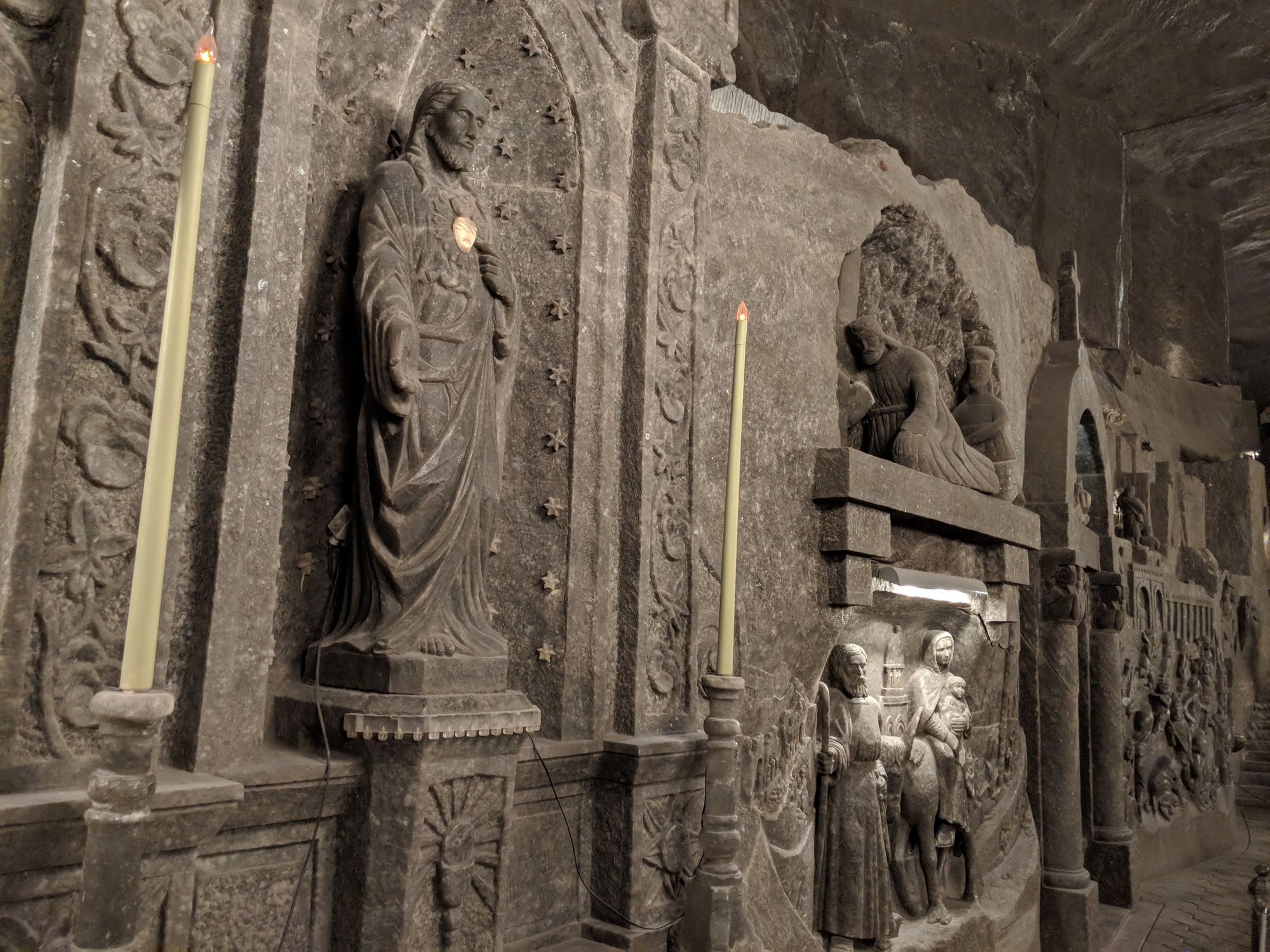
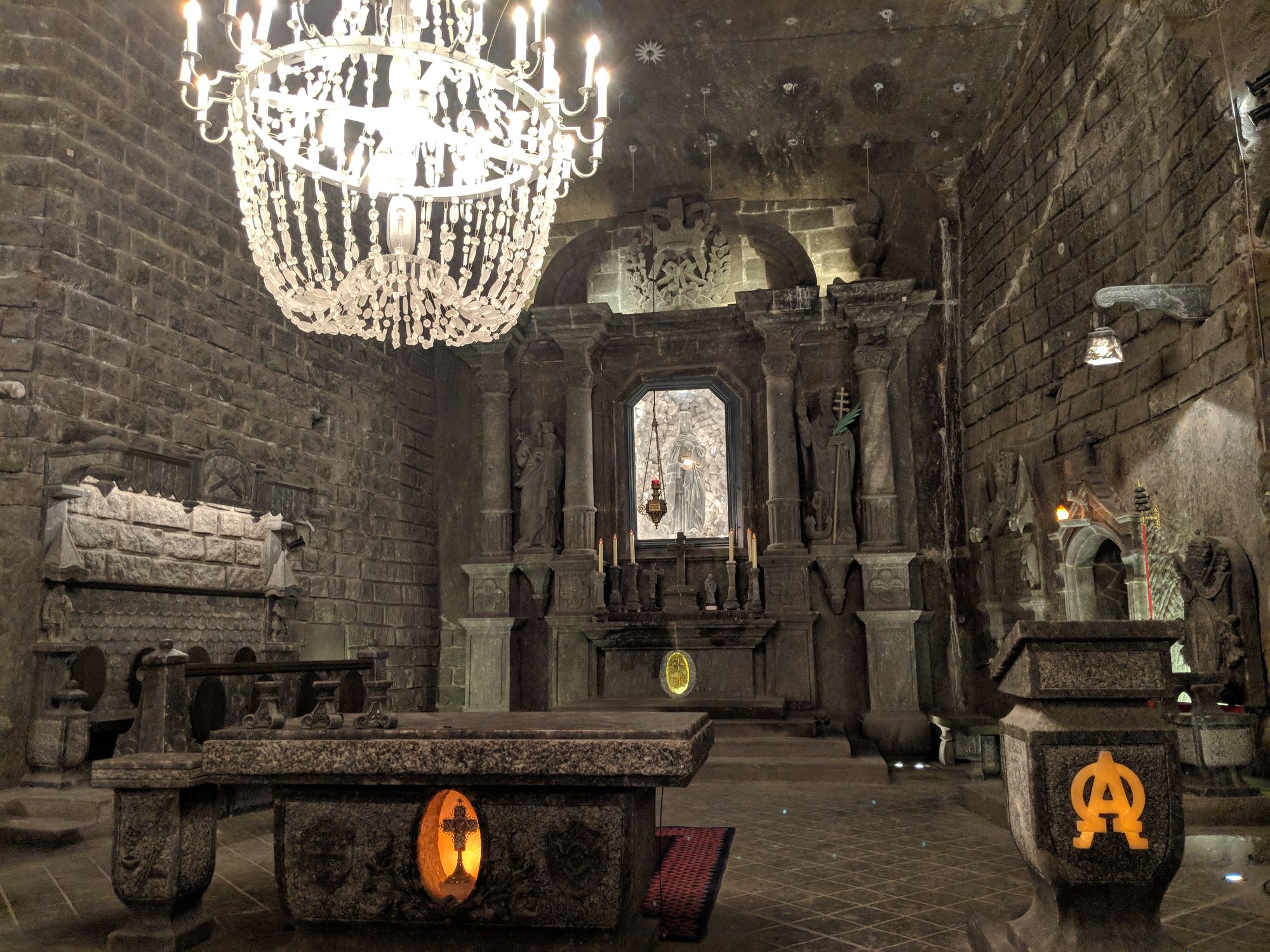
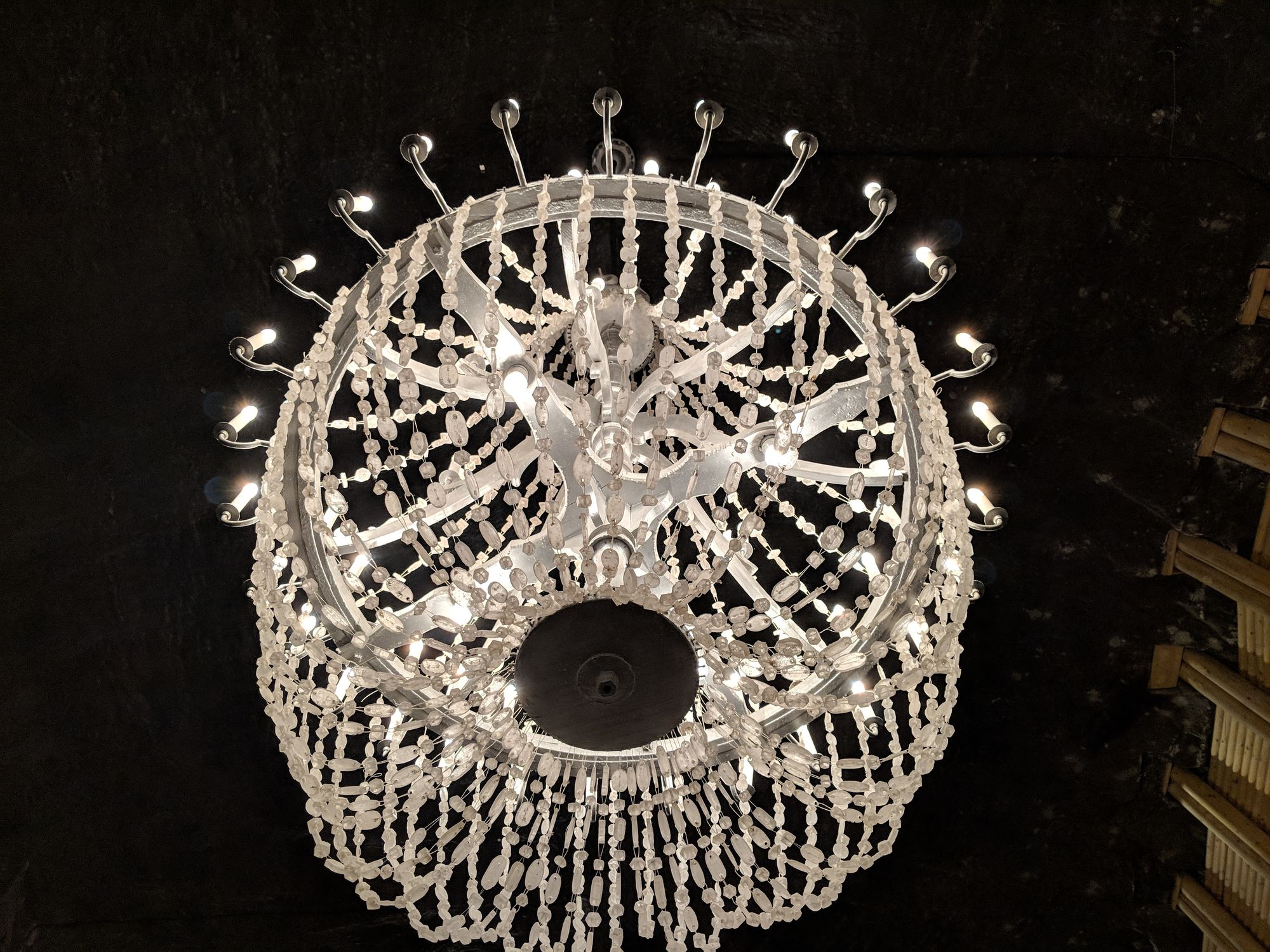
Underground cathedral! All chandeliers down here are made of salt.
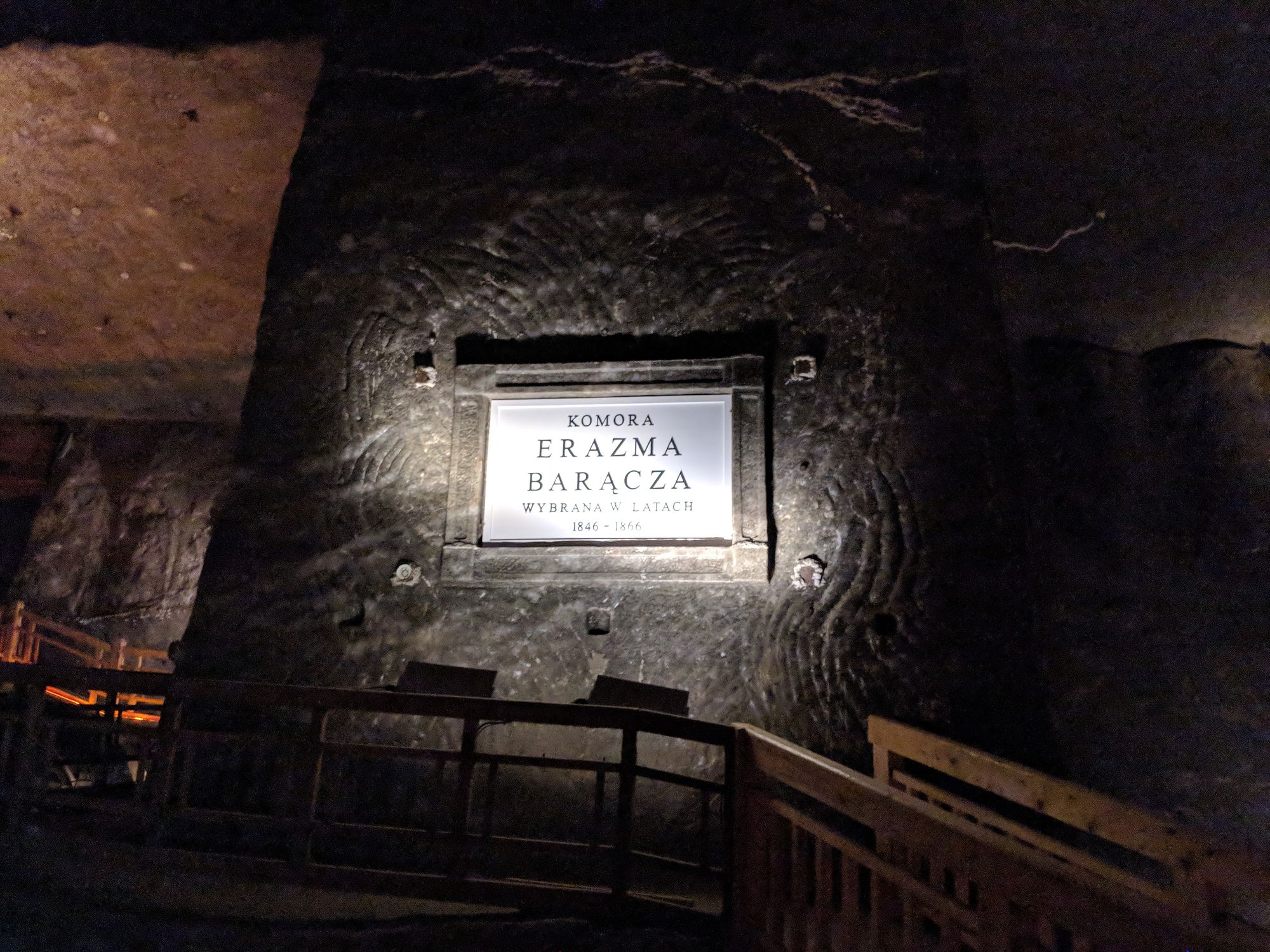
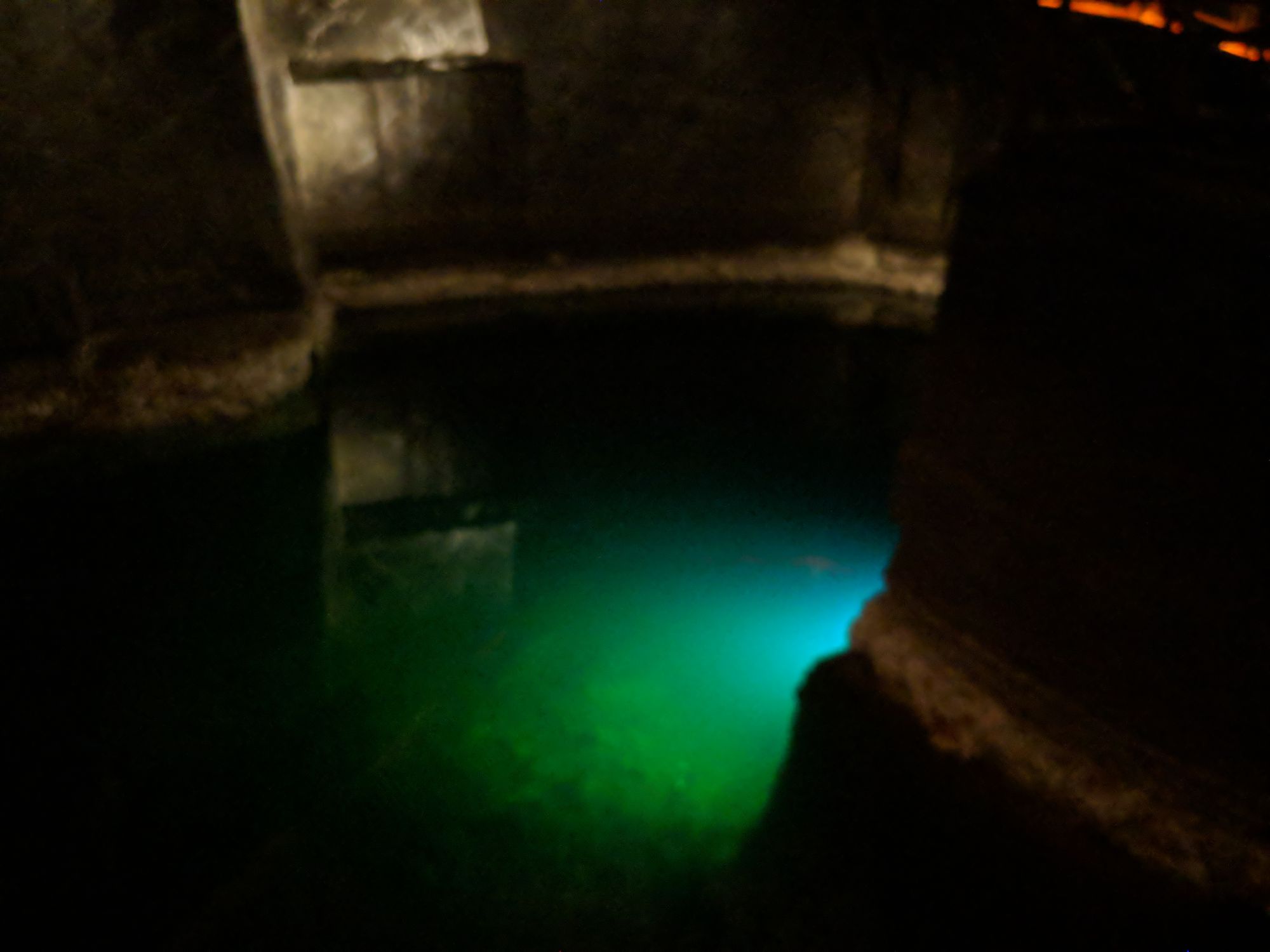
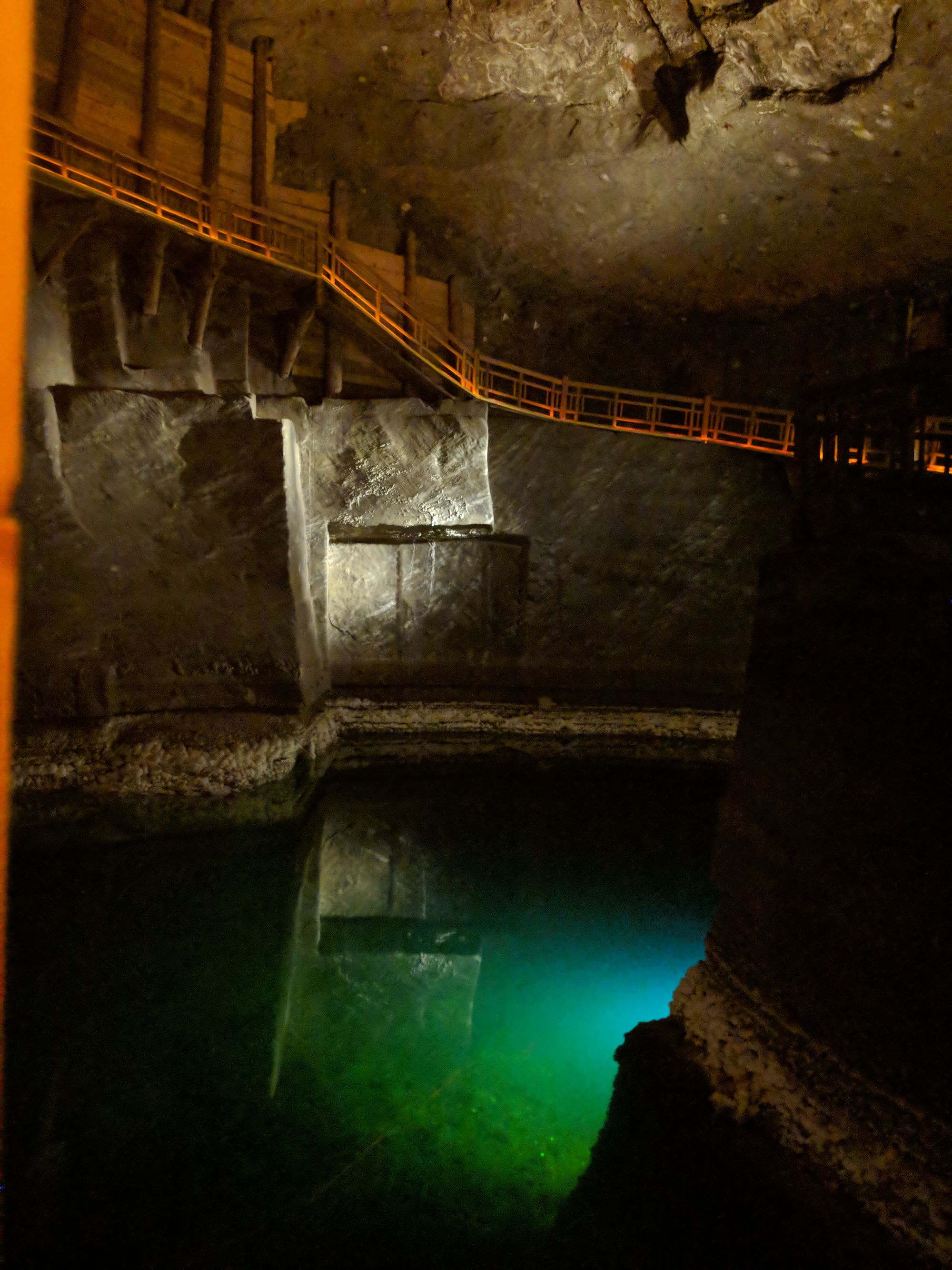
I believe this was the lowest lake in the mine--found the deepest within the mining complex.
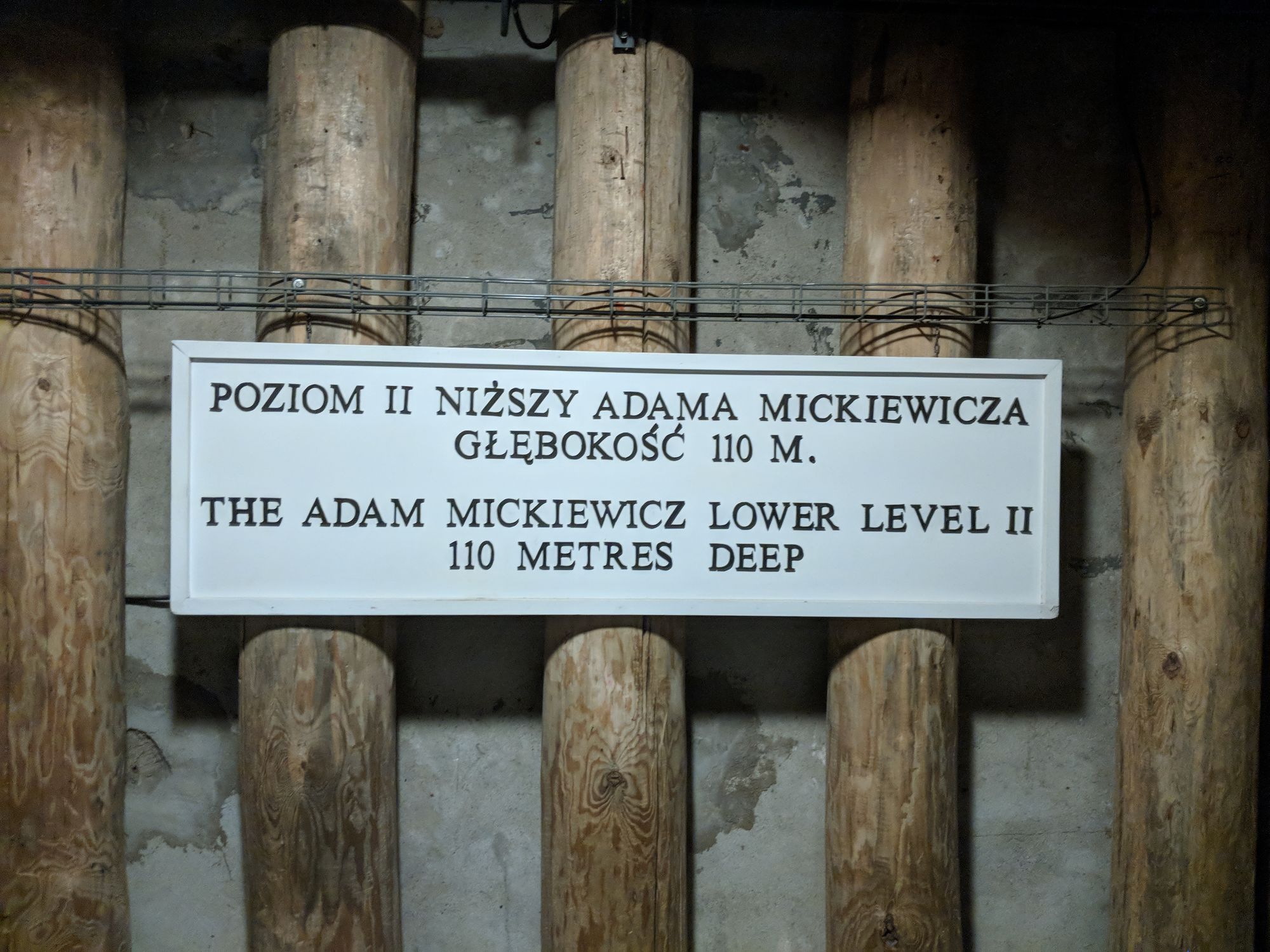
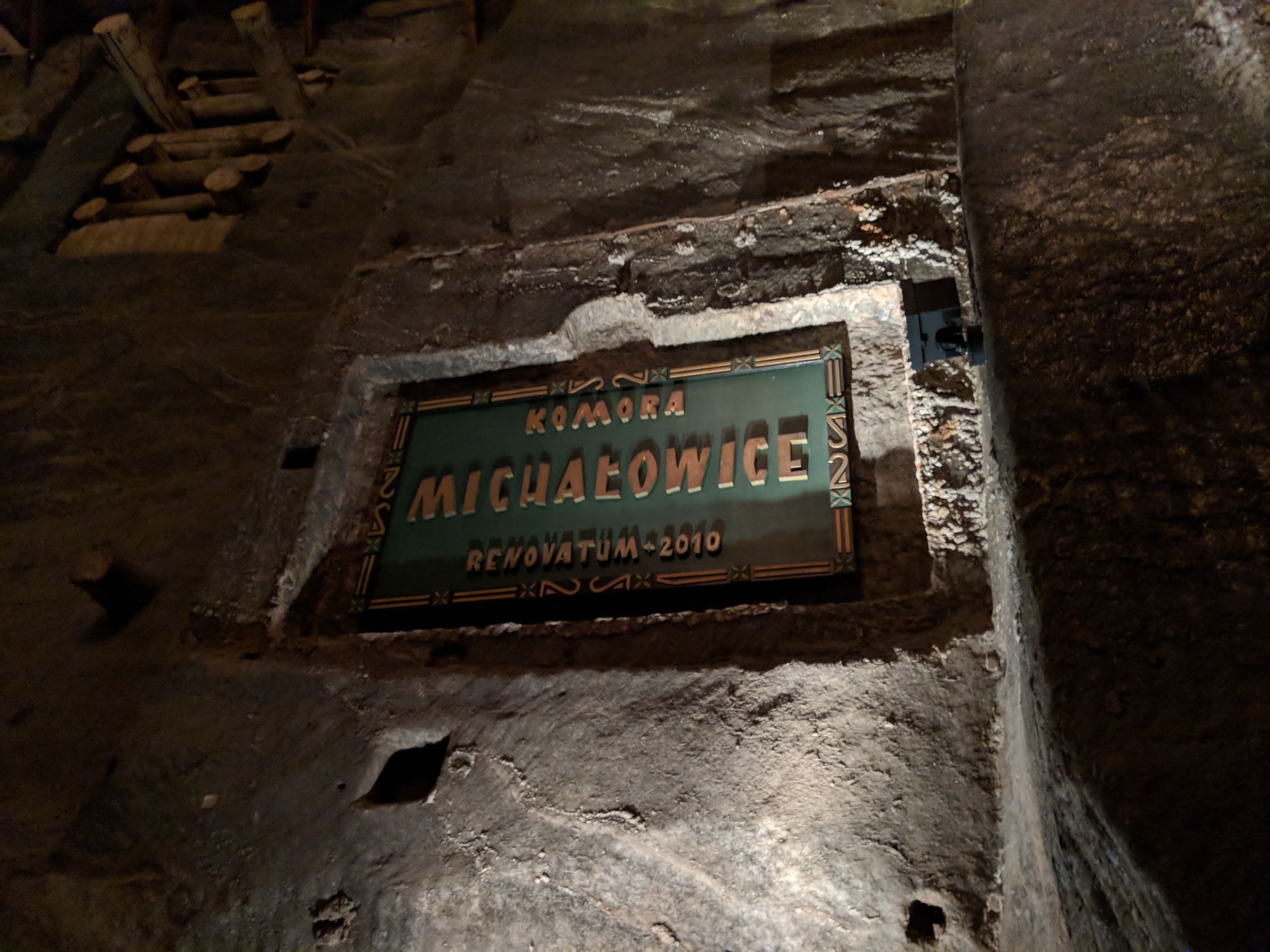
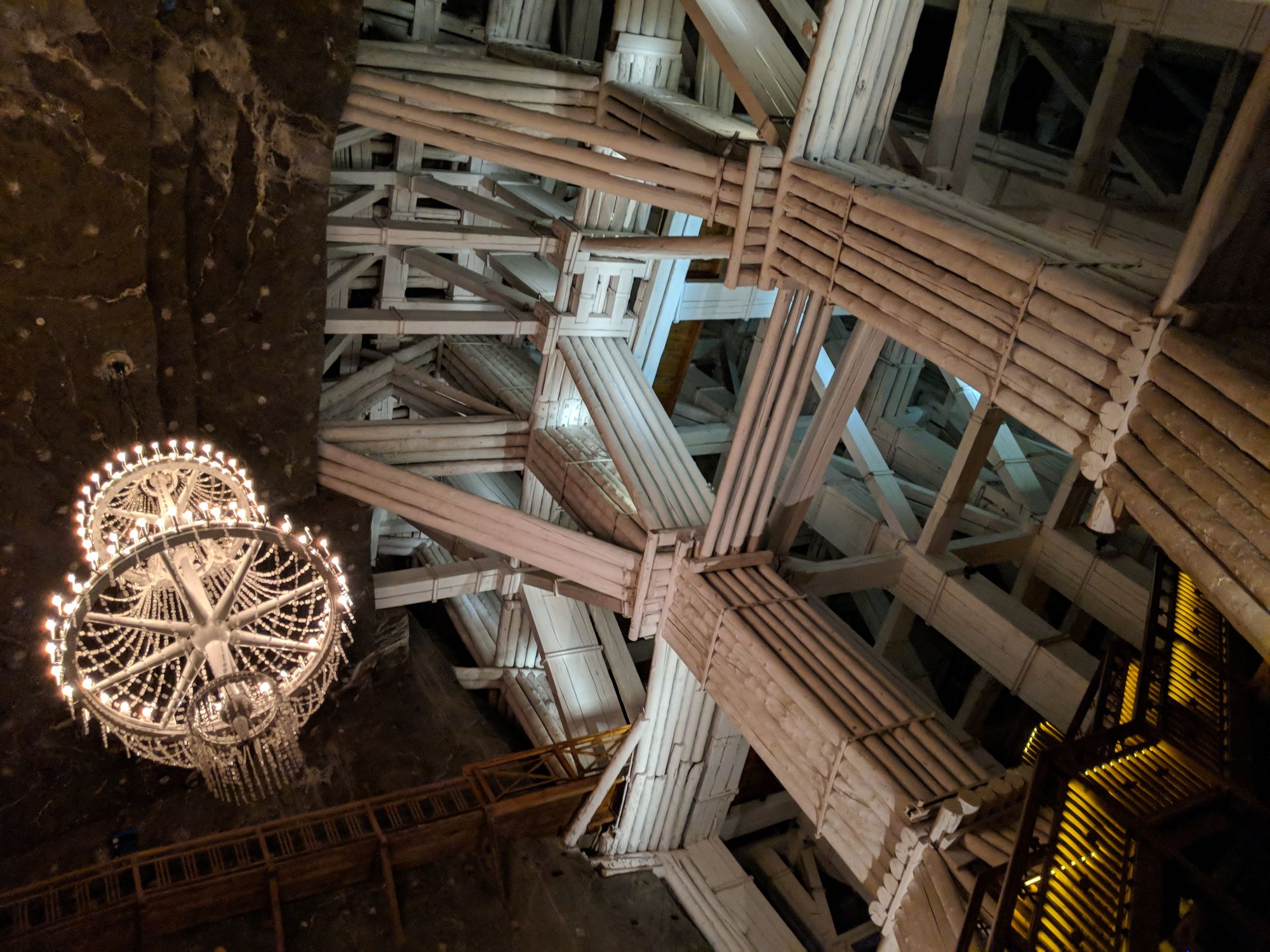
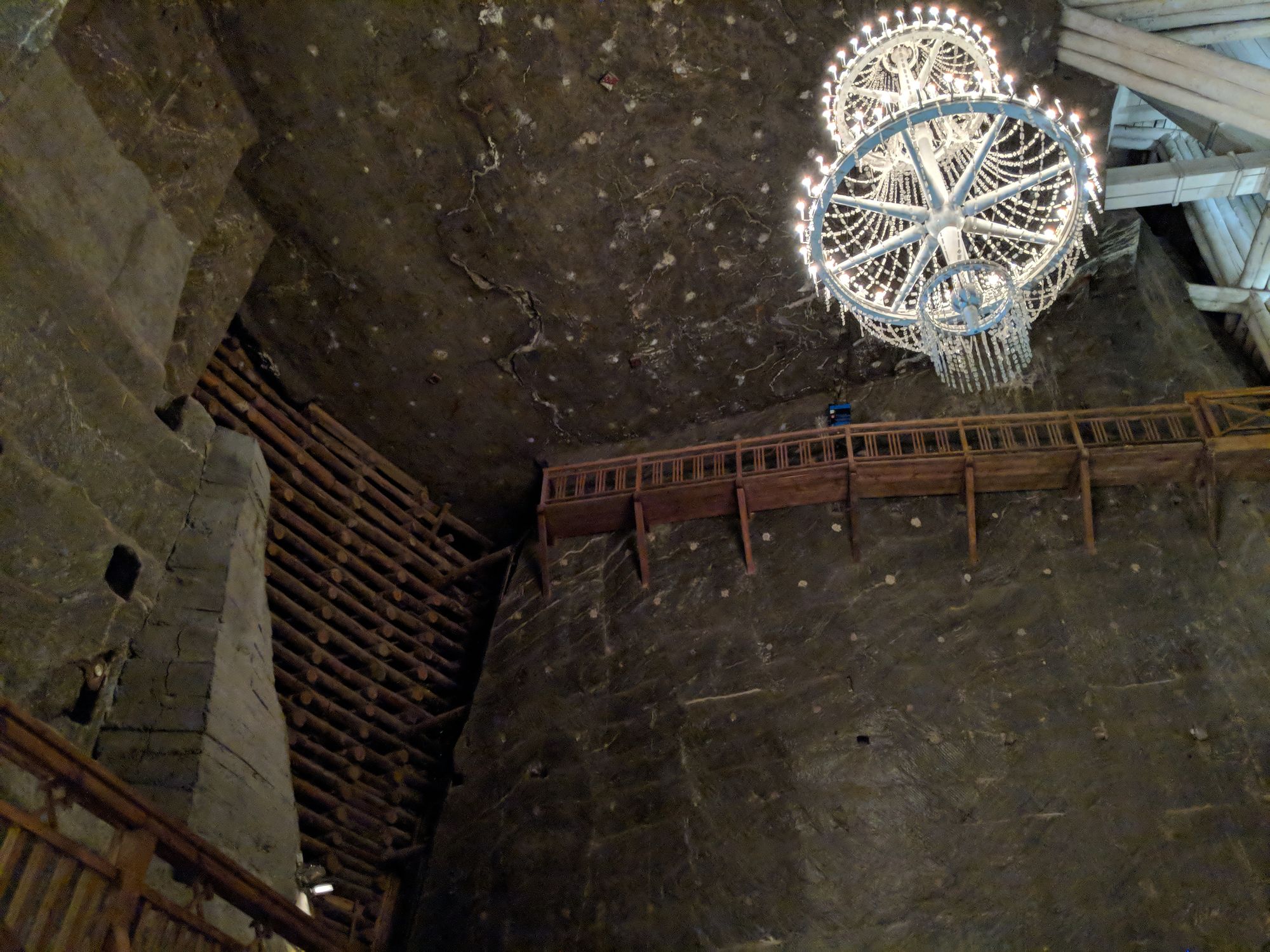
Highest room in the entire mine
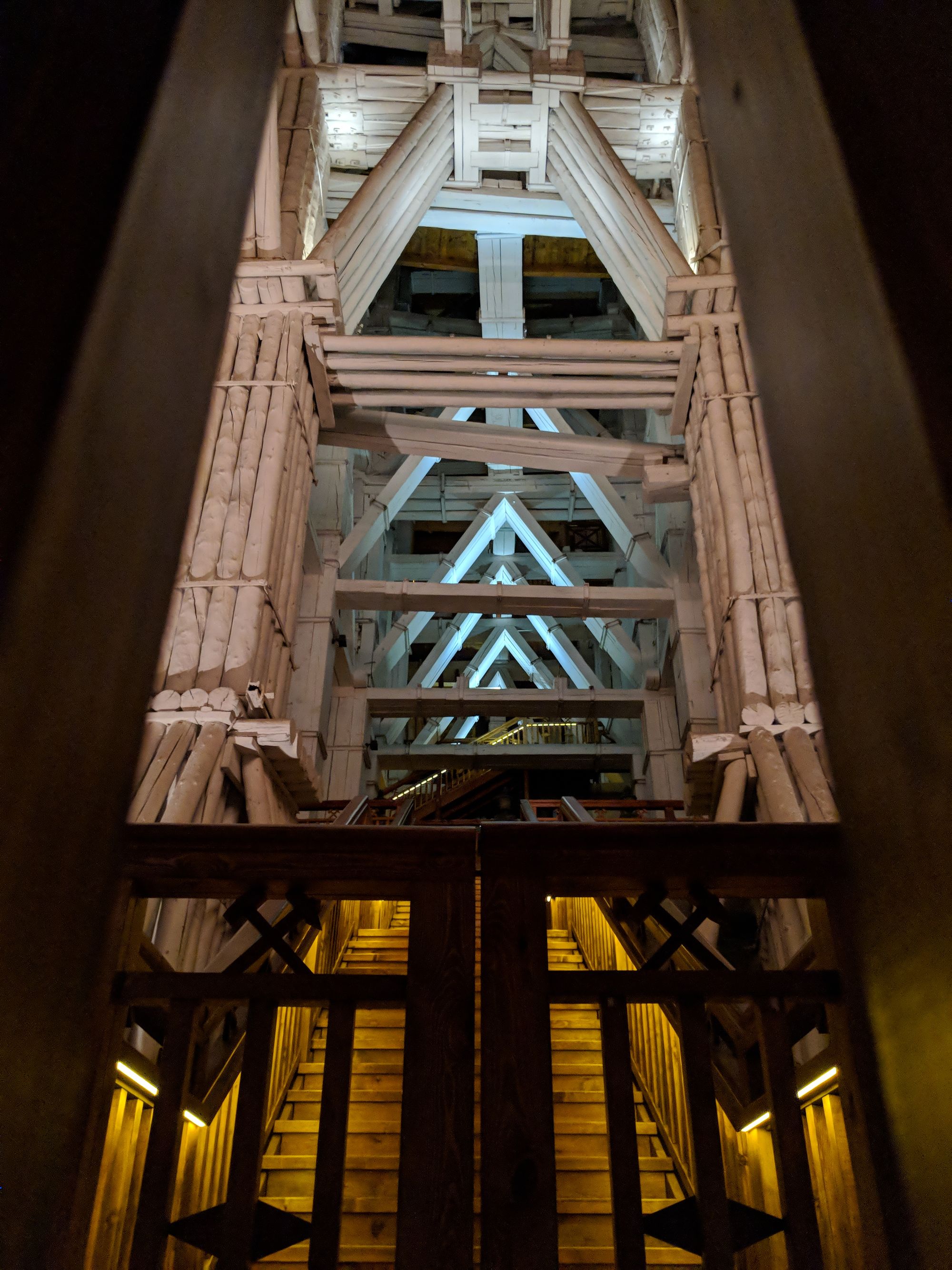
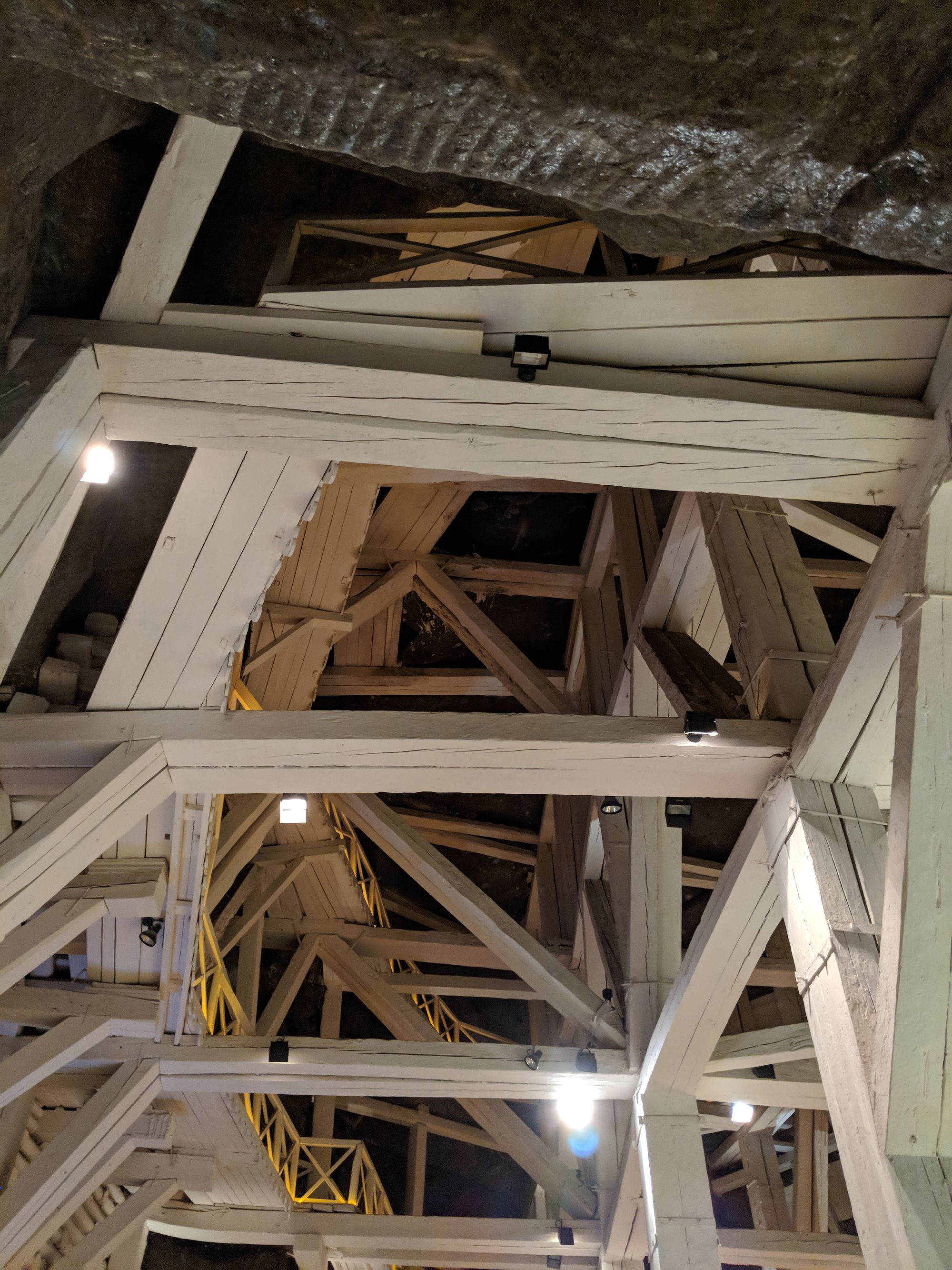
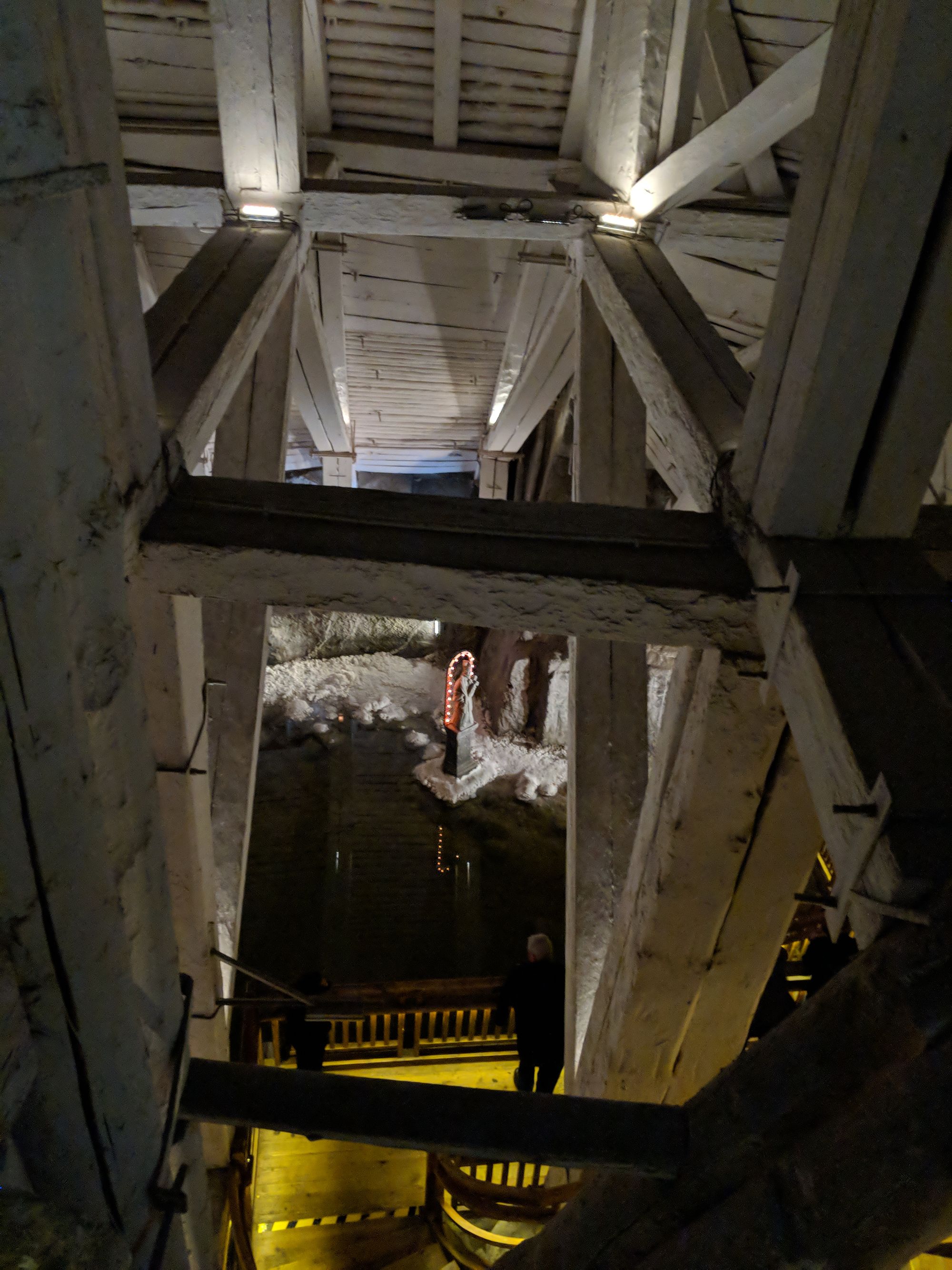
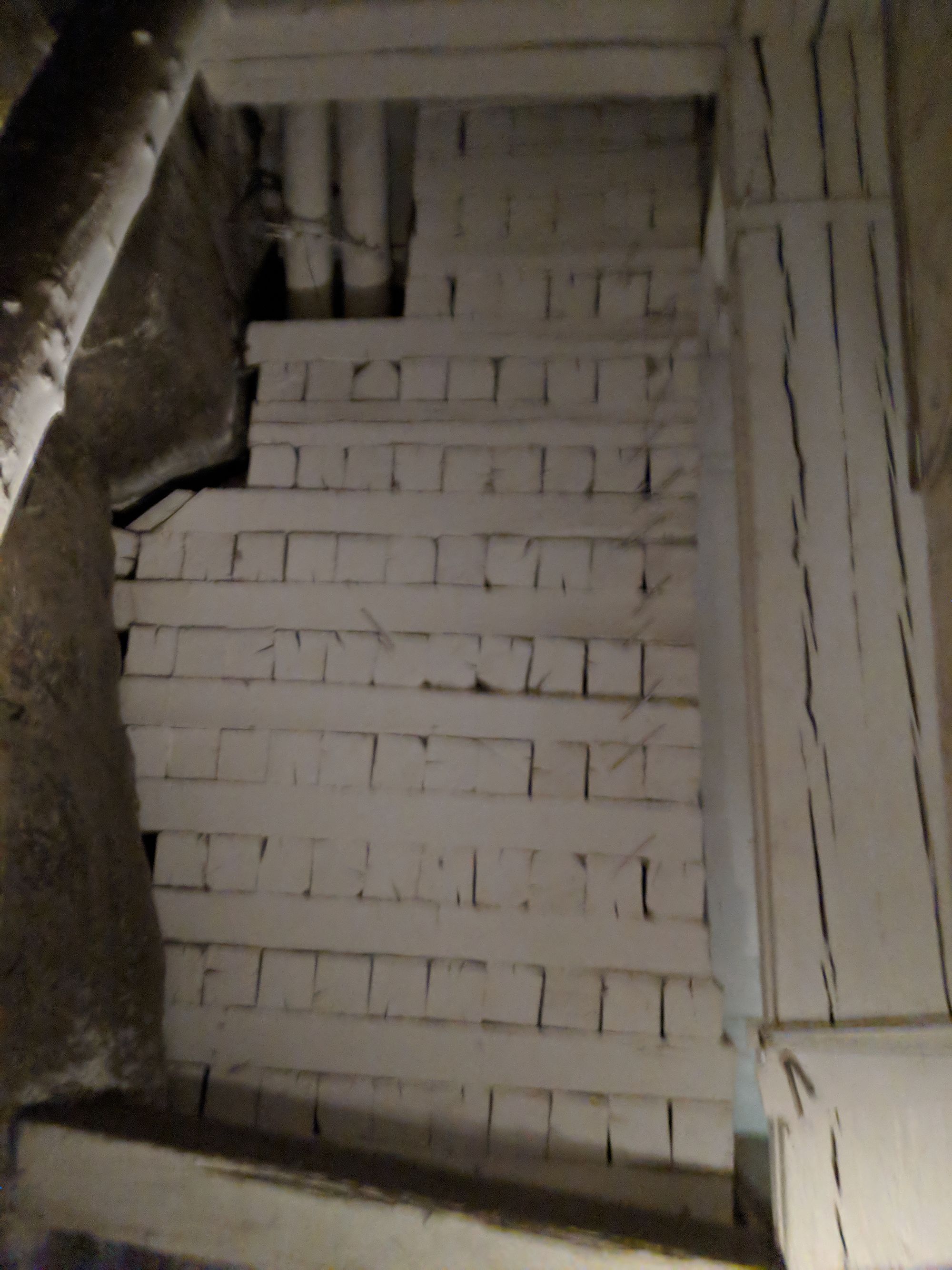
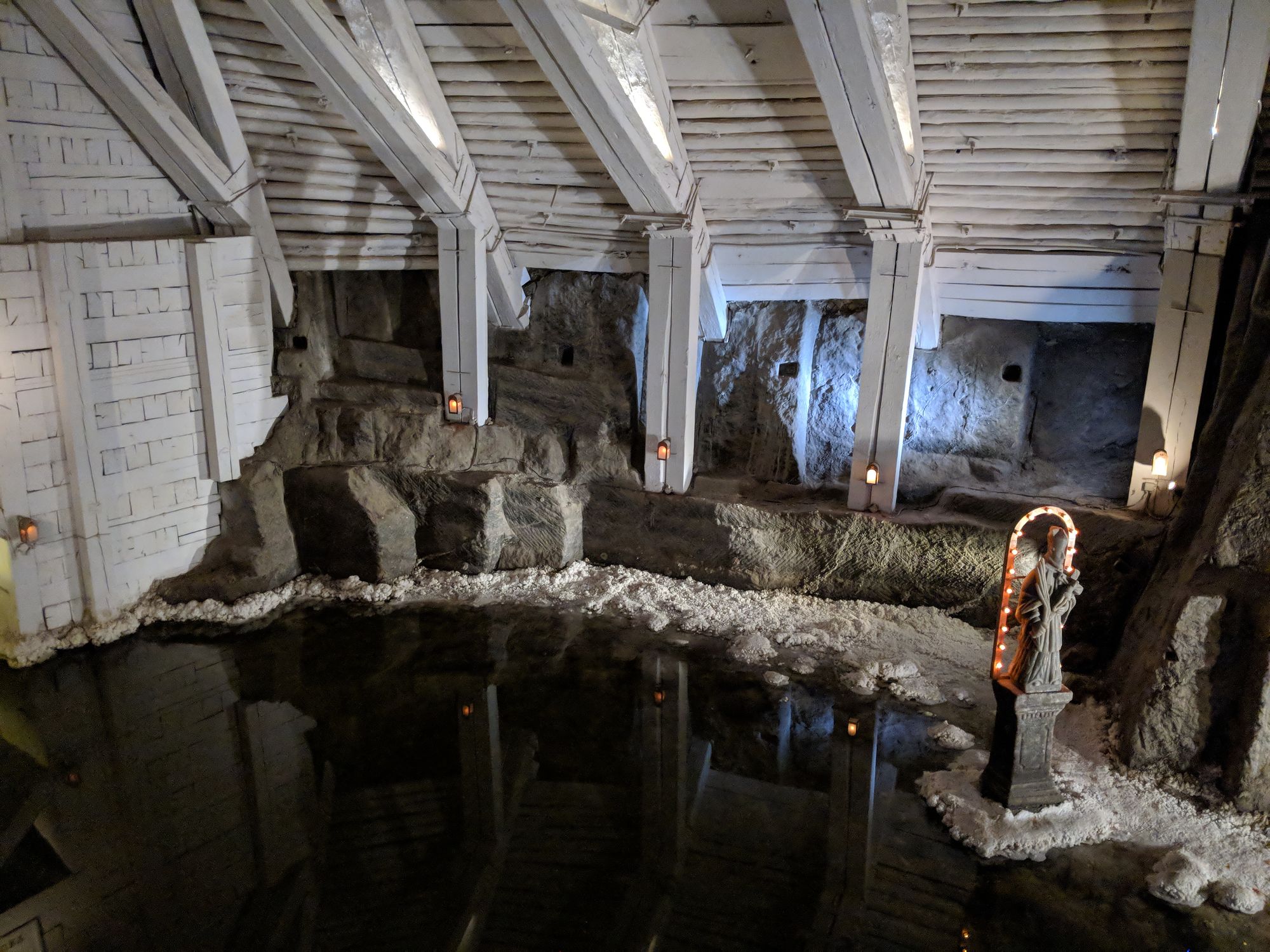
Boats used to go through a tunnel (off camera, to the left). The boat tour was permanently closed down when a boat capsized, and (I believe it was) 16 people died.
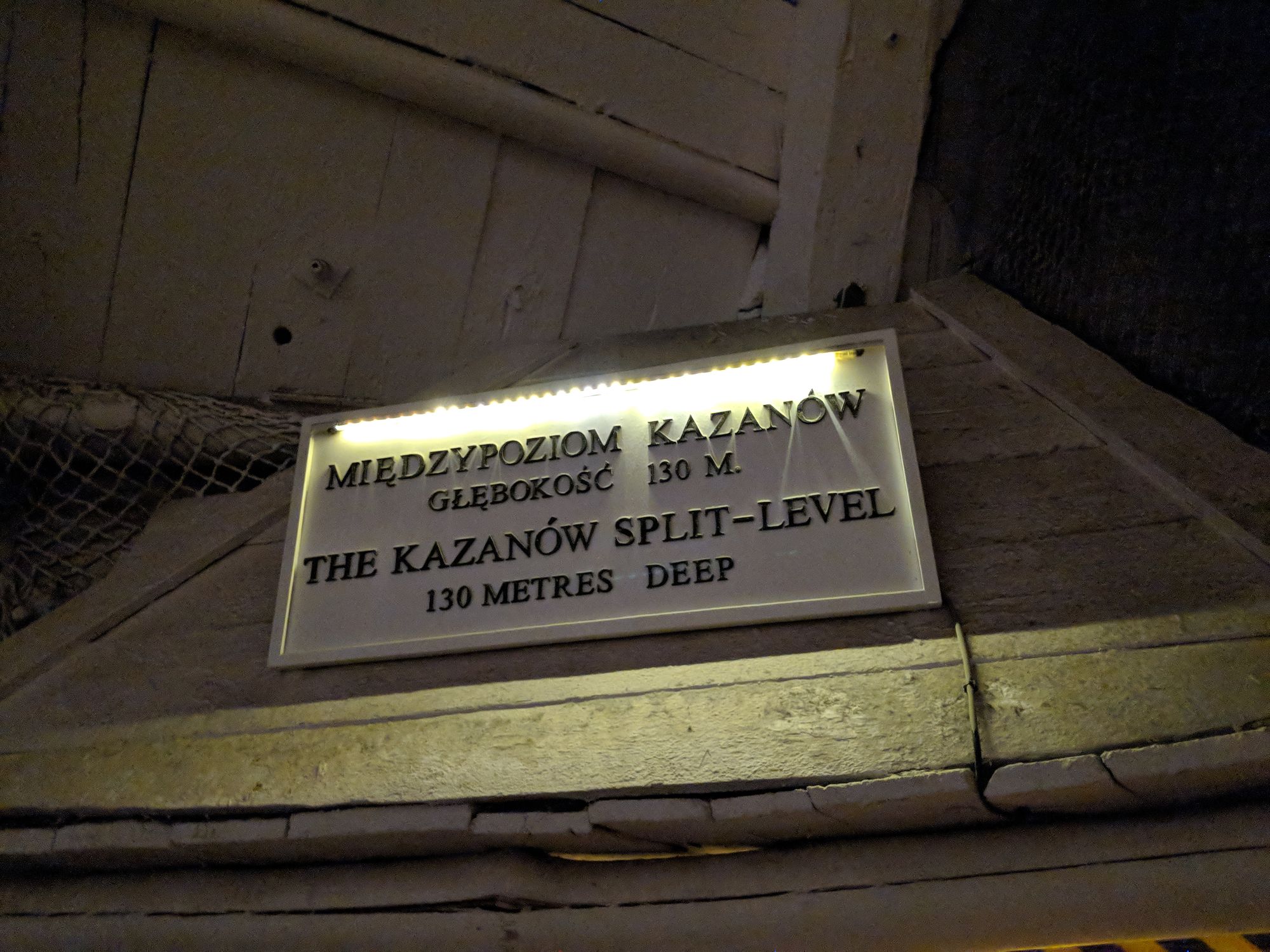
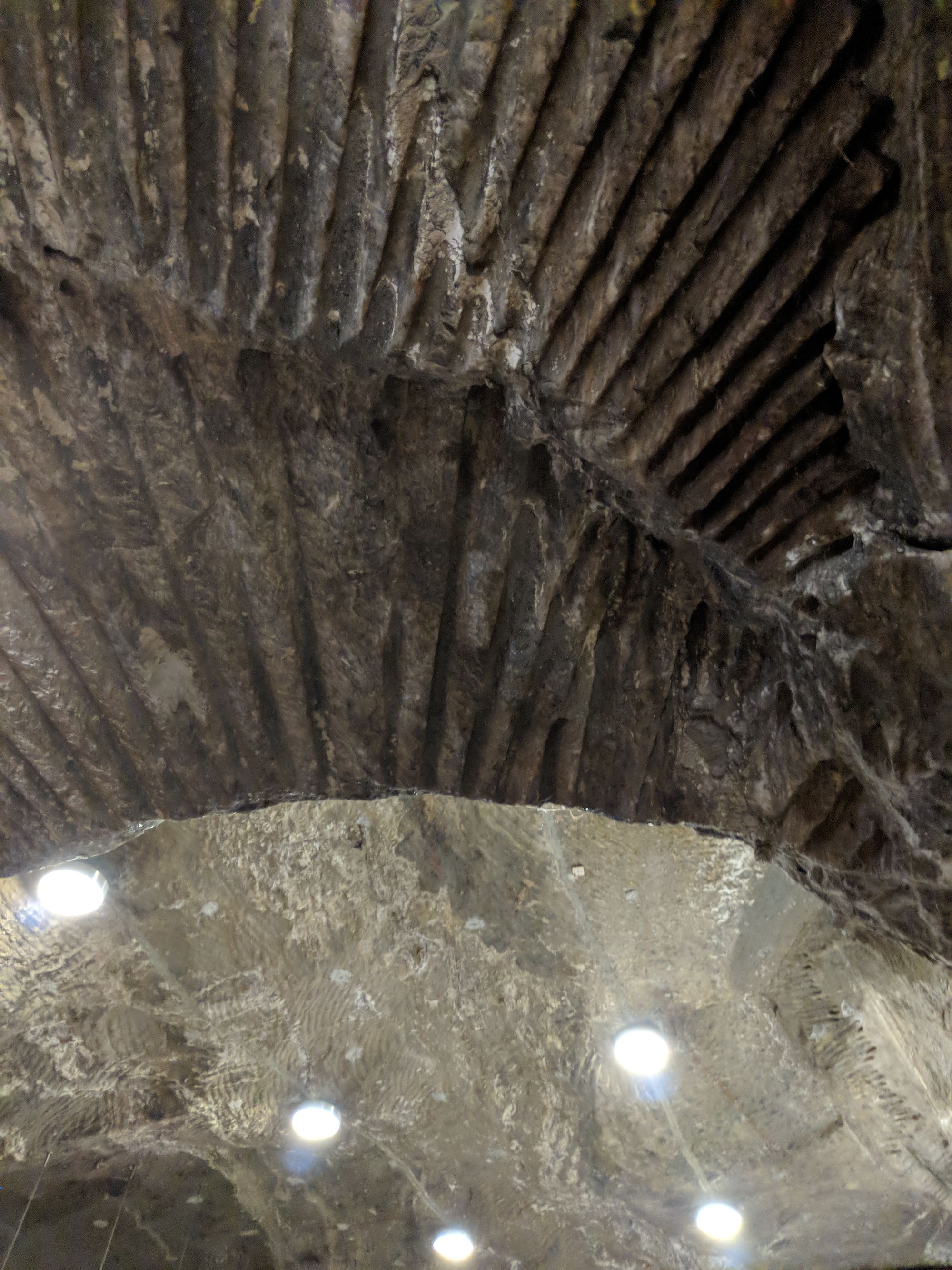
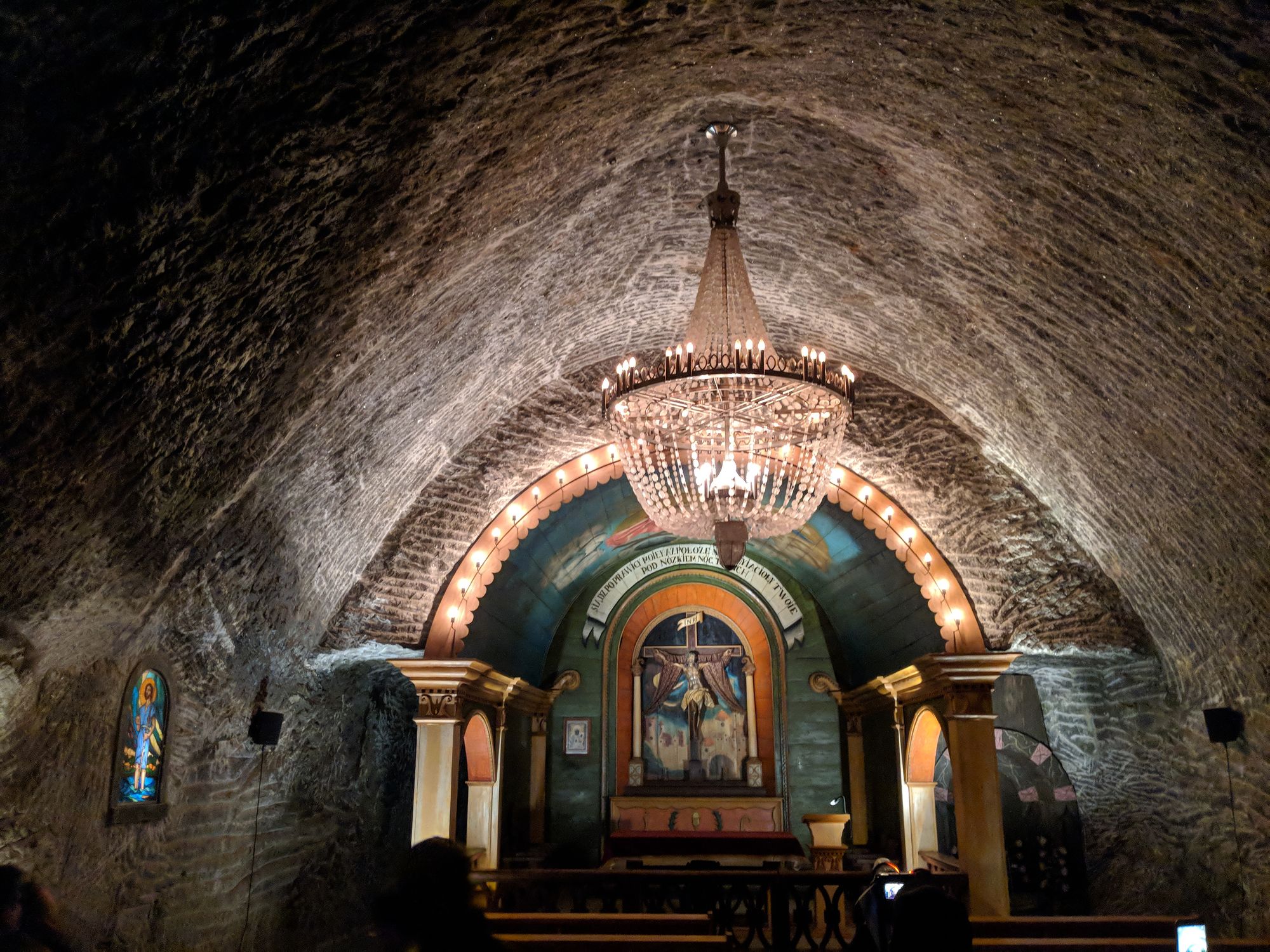
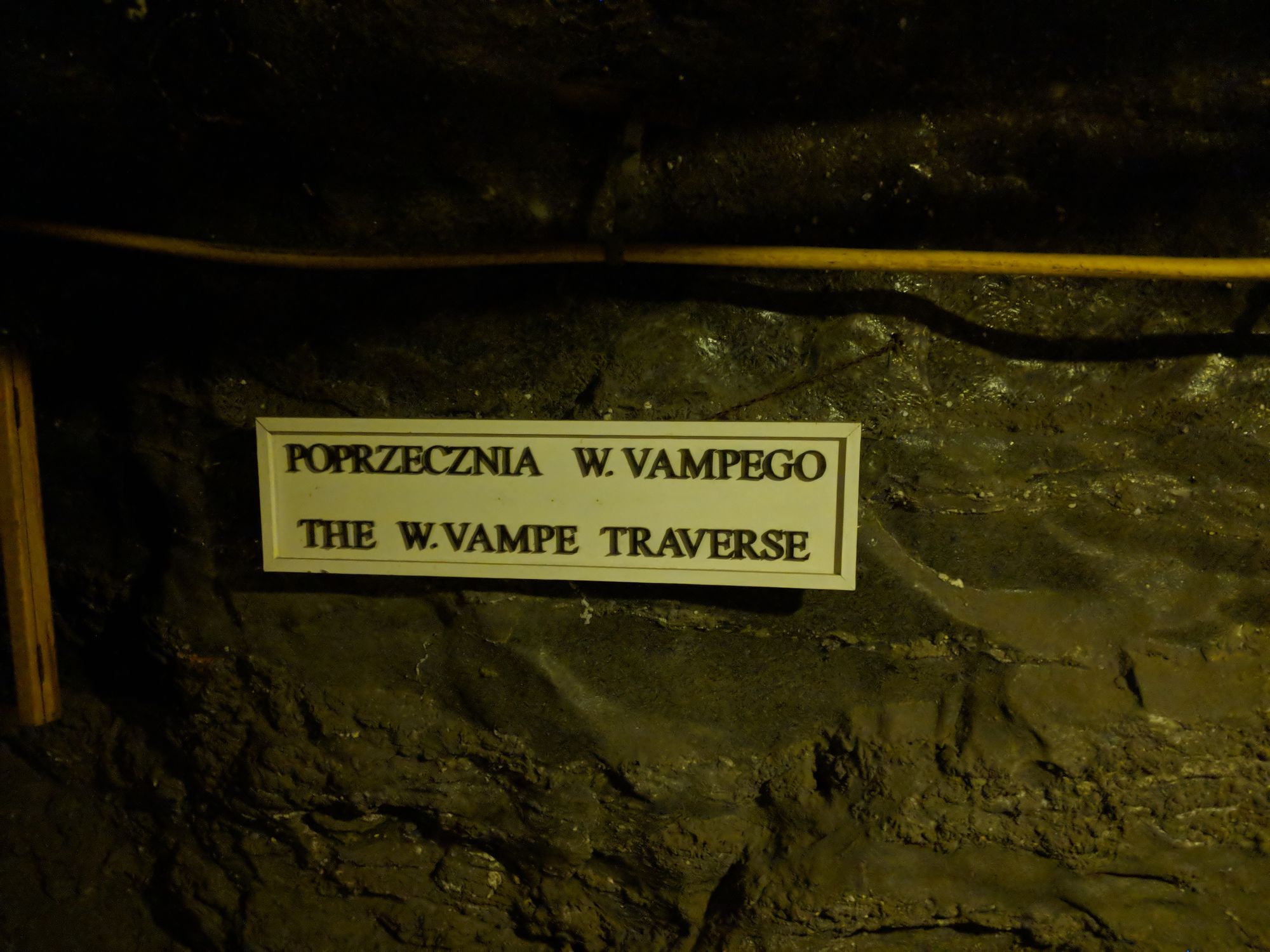
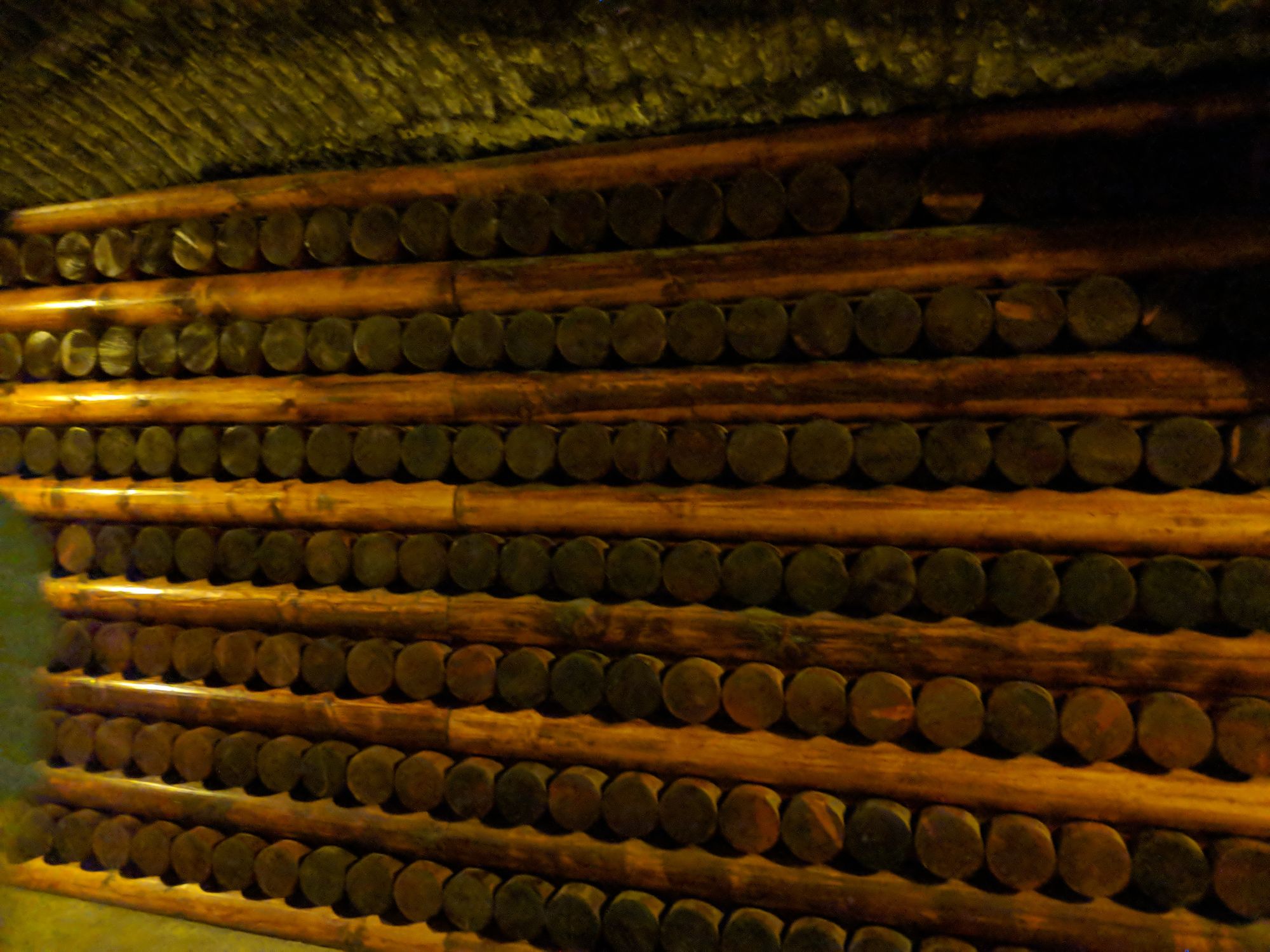
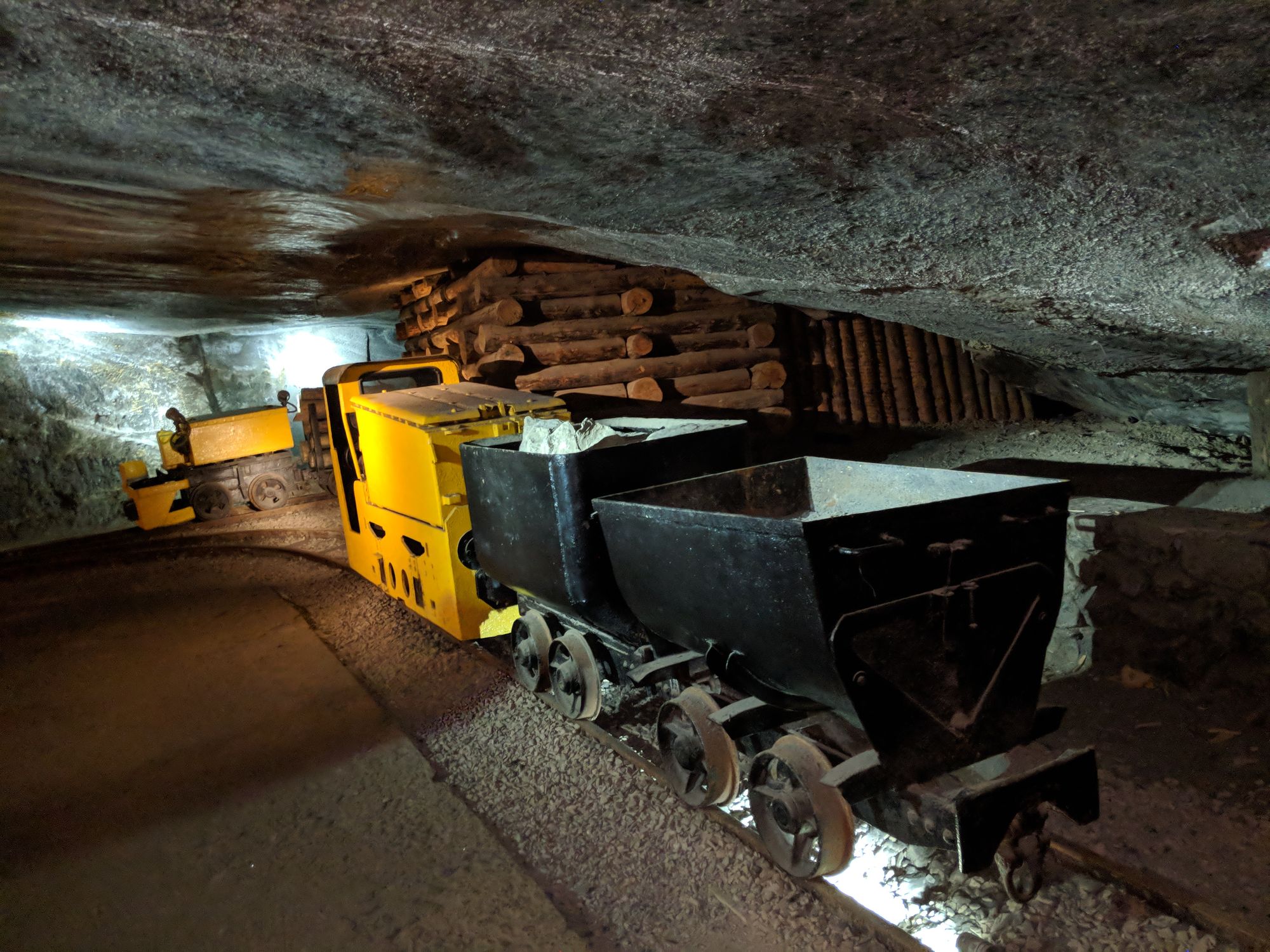
Returning to the surface, and then Krakow, we had free time over the lunch hours. My mom wasn't feeling well (also had food poisoning), so she reluctantly napped, leaving me to not get lost in the city by myself. Armed with Google Maps and my fully charged cell phone, I set off to find the amazing-sounding underground medieval city that my cousin, Henry, told us he had visited beneath the city square. I kinda found the entrance to it, but couldn't find the information booth for tickets.
With only an hour left until I had to make my way back to the hotel for our guided walking tour of Krakow, I decided to instead check out the only building in the center of the giant market square, called the Cloth Hall.
Oh boy! When I turned the corner of the corridor, I was completely surprised with the scene before me:
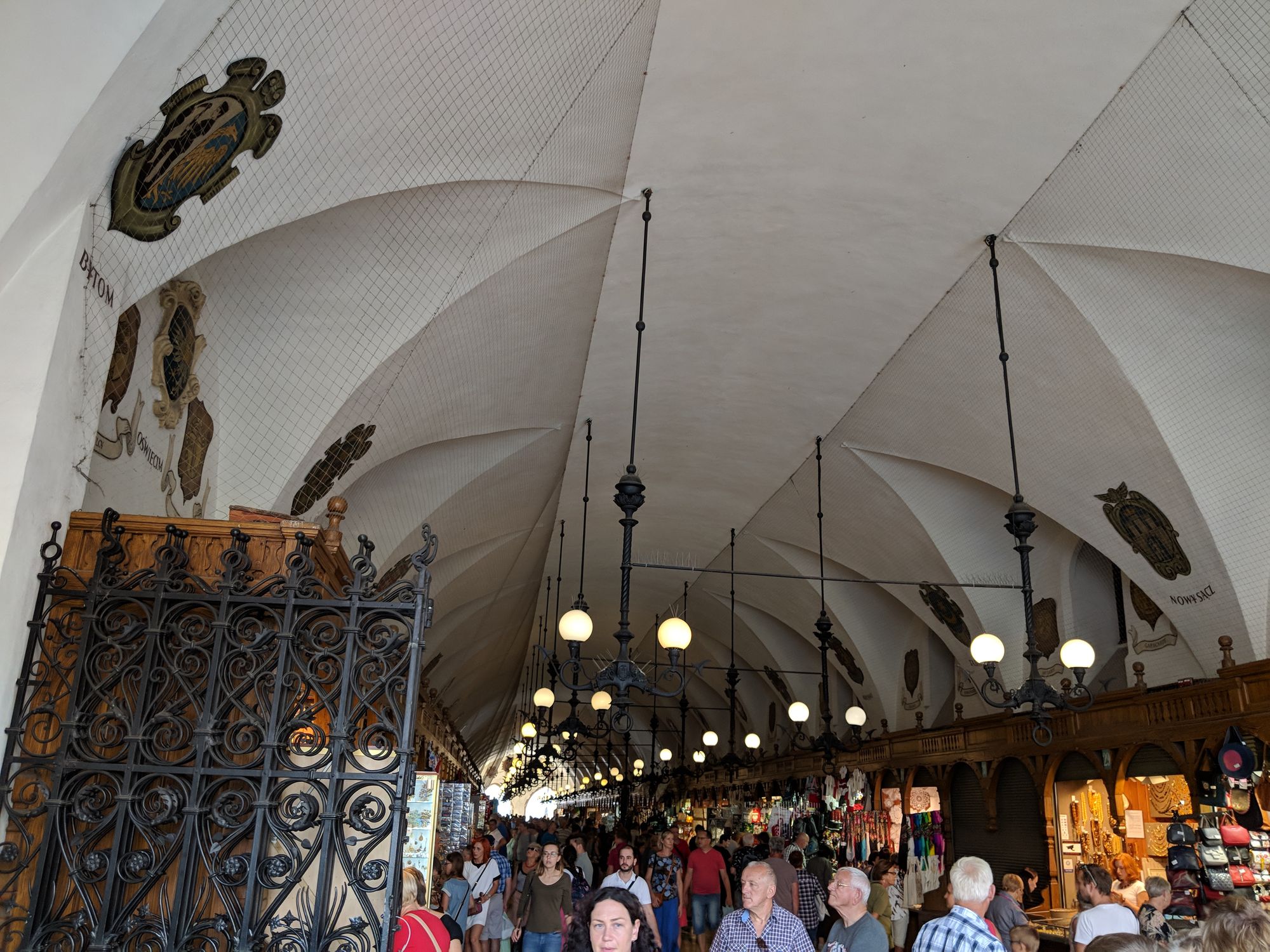
Booth after booth lined each side of the somewhat narrow building. The pedestrian pathway was maybe 25 feet wide.
This was my first bazaar-like market in just under 30 years. I was instantly excited. I finished up my birthday and Christmas shopping.
Walking down the crowded corridor, it was easy to transport myself back to the 1300s, watching merchants unroll the latest fabrics for the noble ladies with their insatiable appetite for the latest fashions.
I have missed these transportation sessions so much . I hadn't realized just how much until this writing. Growing up in Germany, surrounded by this same type of history on a daily basis, as a child, how could one not imagine such things?
America lacks so much... while the Native American archeological sites can hold just as much wonder with their architecture and decorations ( Mesa Verde, CO ; Acoma Pueblo, NM ), I am unable to transport myself to that era as I can when in Europe.
Maybe it is my unfamiliarity with the everyday way of life for the Ancient Puebloans. Maybe it is the blood of my ancestors--coursing through my veins--recognizing things familiar to them, longing to experience them once again.
Will their siren-like song draw me to the European shores ever again?
Photos from the guided walking tour:
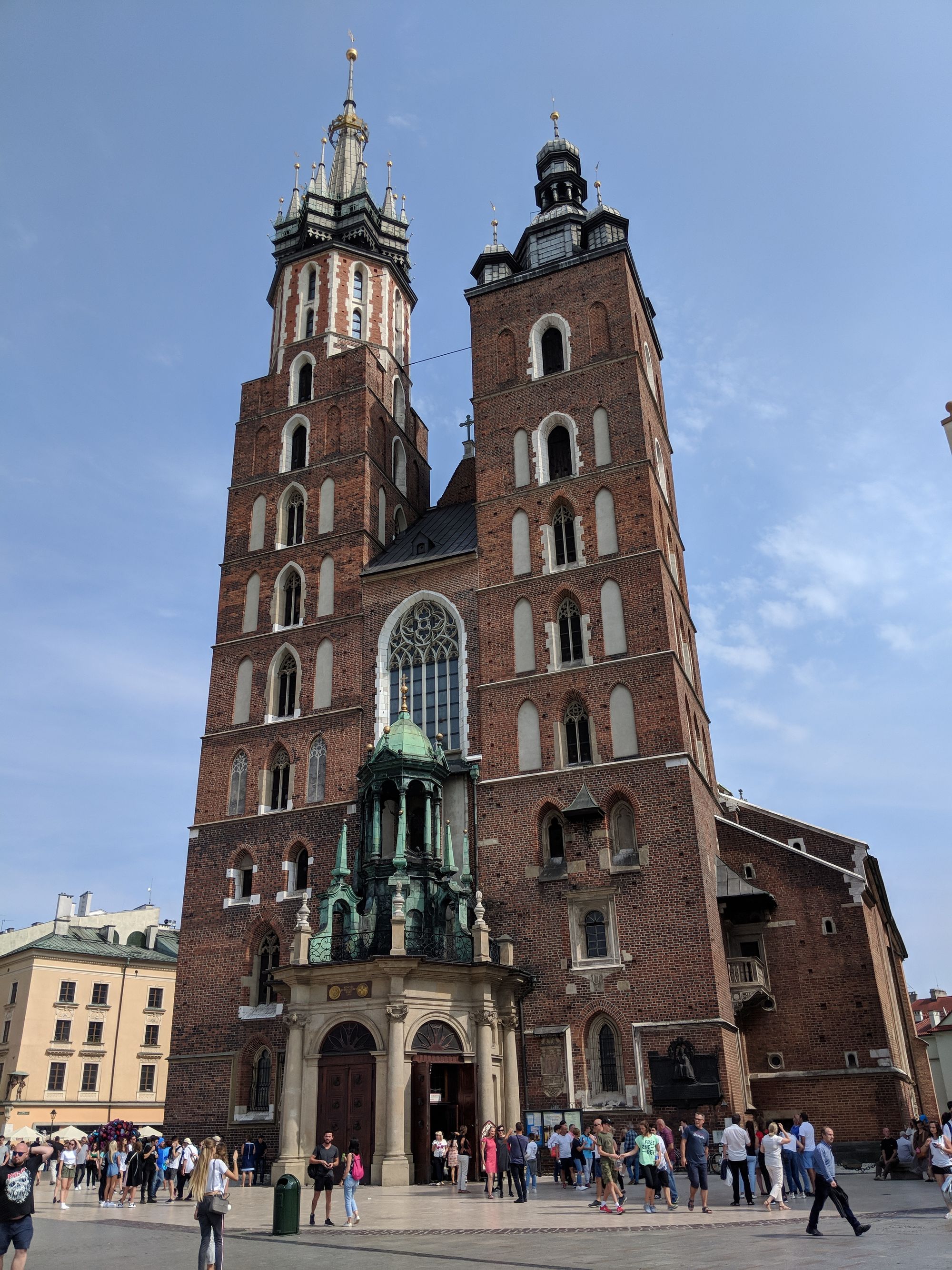
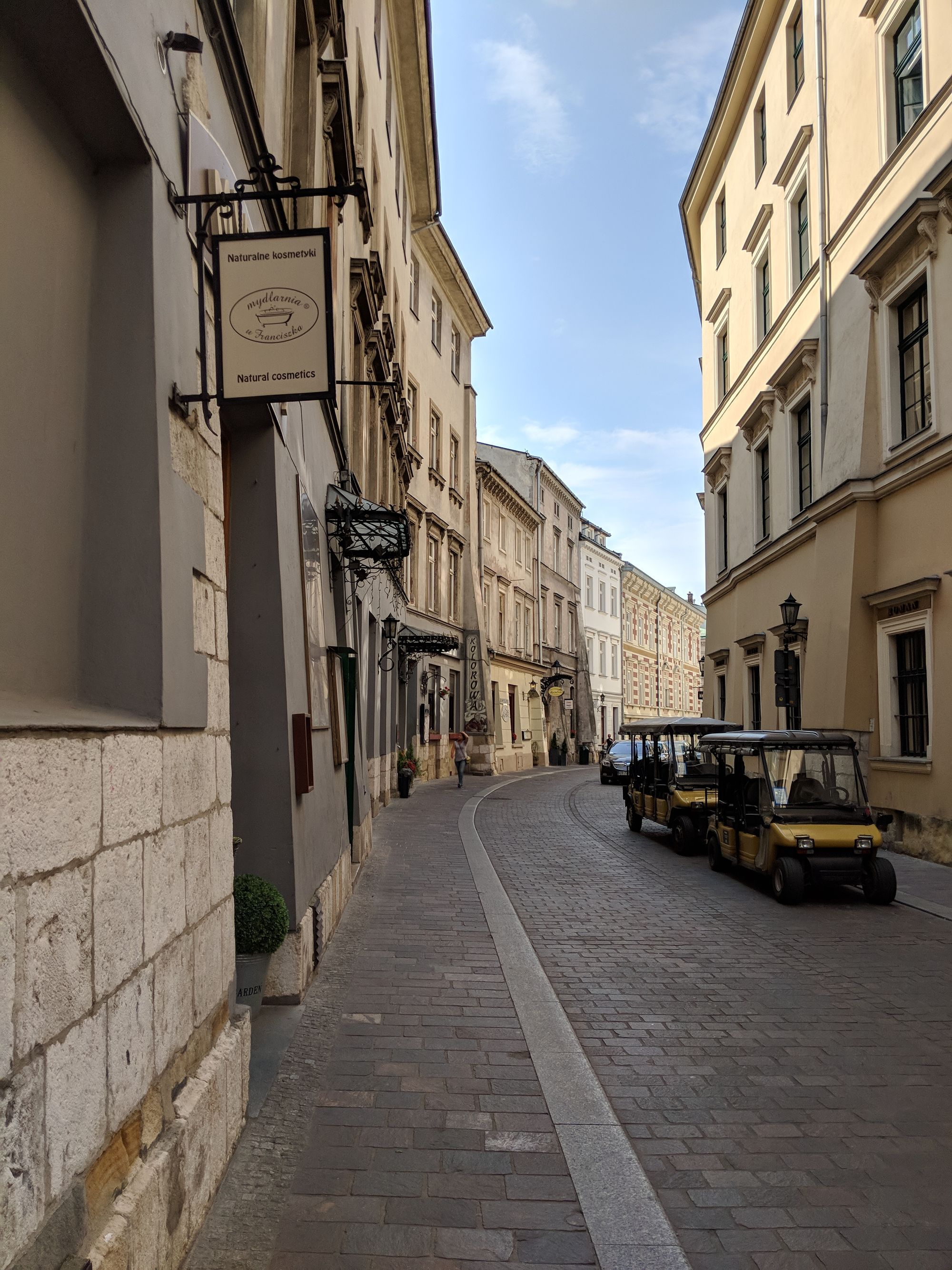
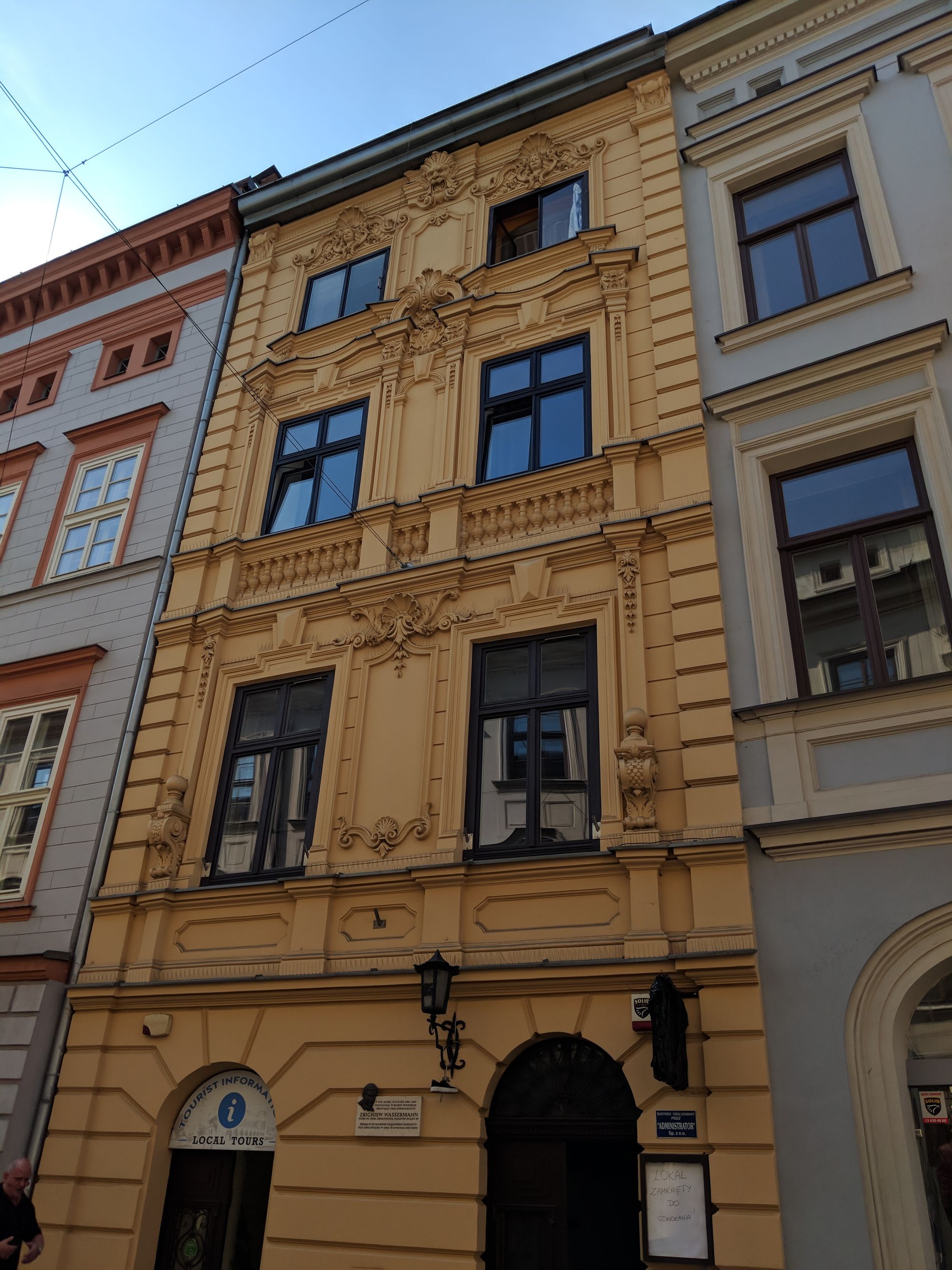
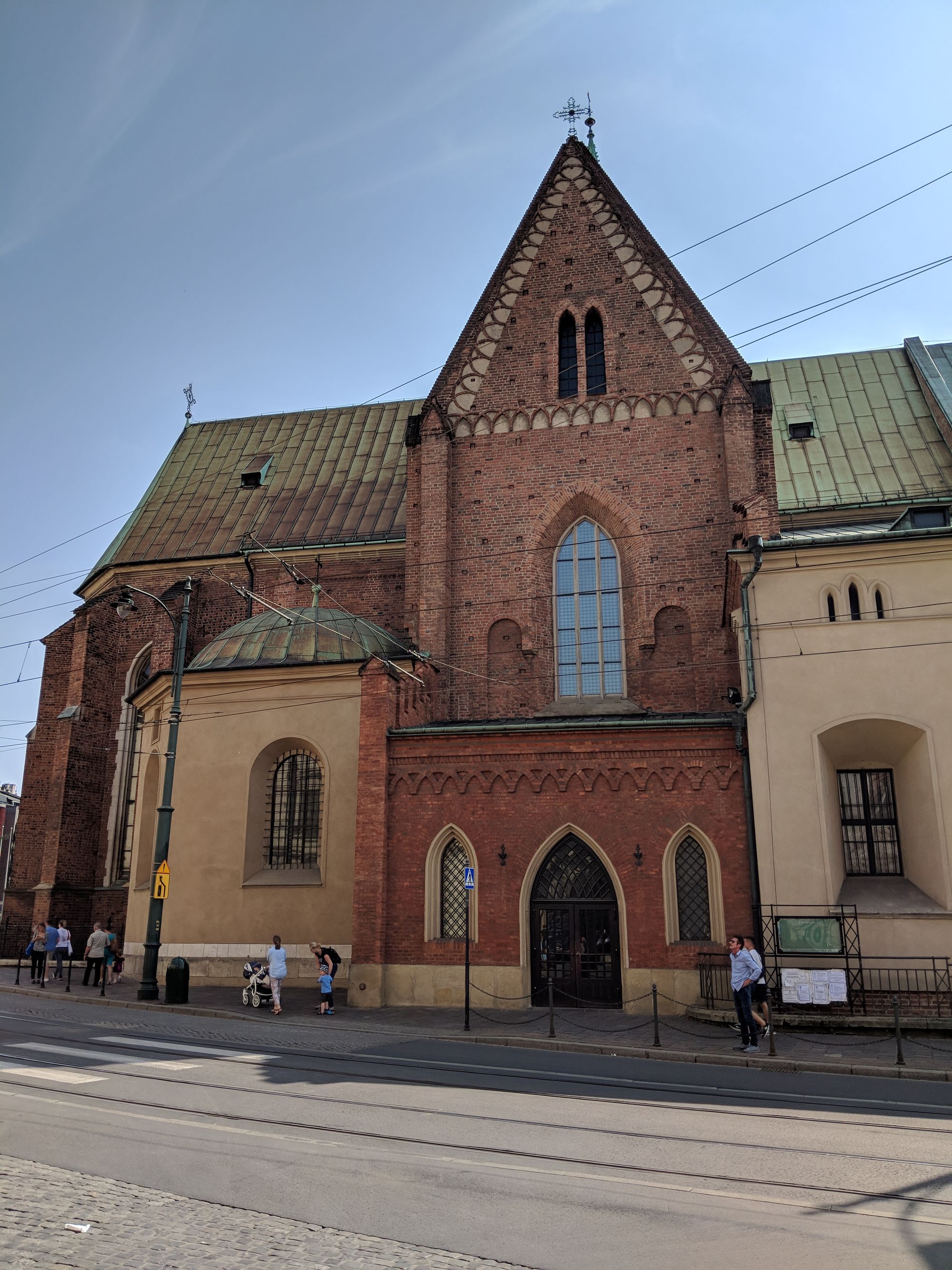
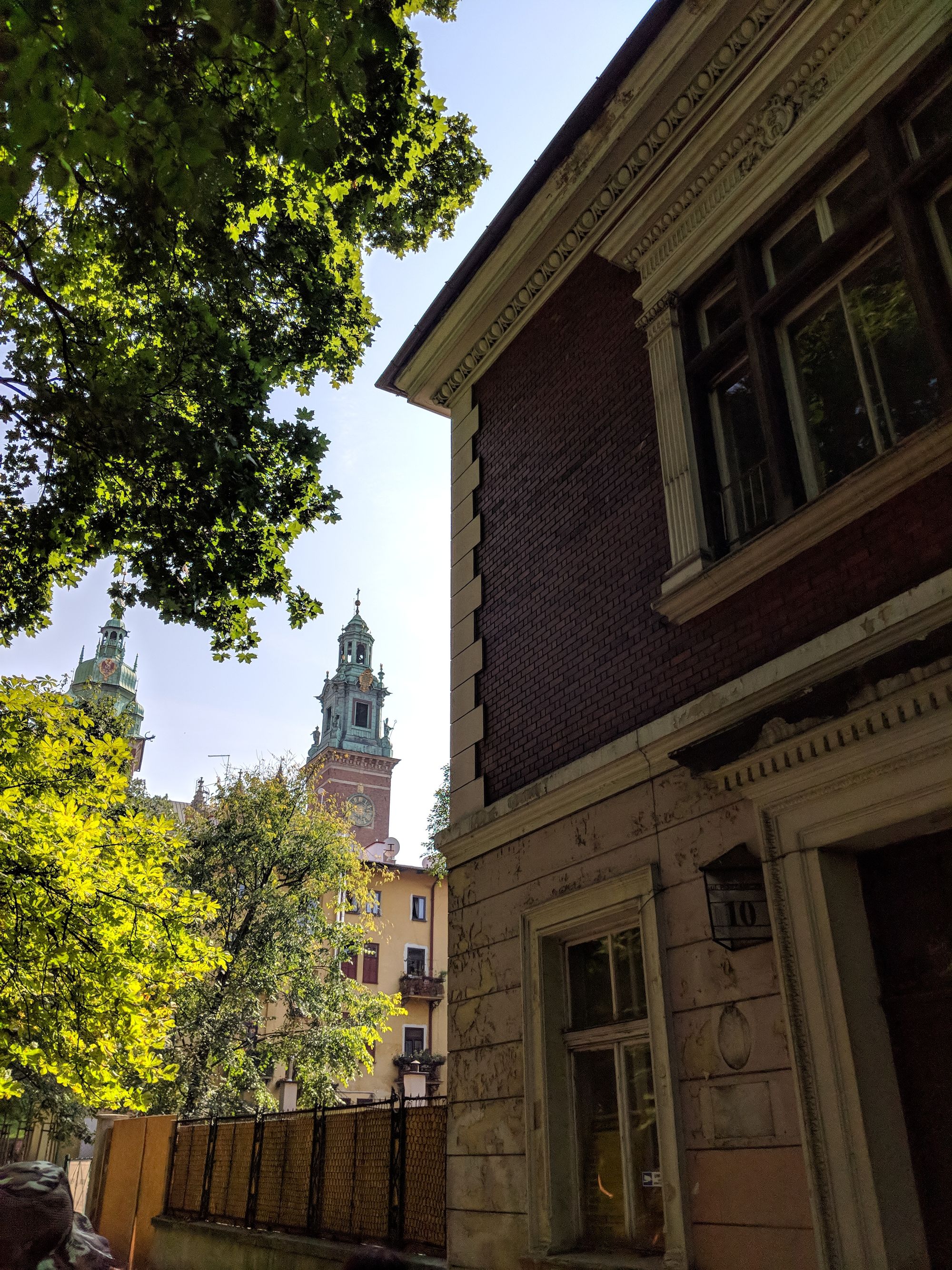
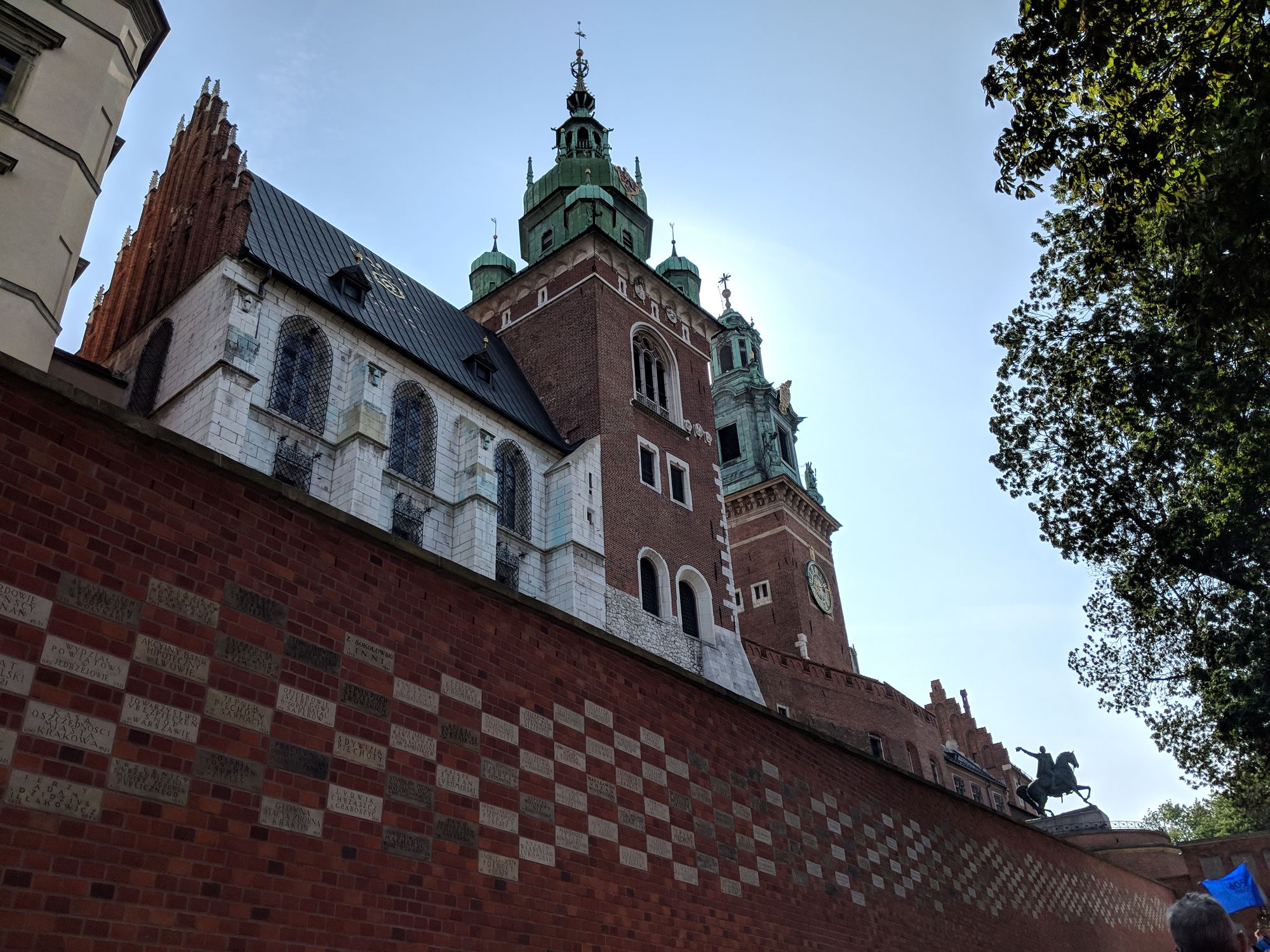
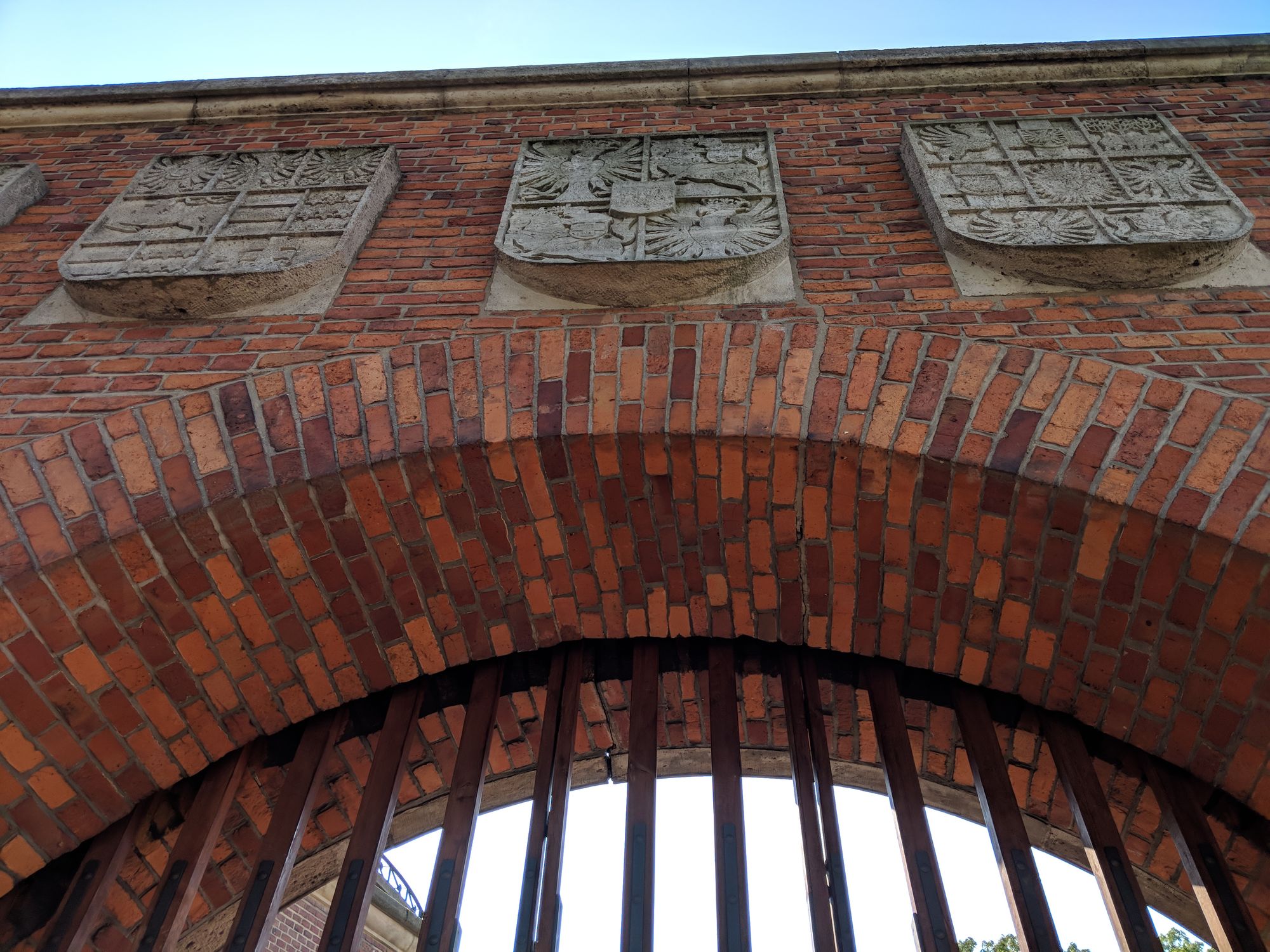
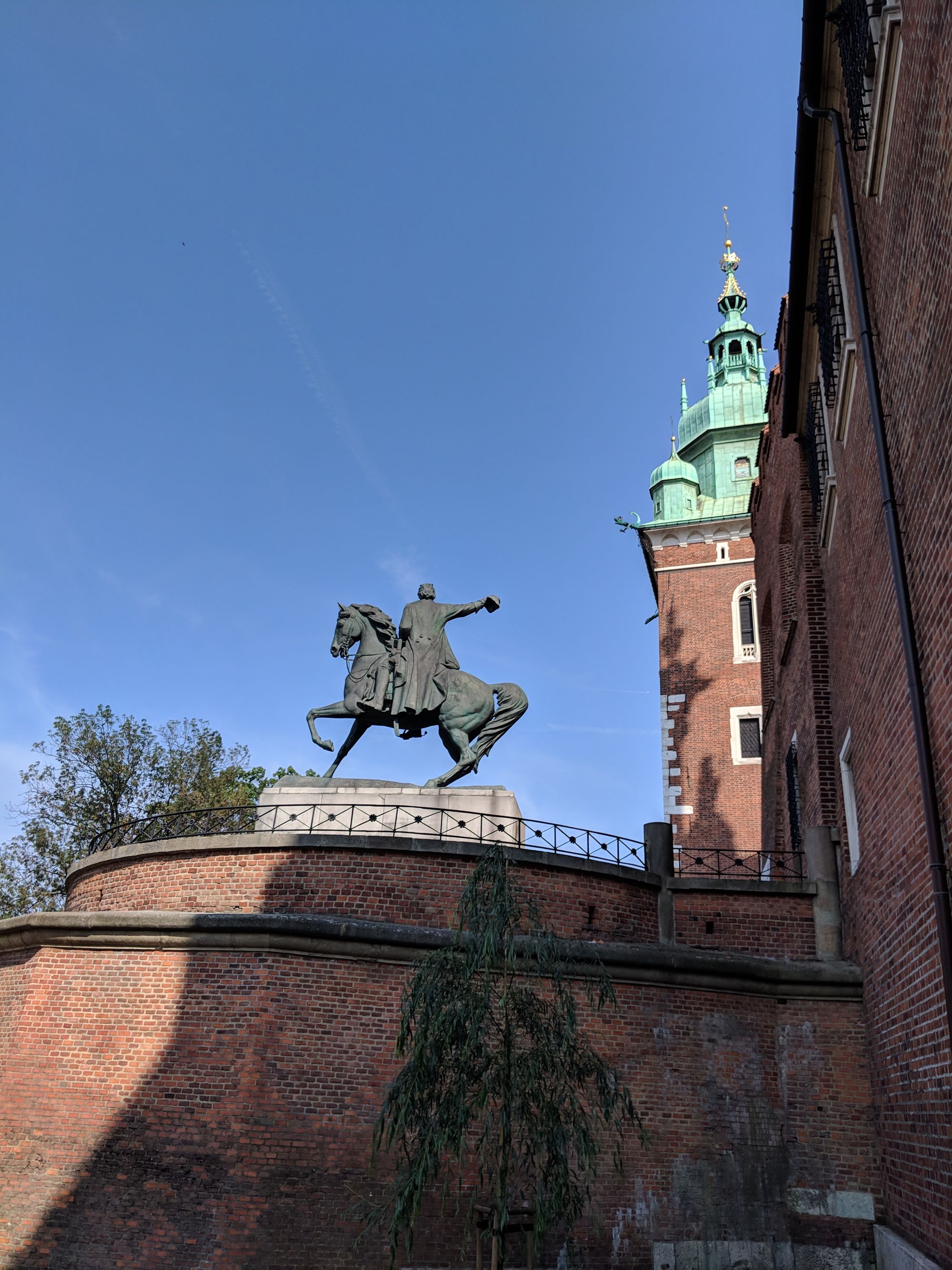
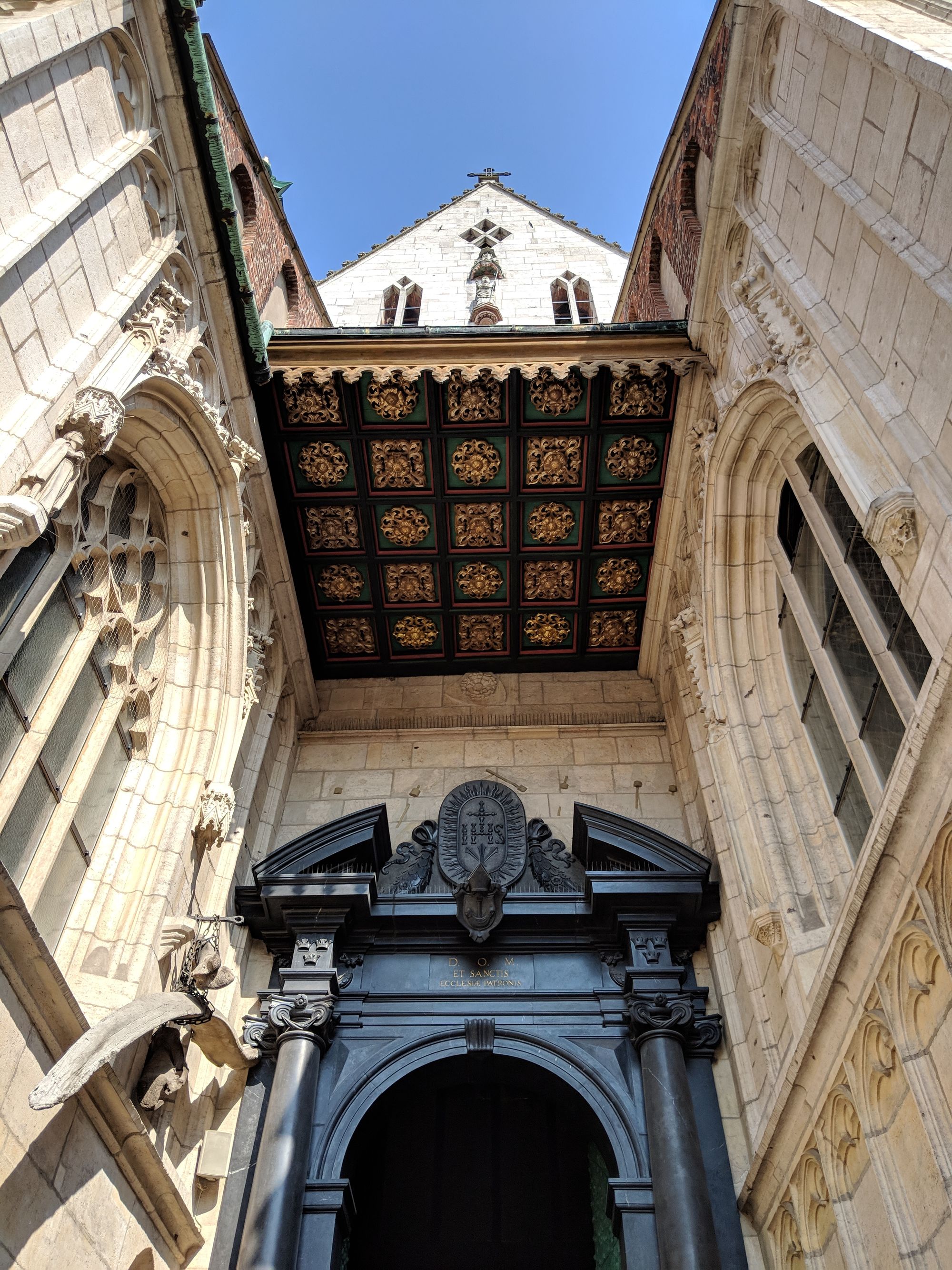
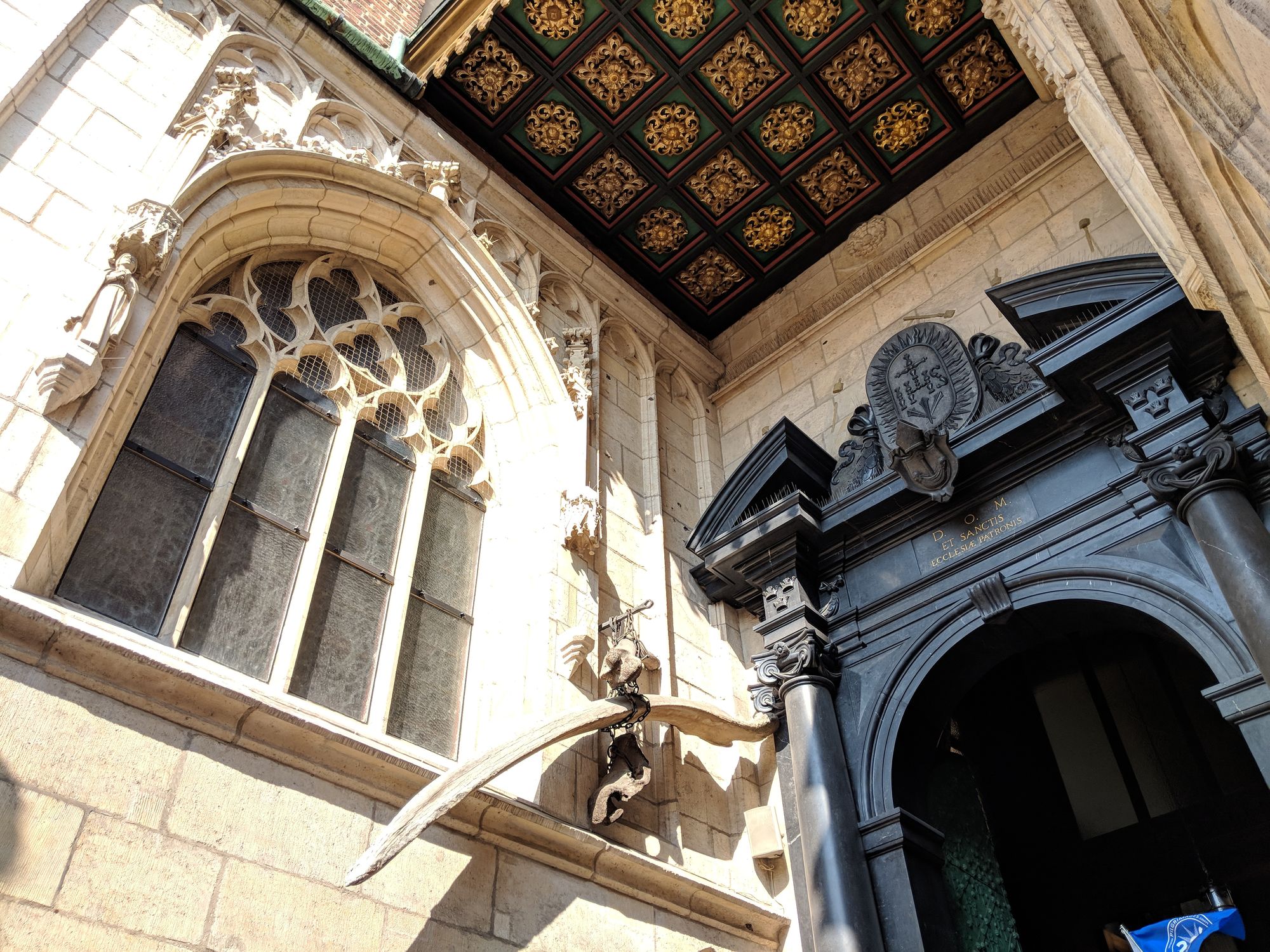
That's a mammoth's tooth hanging to the left of the doorway! Or, was it a whale's bone....?
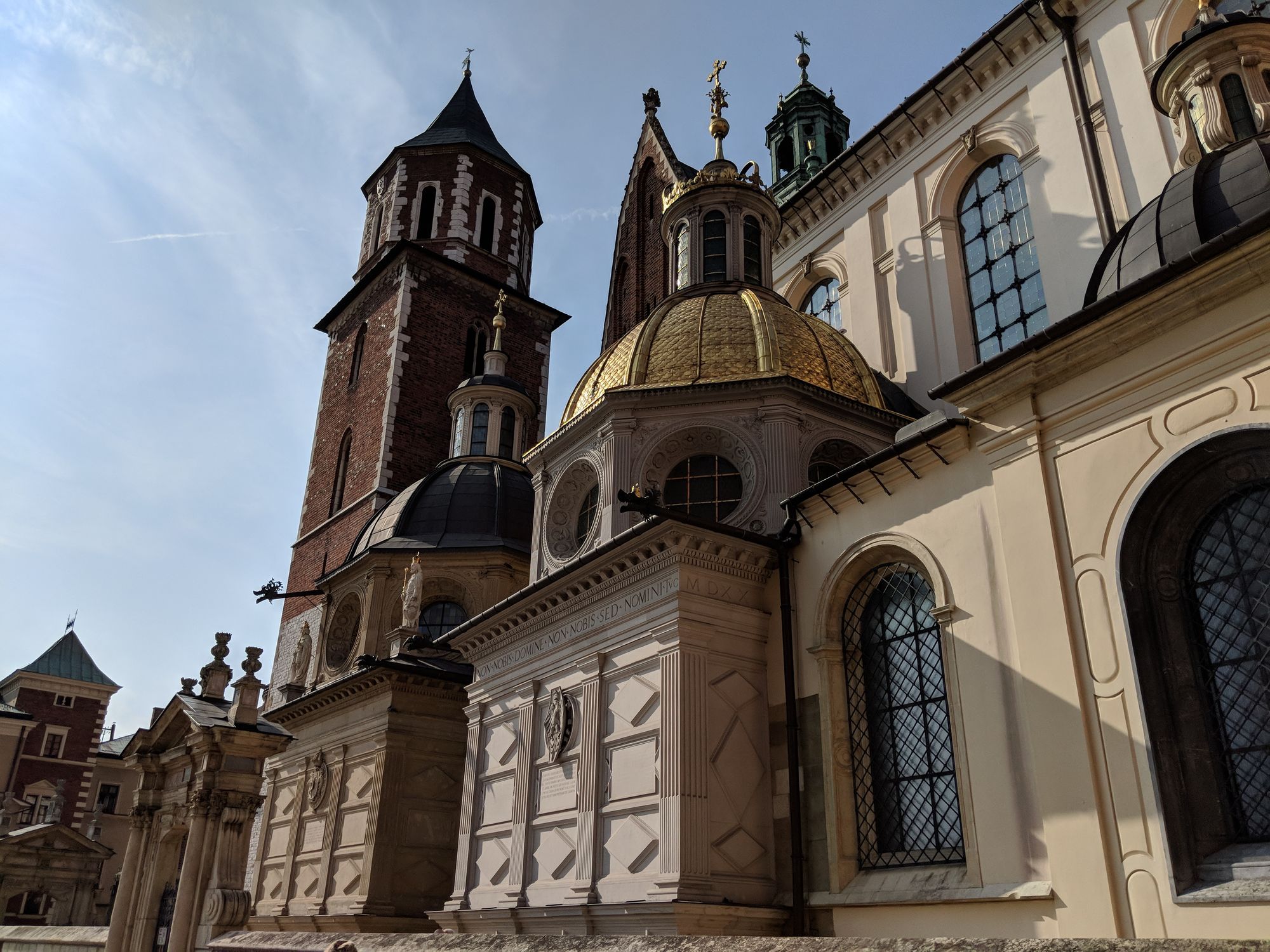
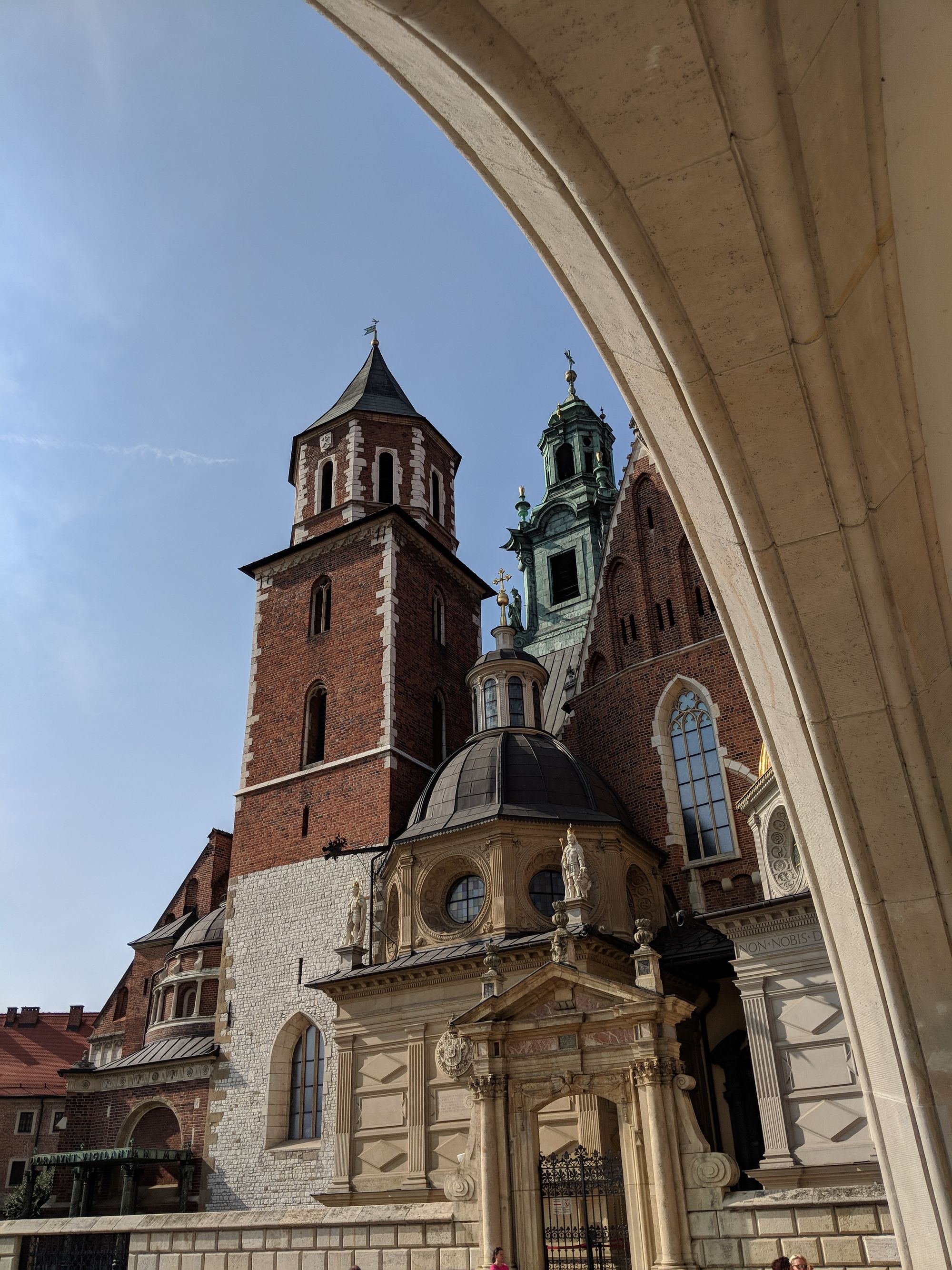
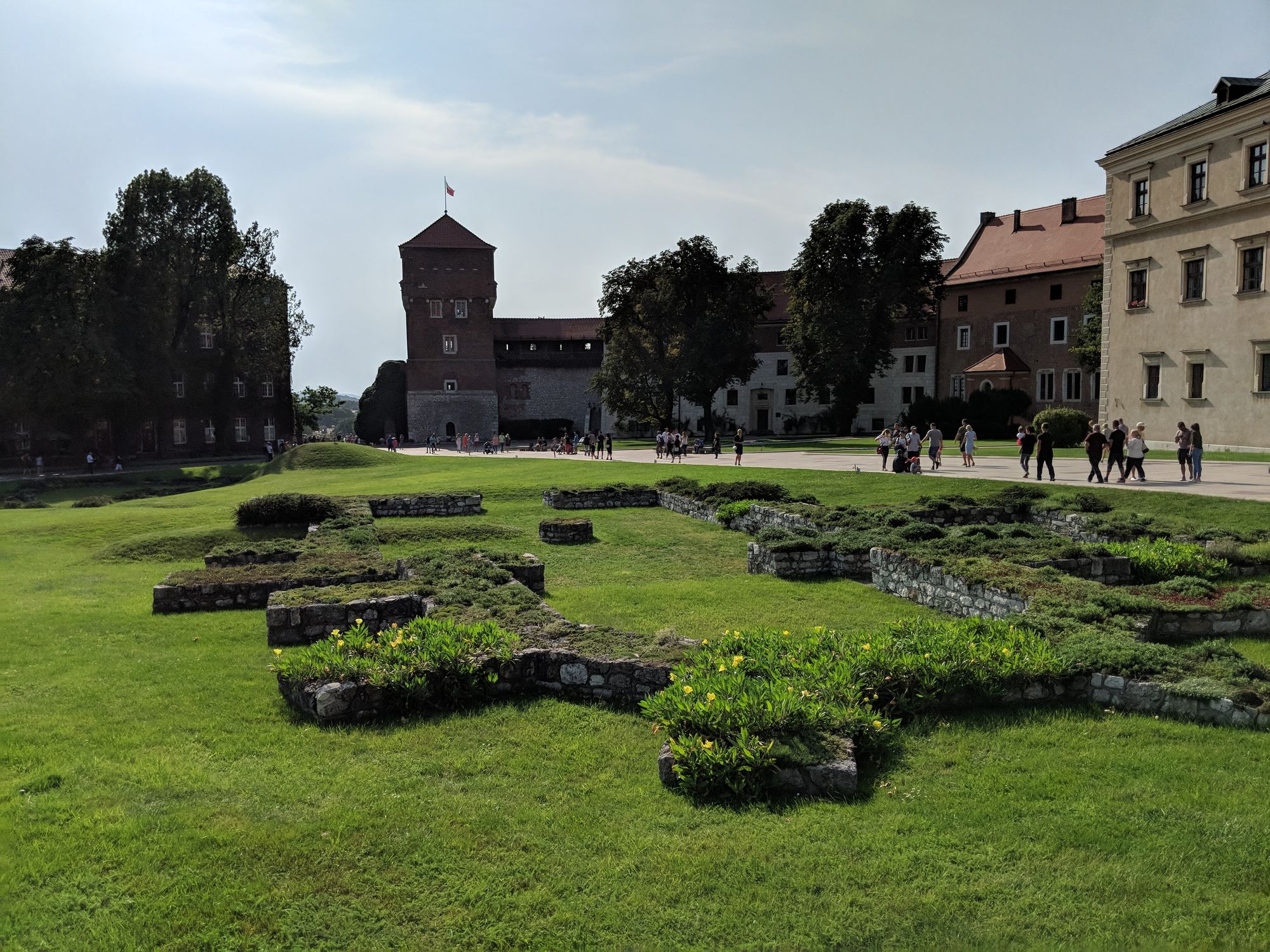
Ruins of really old churches and other religious buildings. Some conquering army knocked them down to make room for military training grounds.
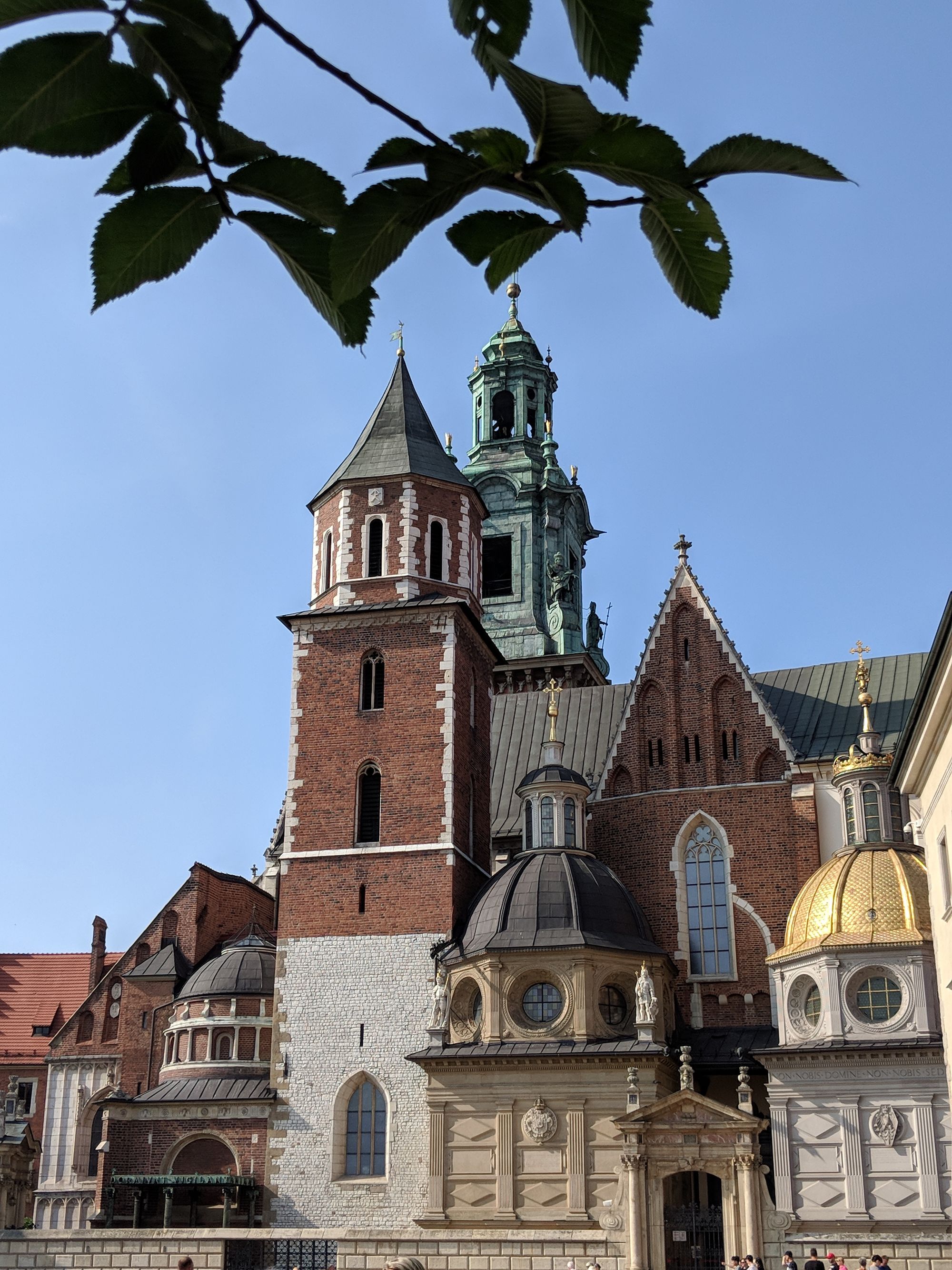
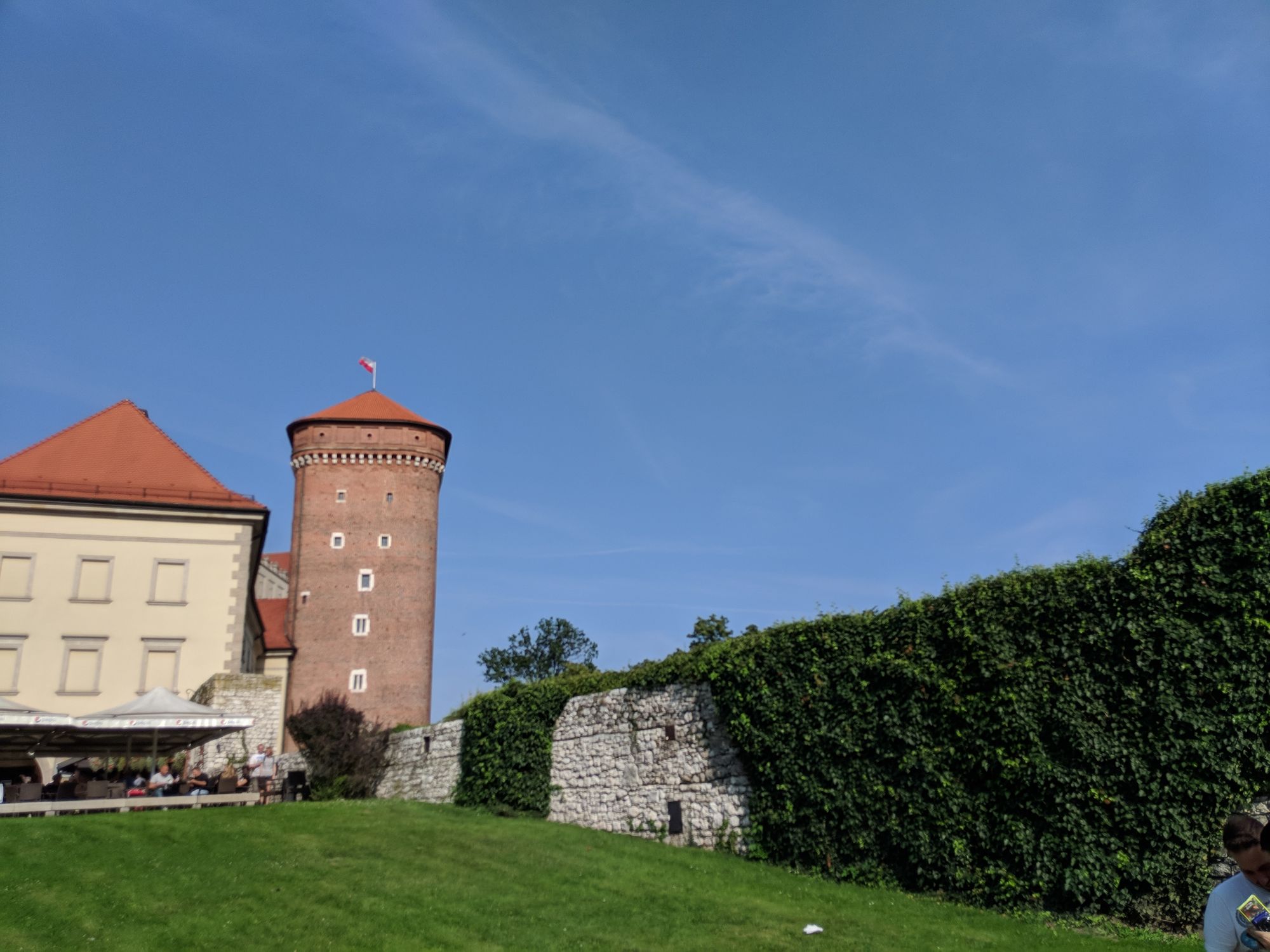

Dragon of Krakow (statue), in front of his lair (natural cave formation). He breathes fire every few minutes.
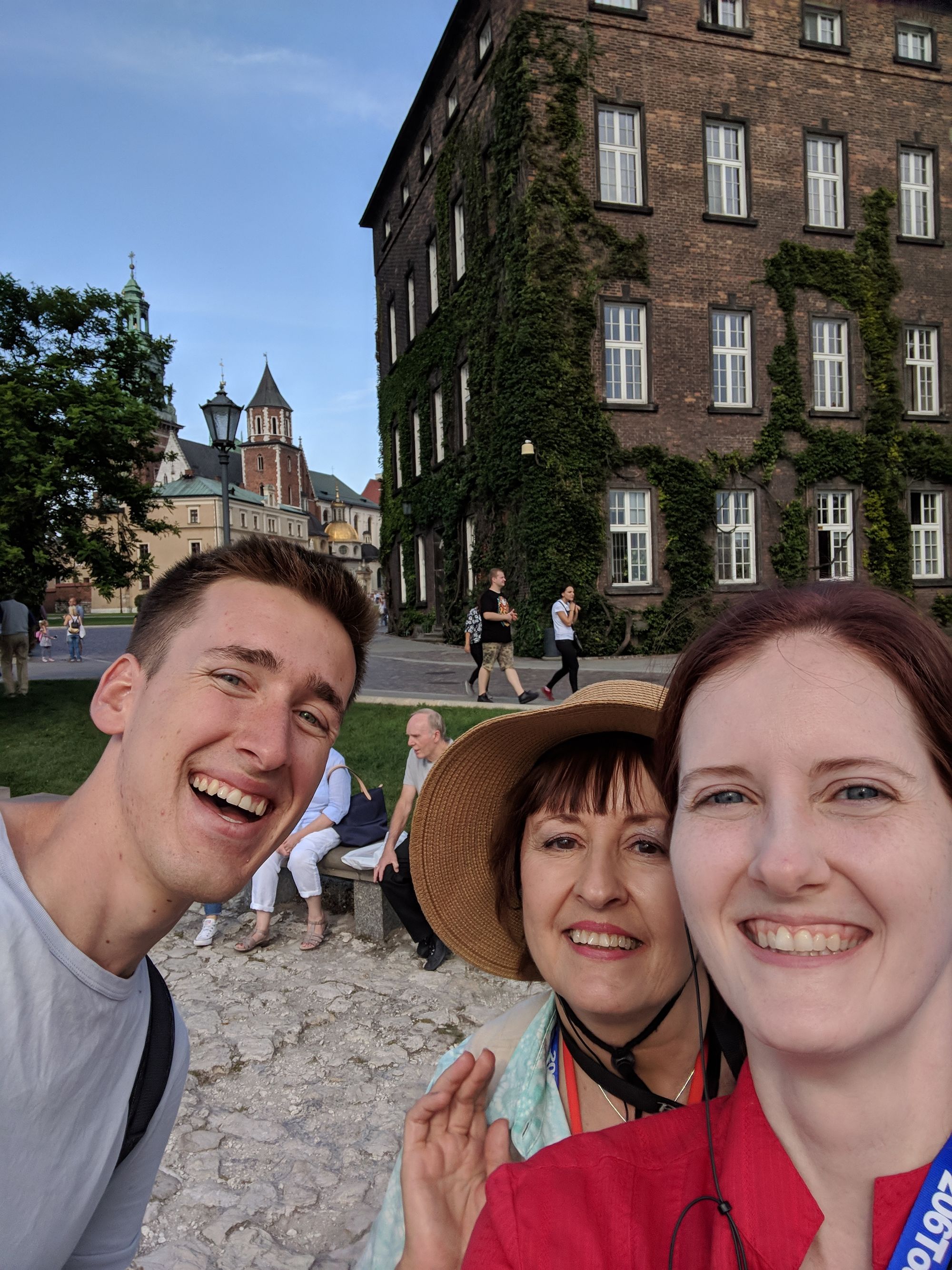
Look who we legitimately ran into while exploring the city! (Cousin, Henry from USA)
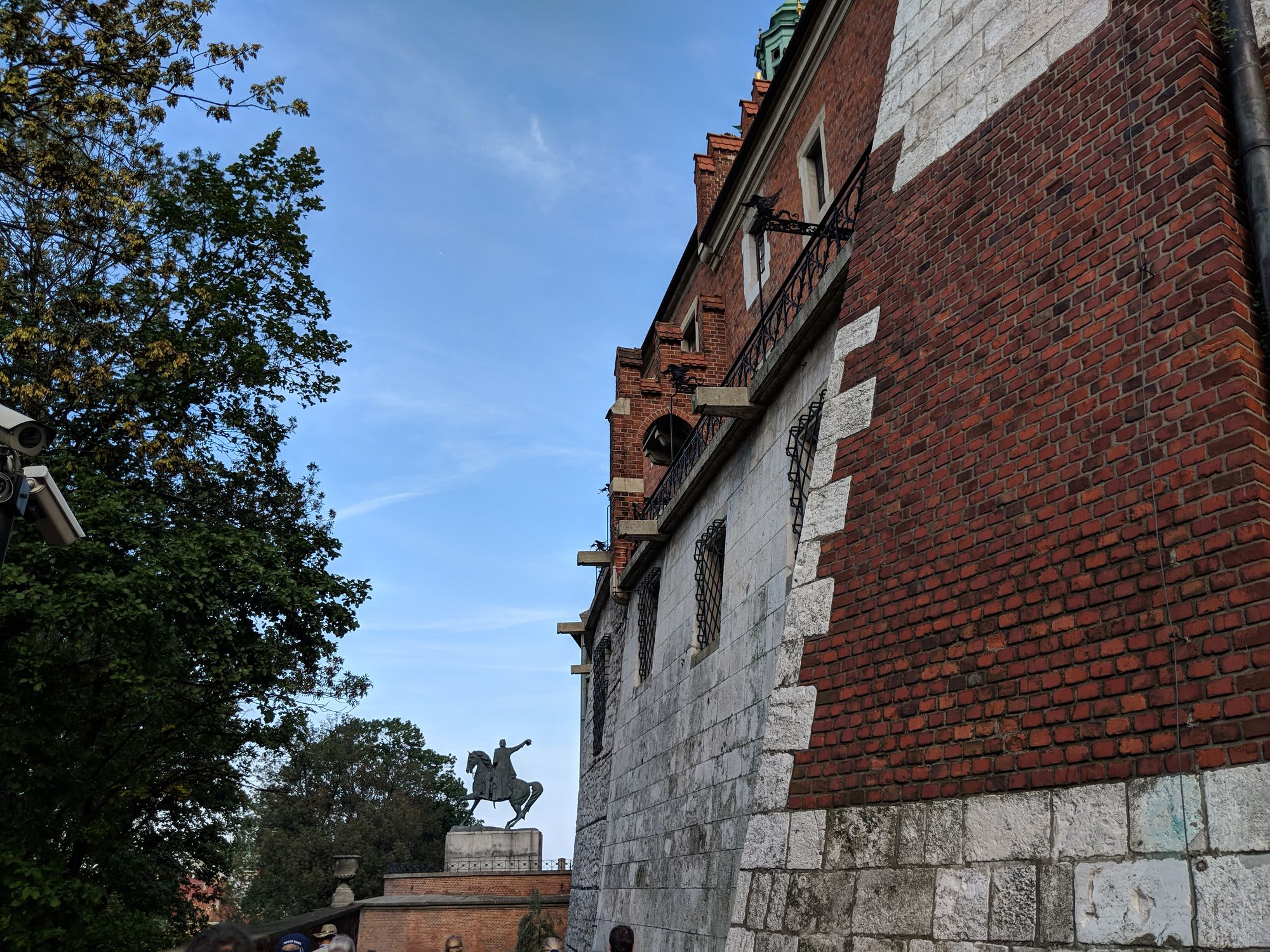

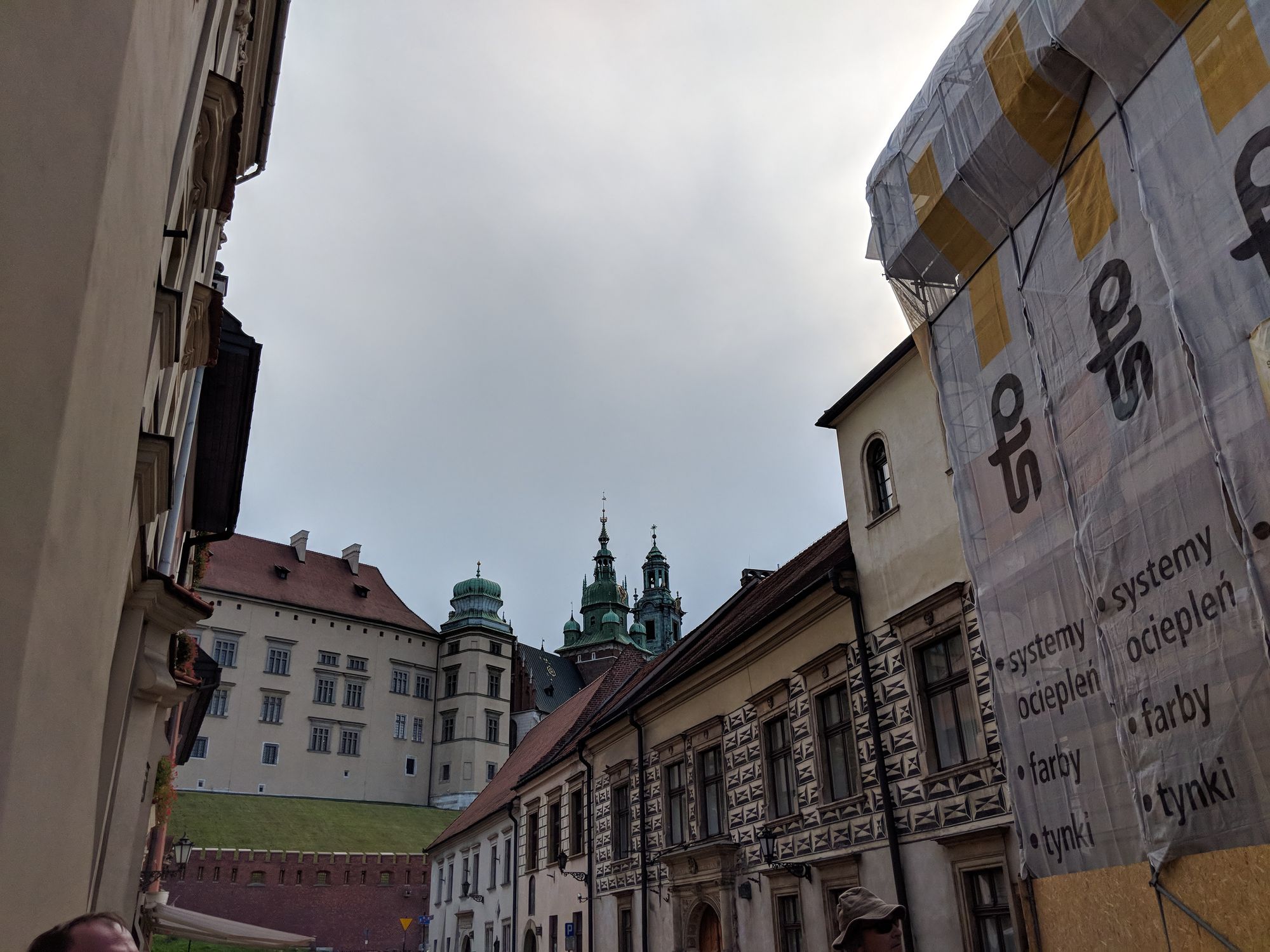
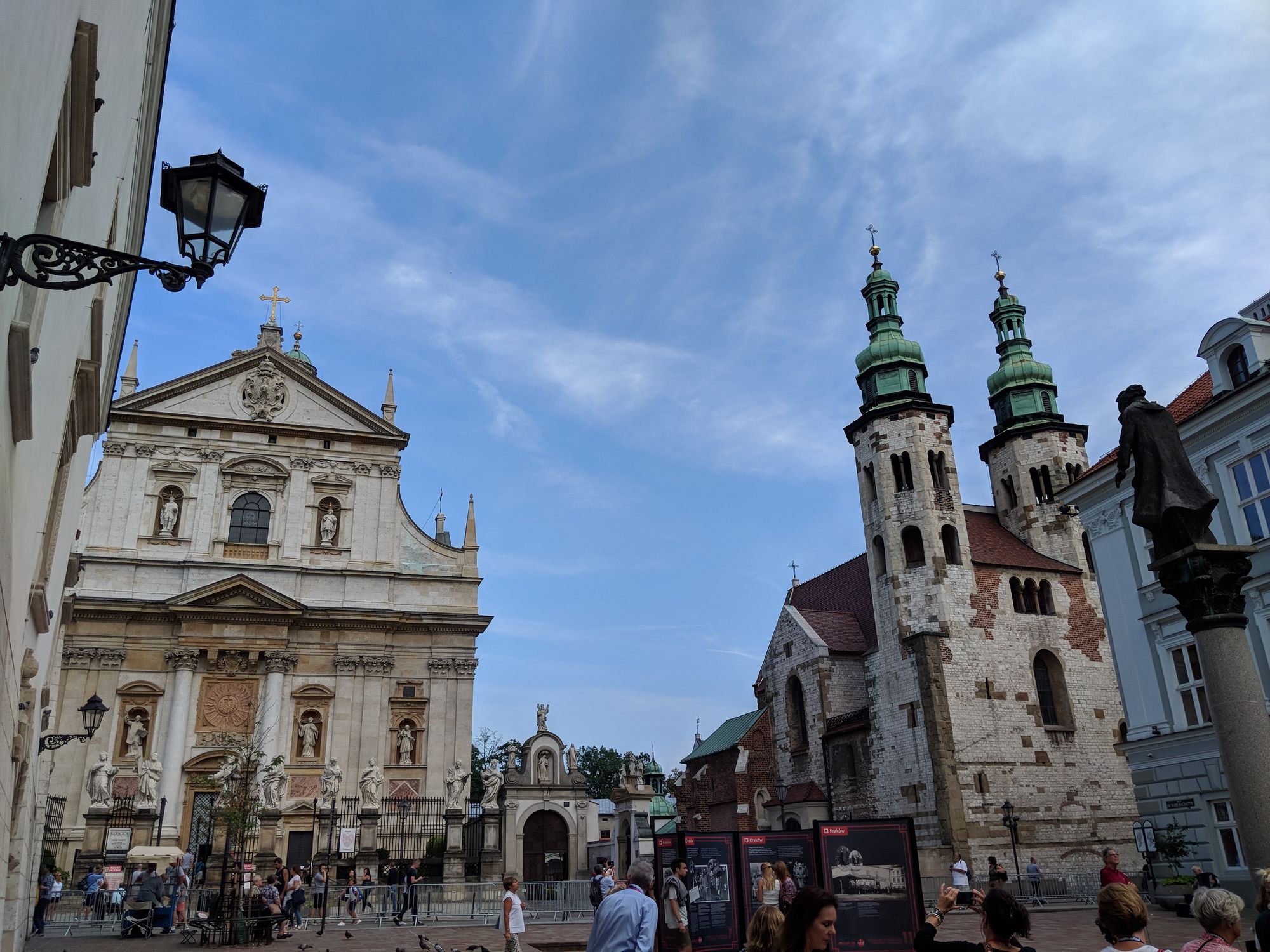
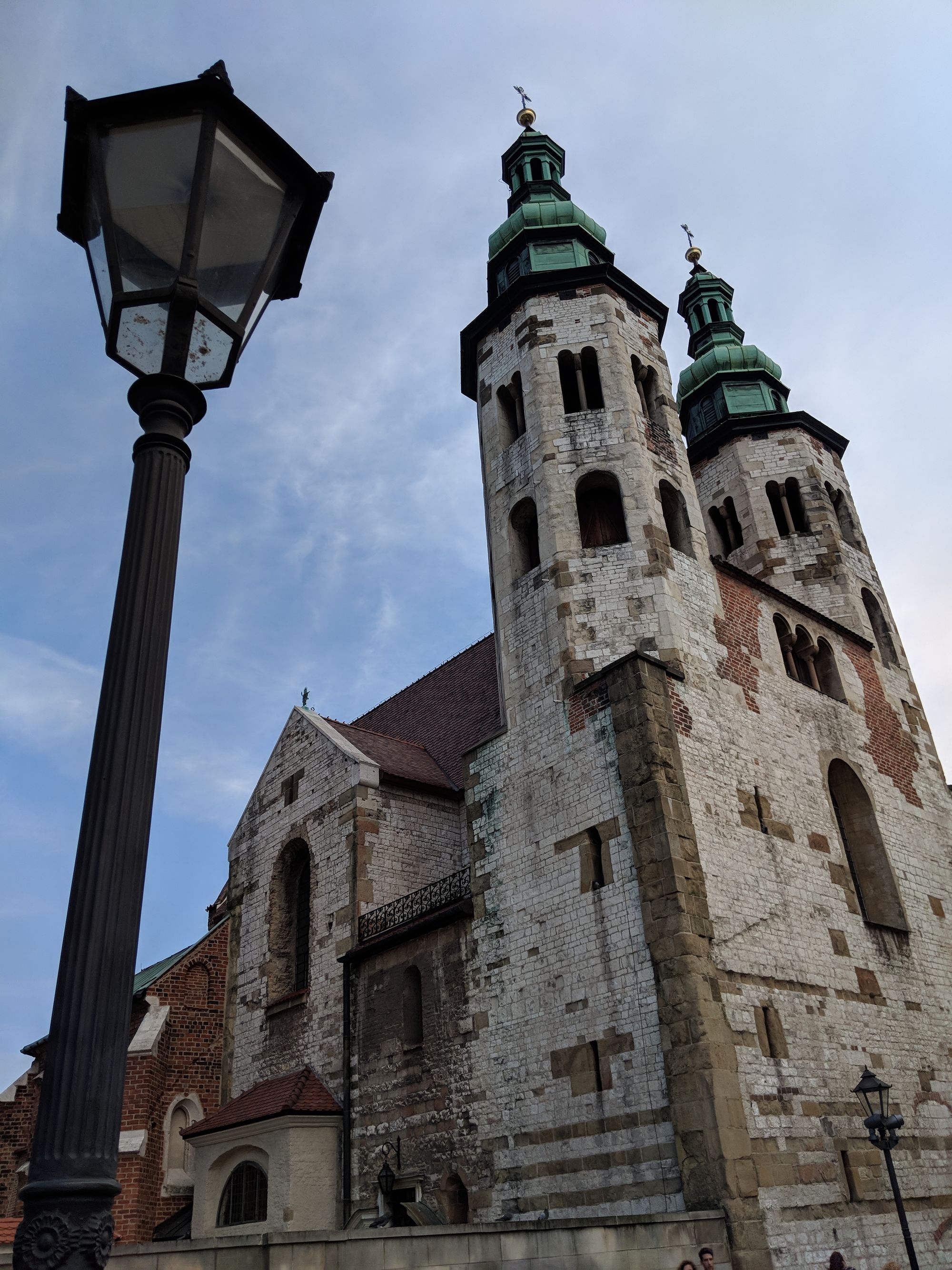
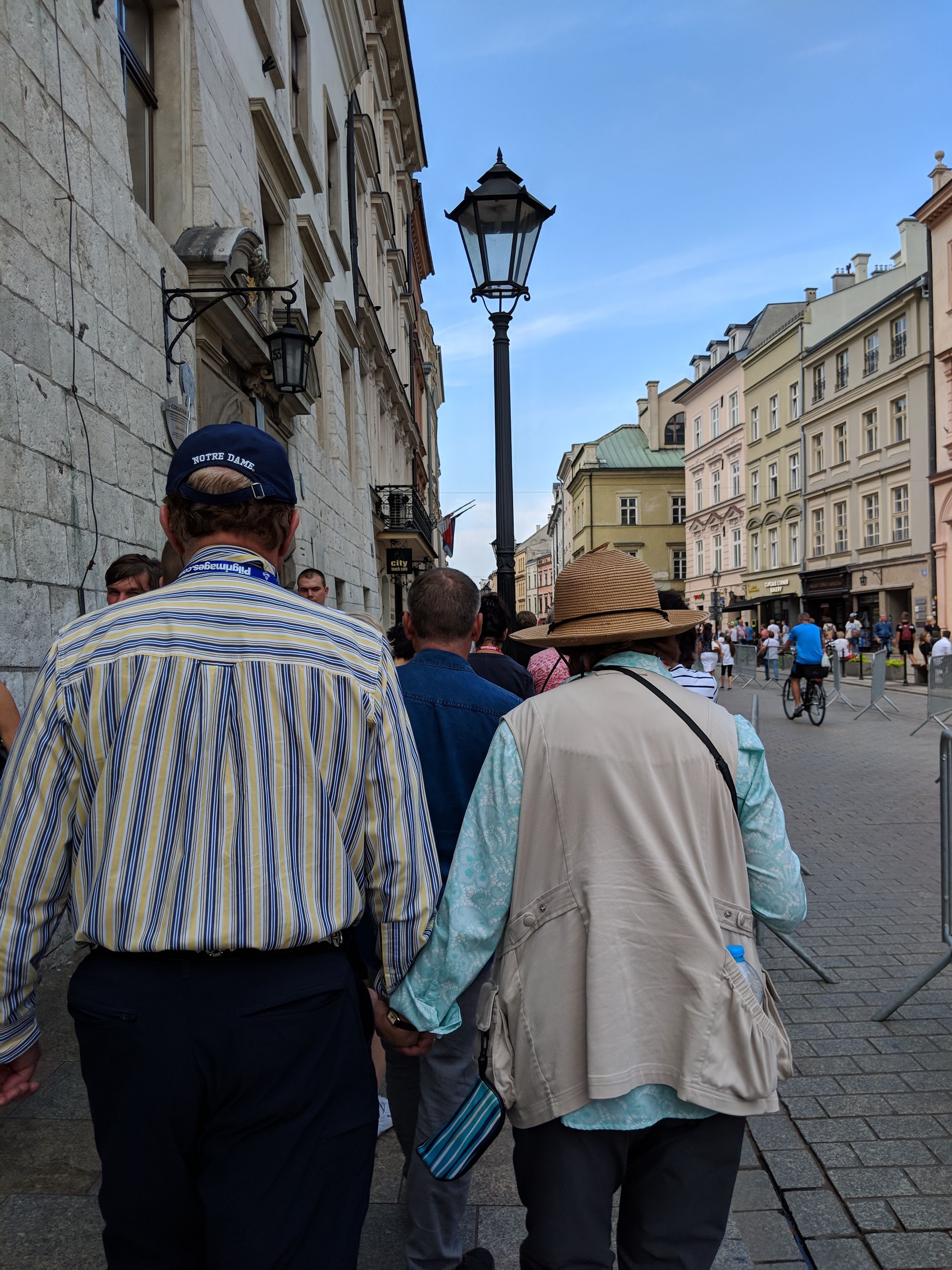
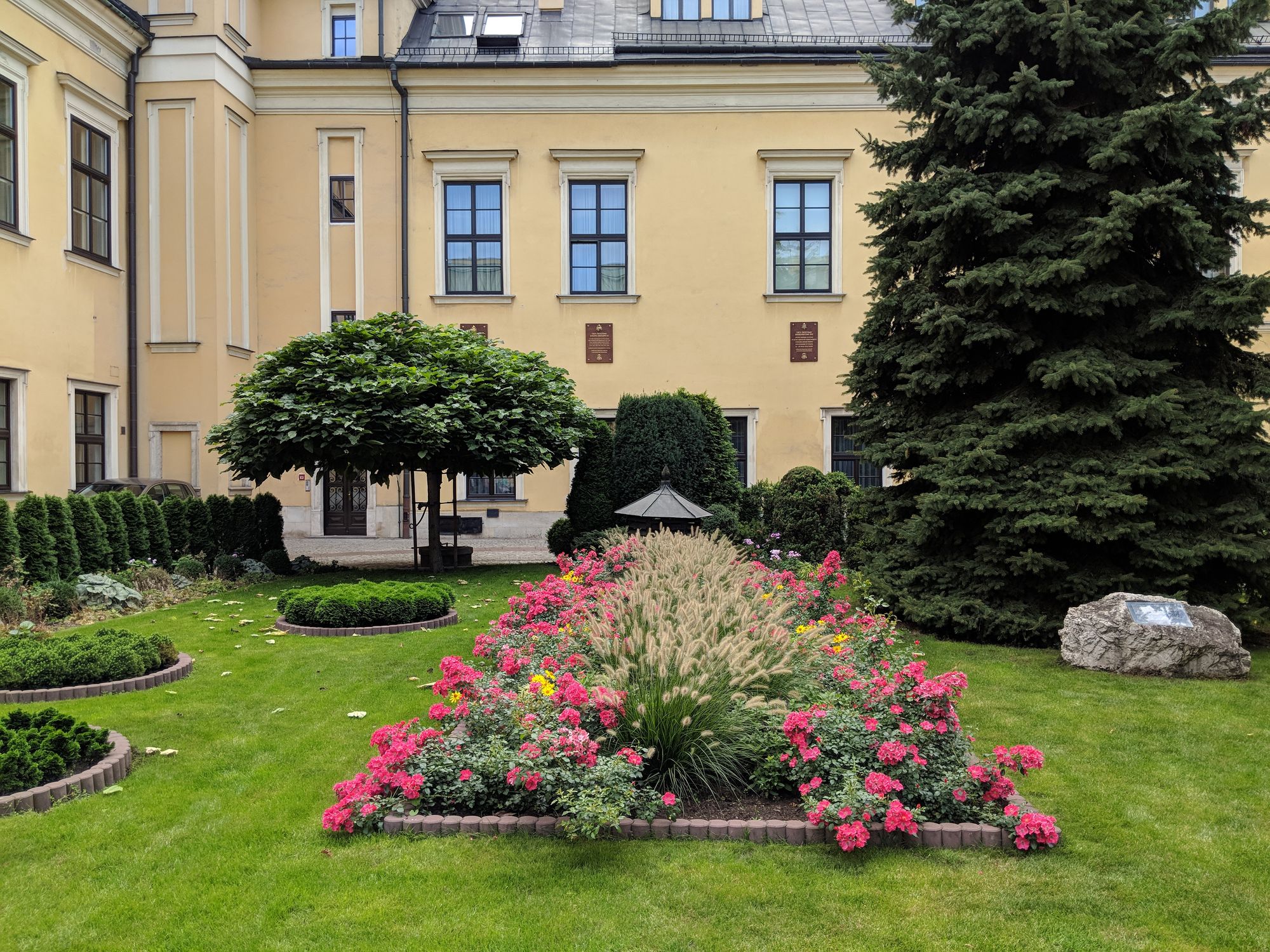
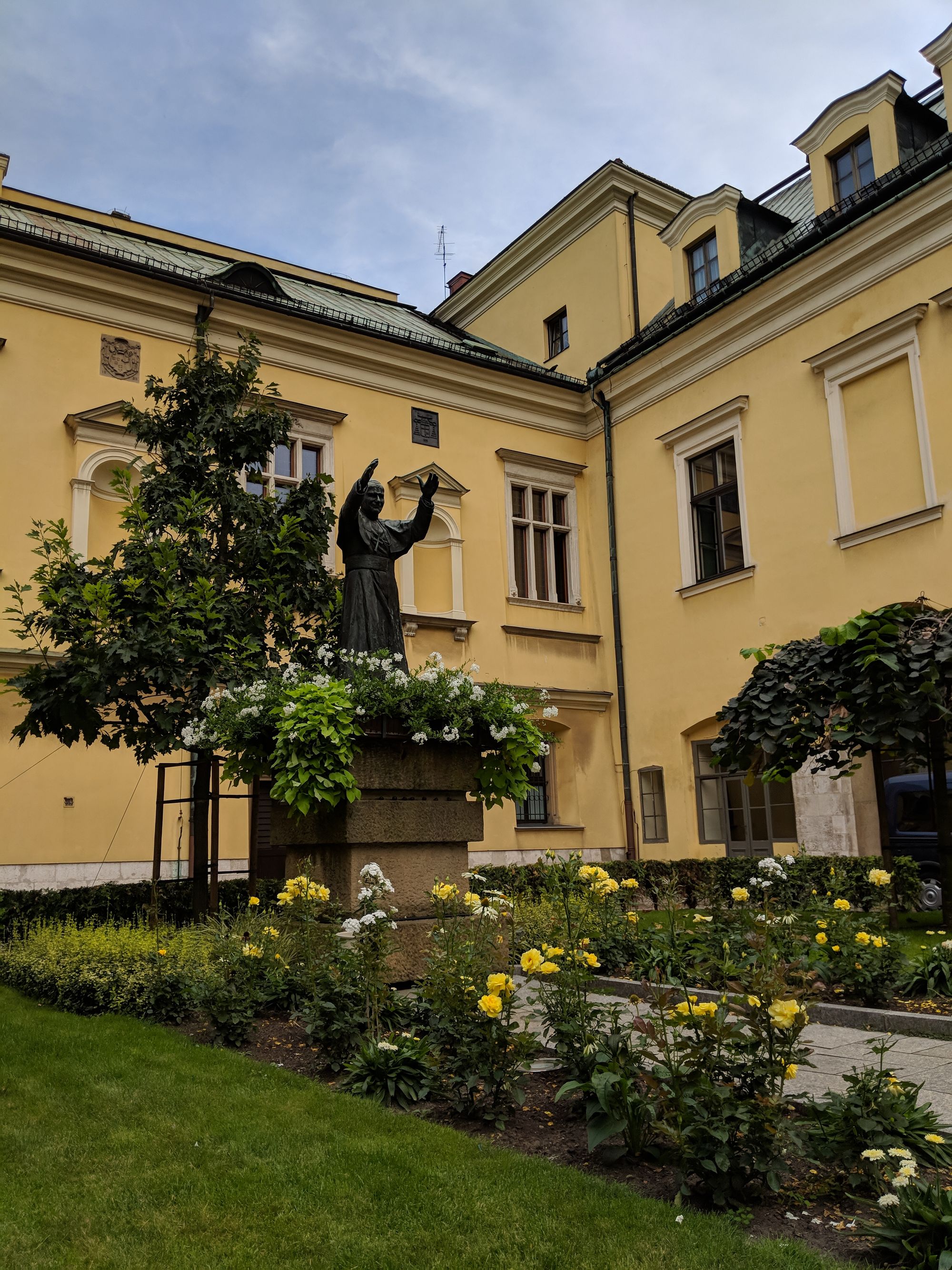
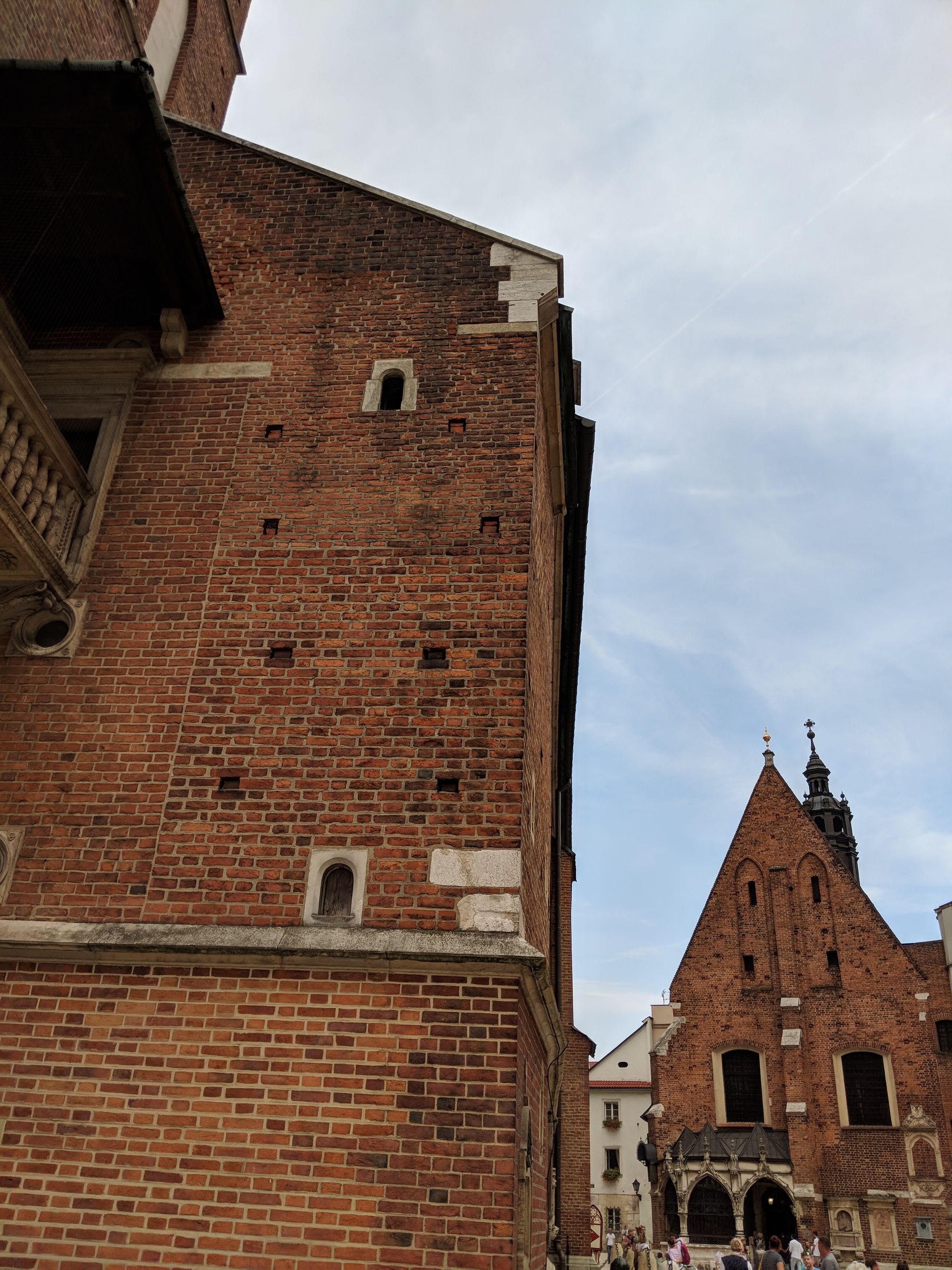
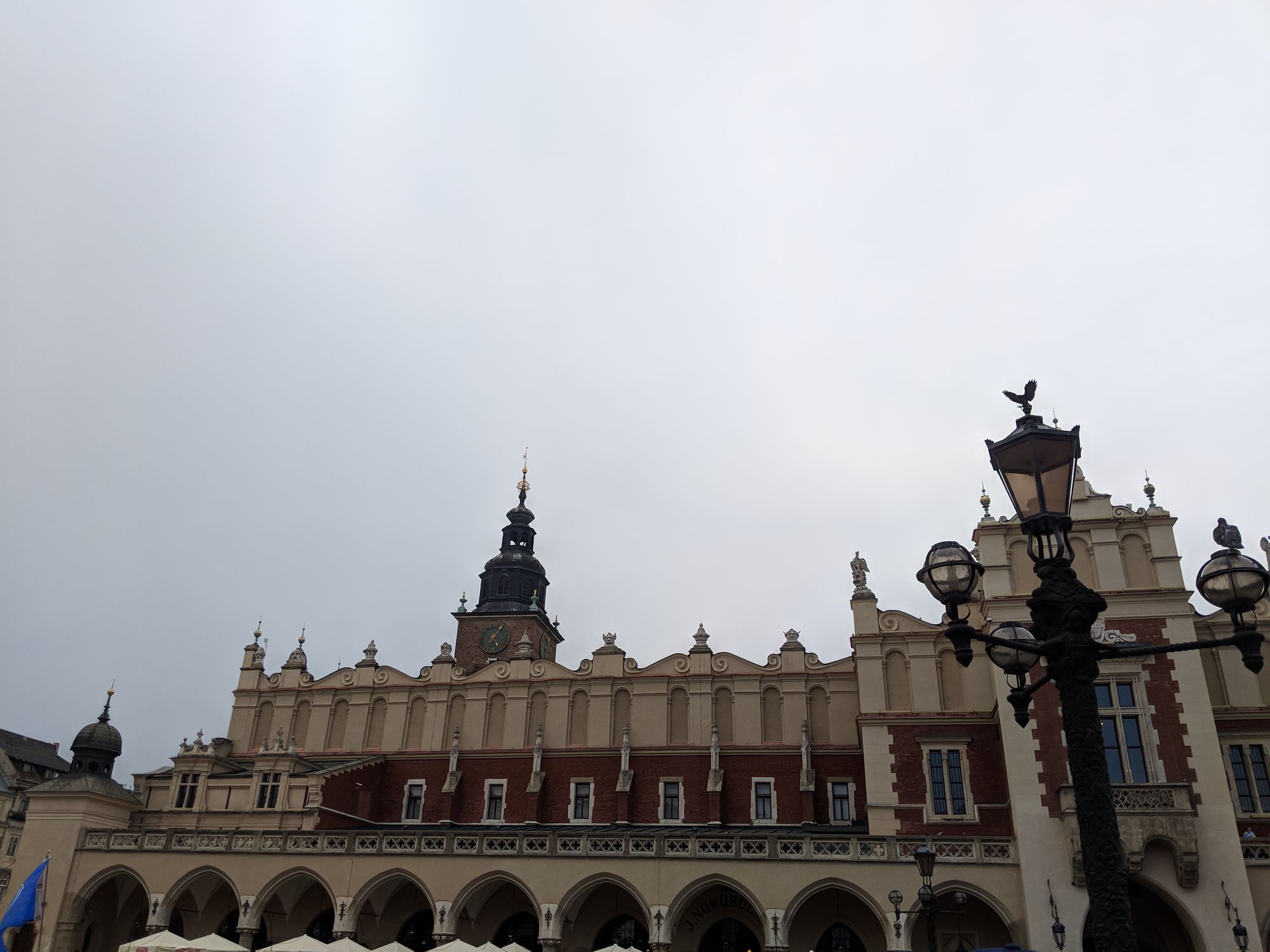
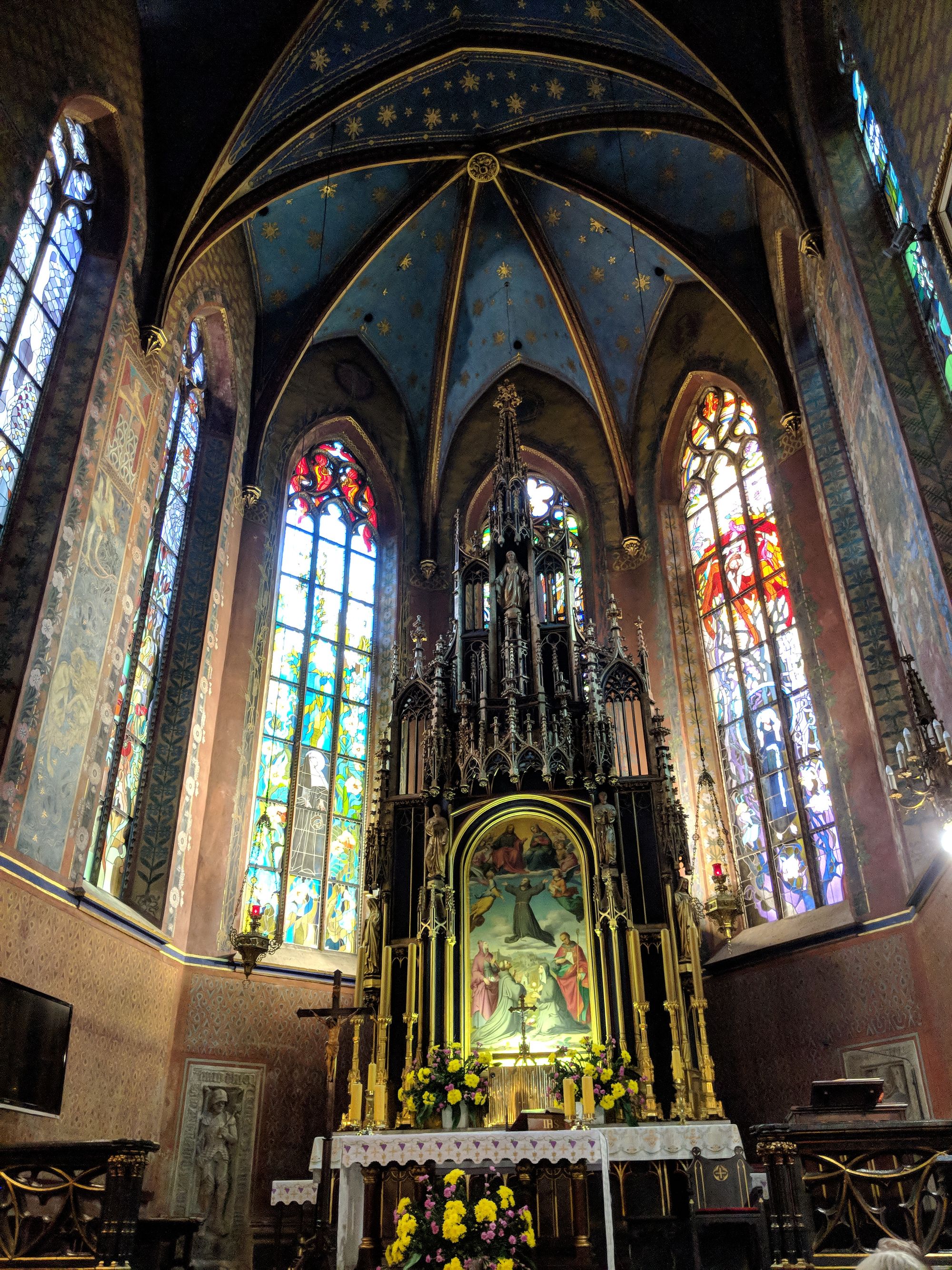
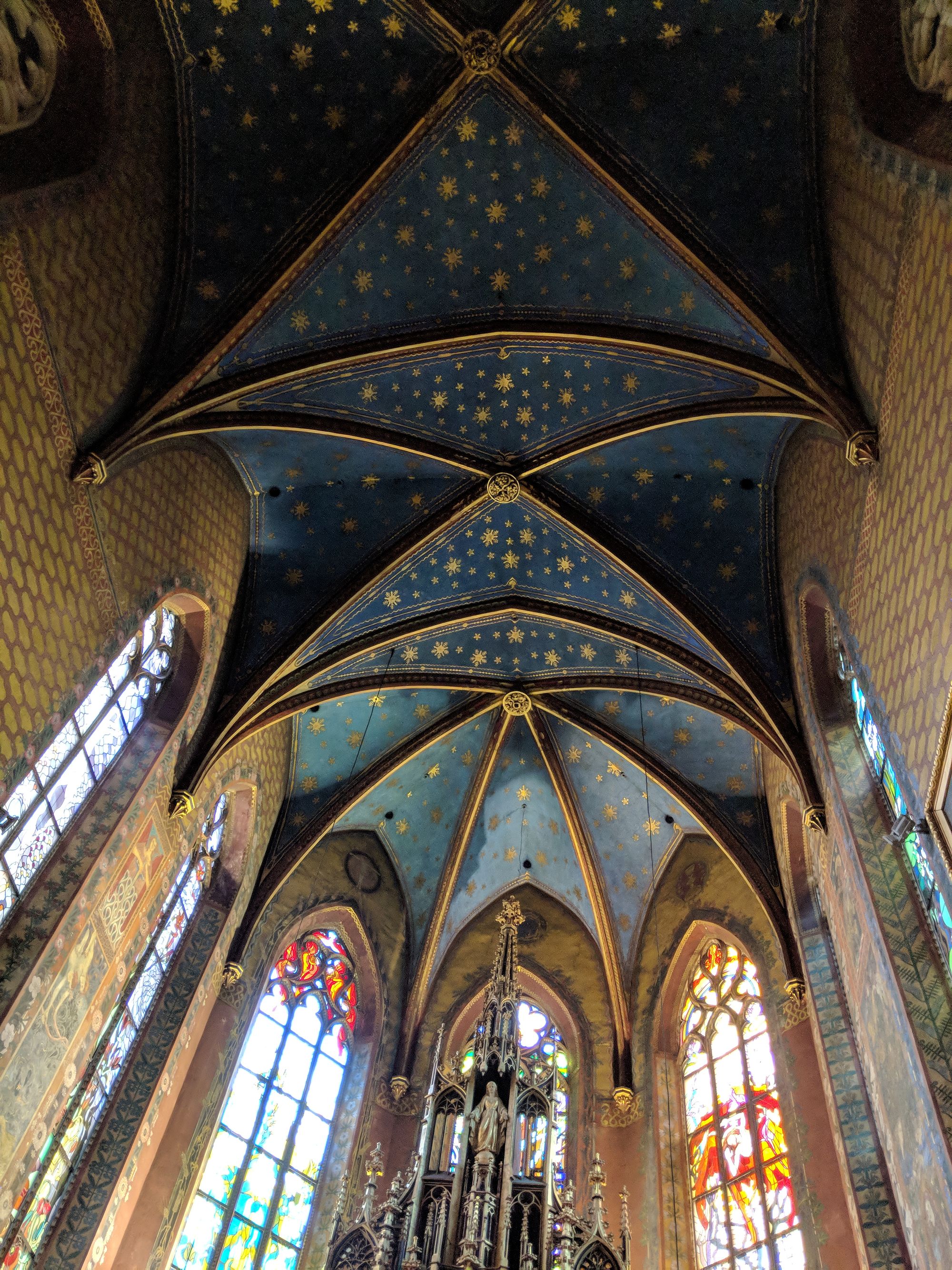
It looks deeper, here, but this ceiling is painted the most beautiful shade of teal!!!
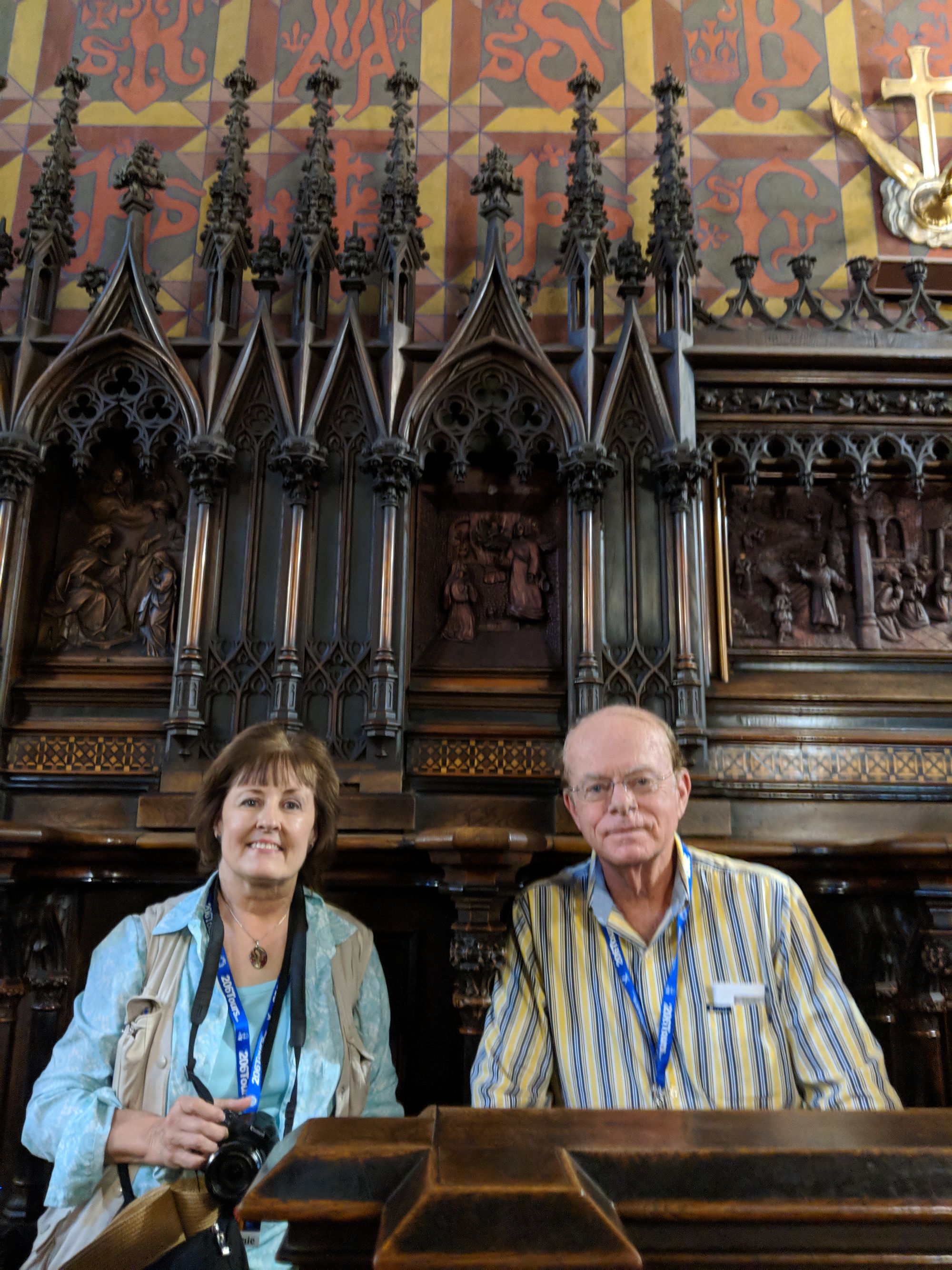
Waiting for our final Mass in Poland to begin.
